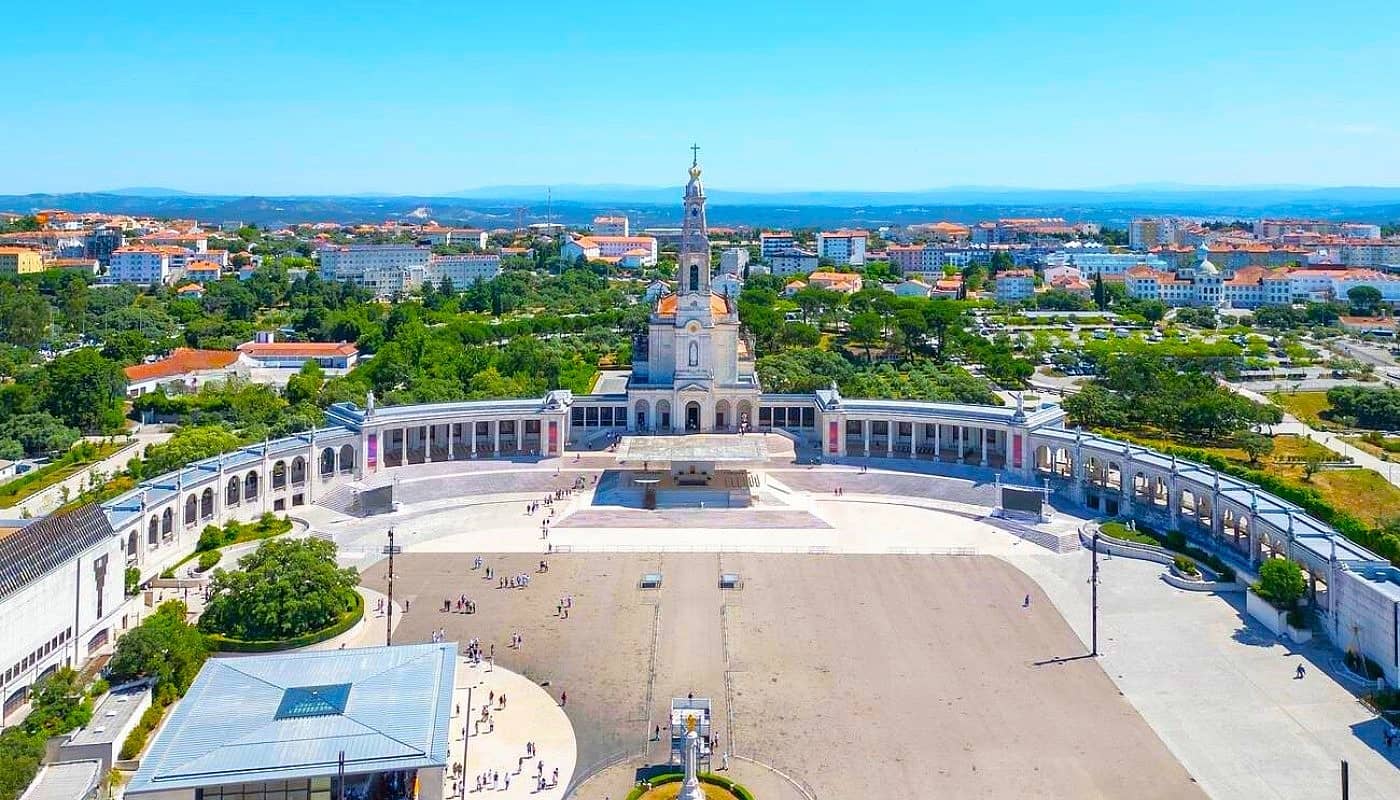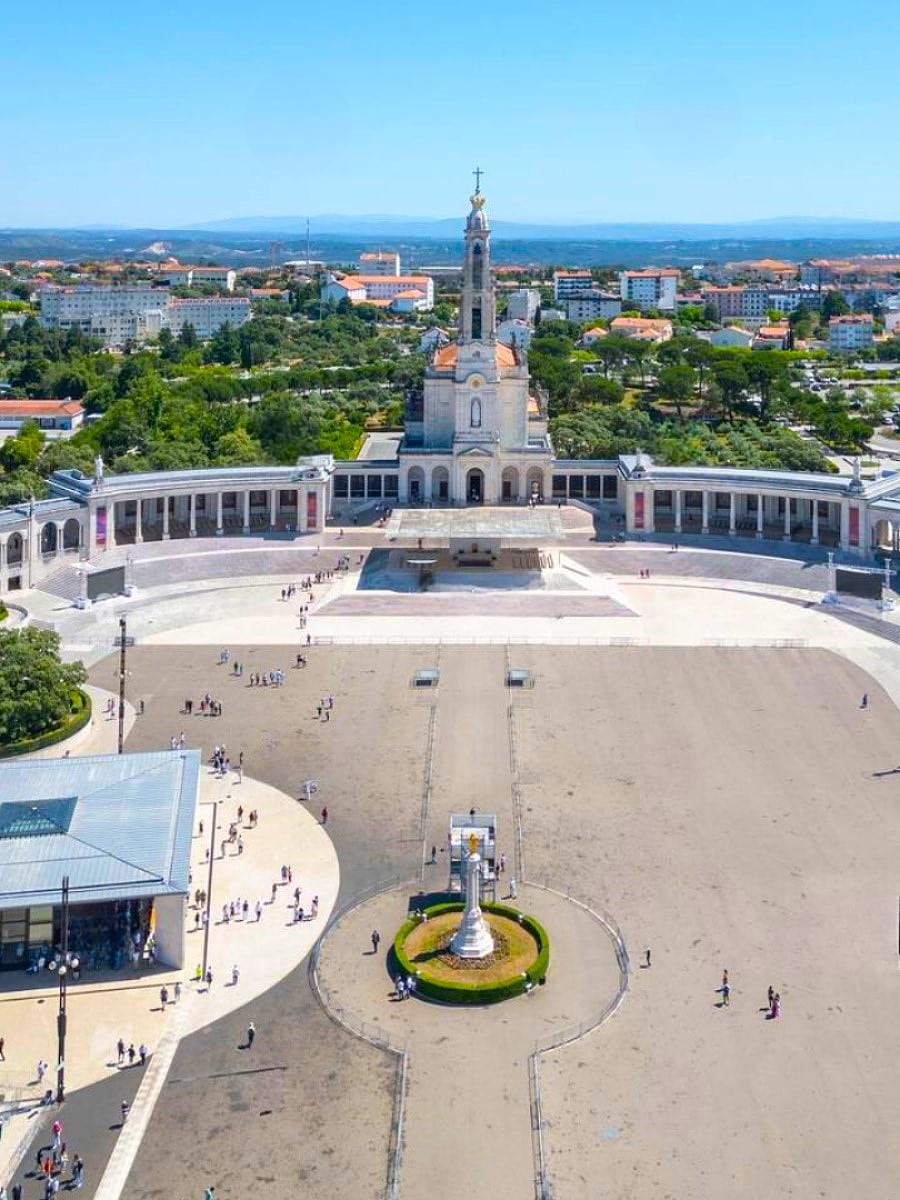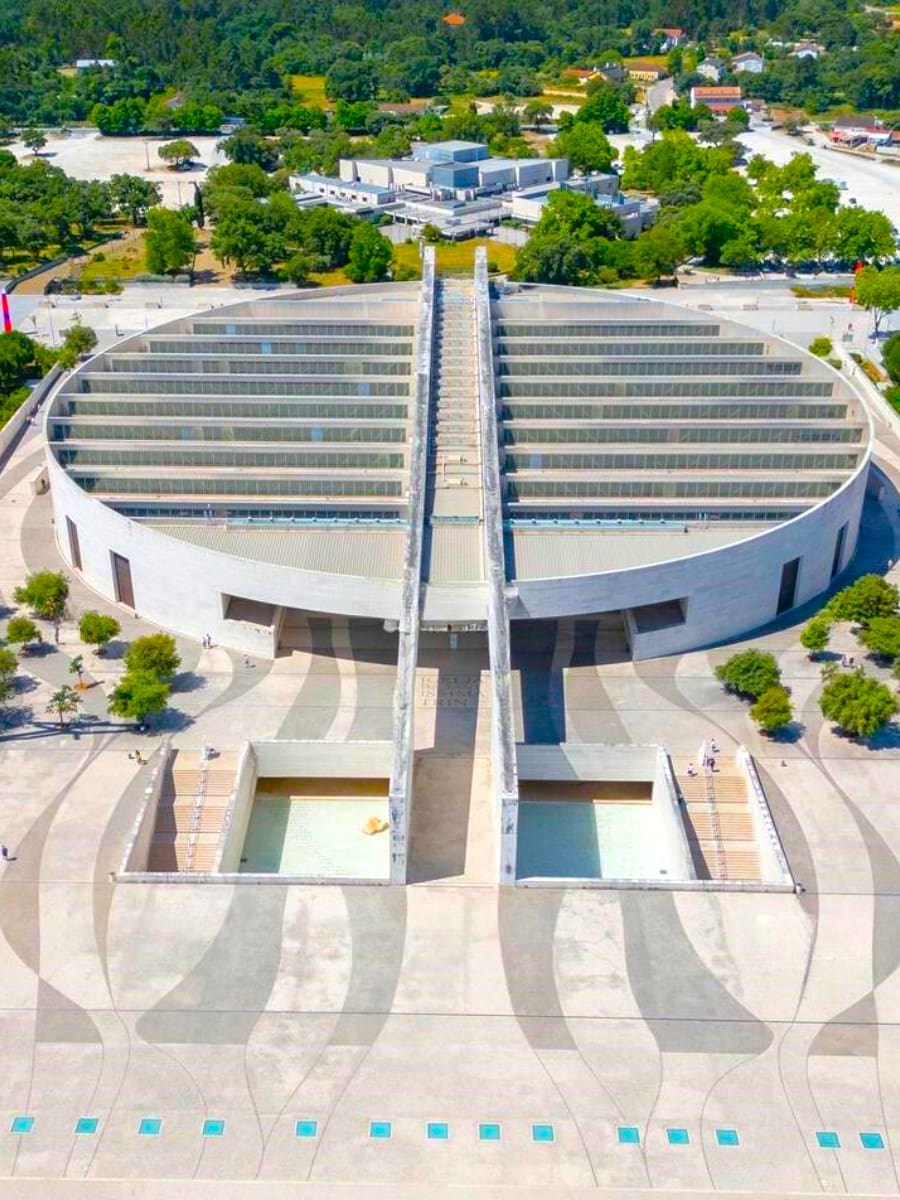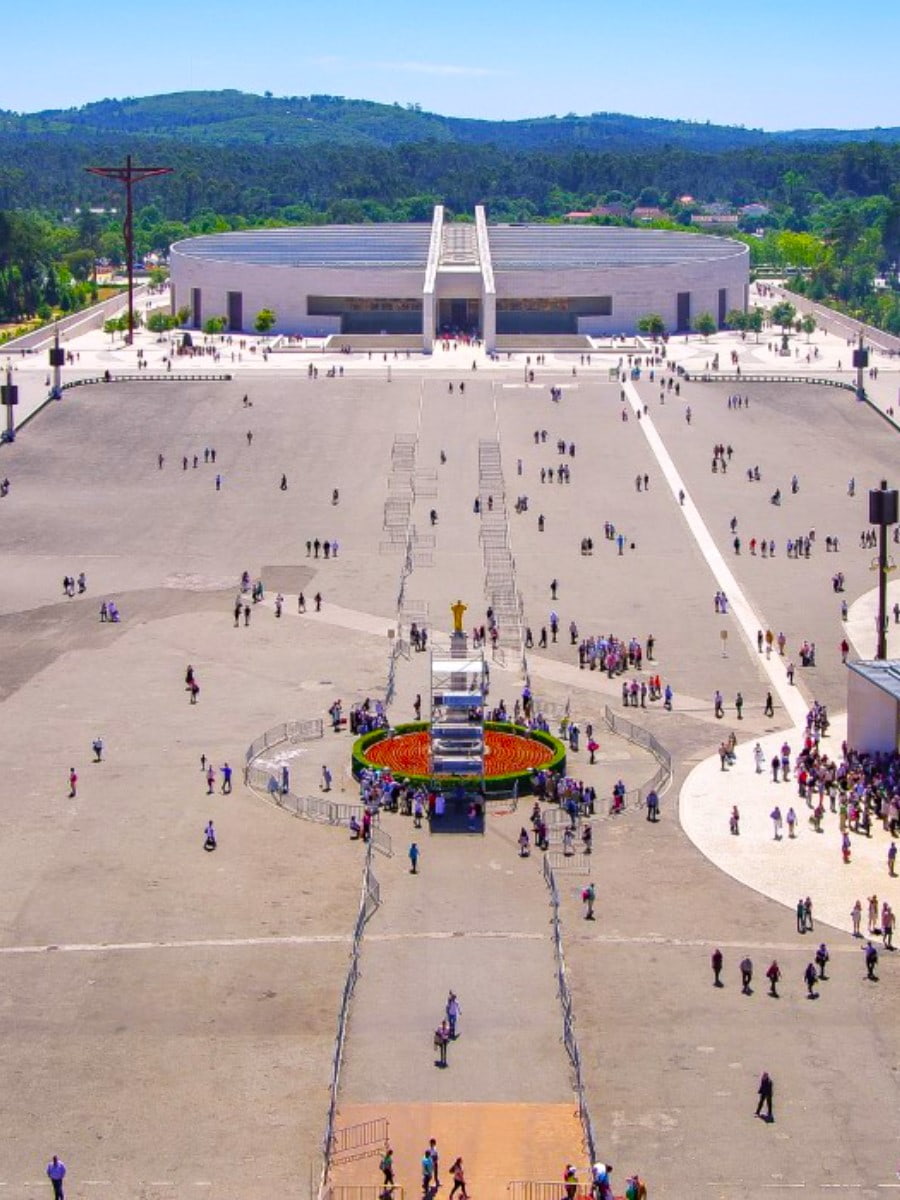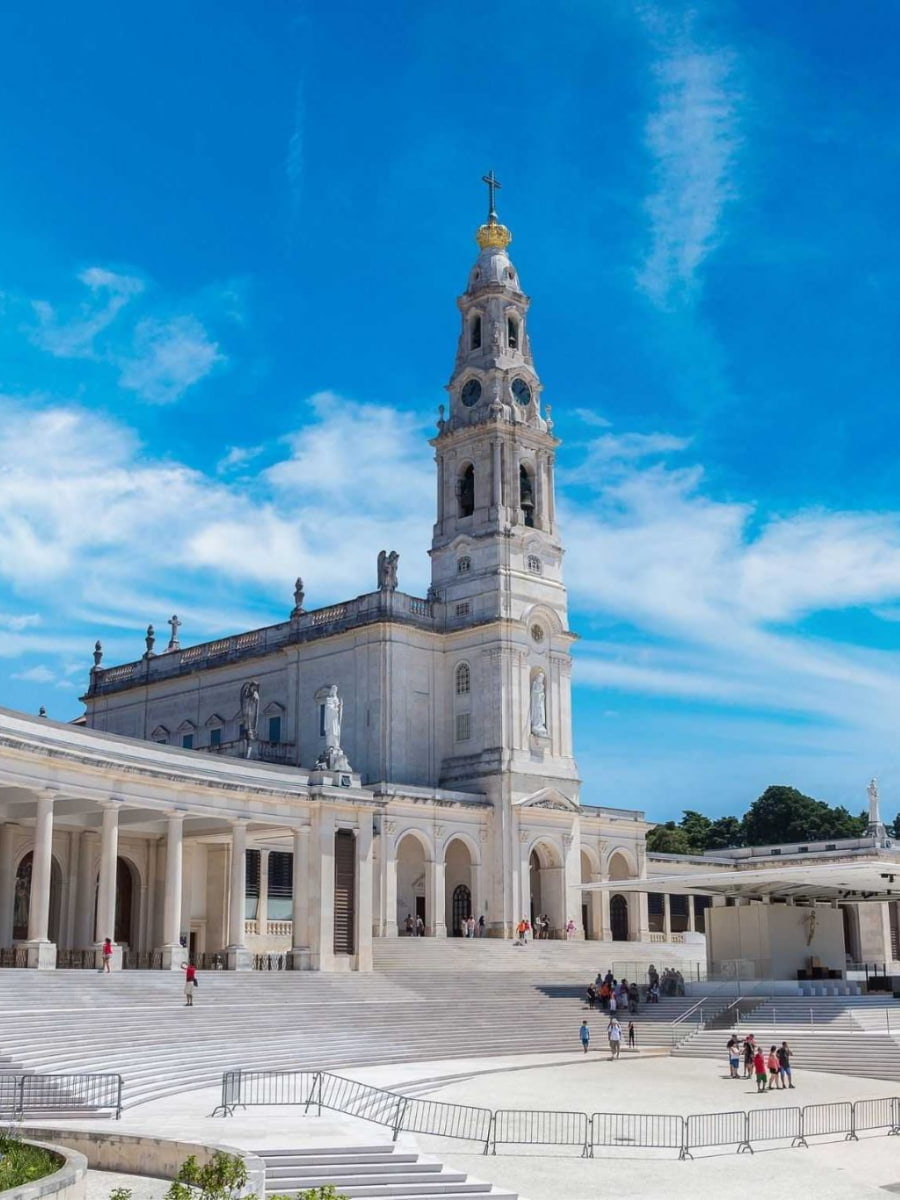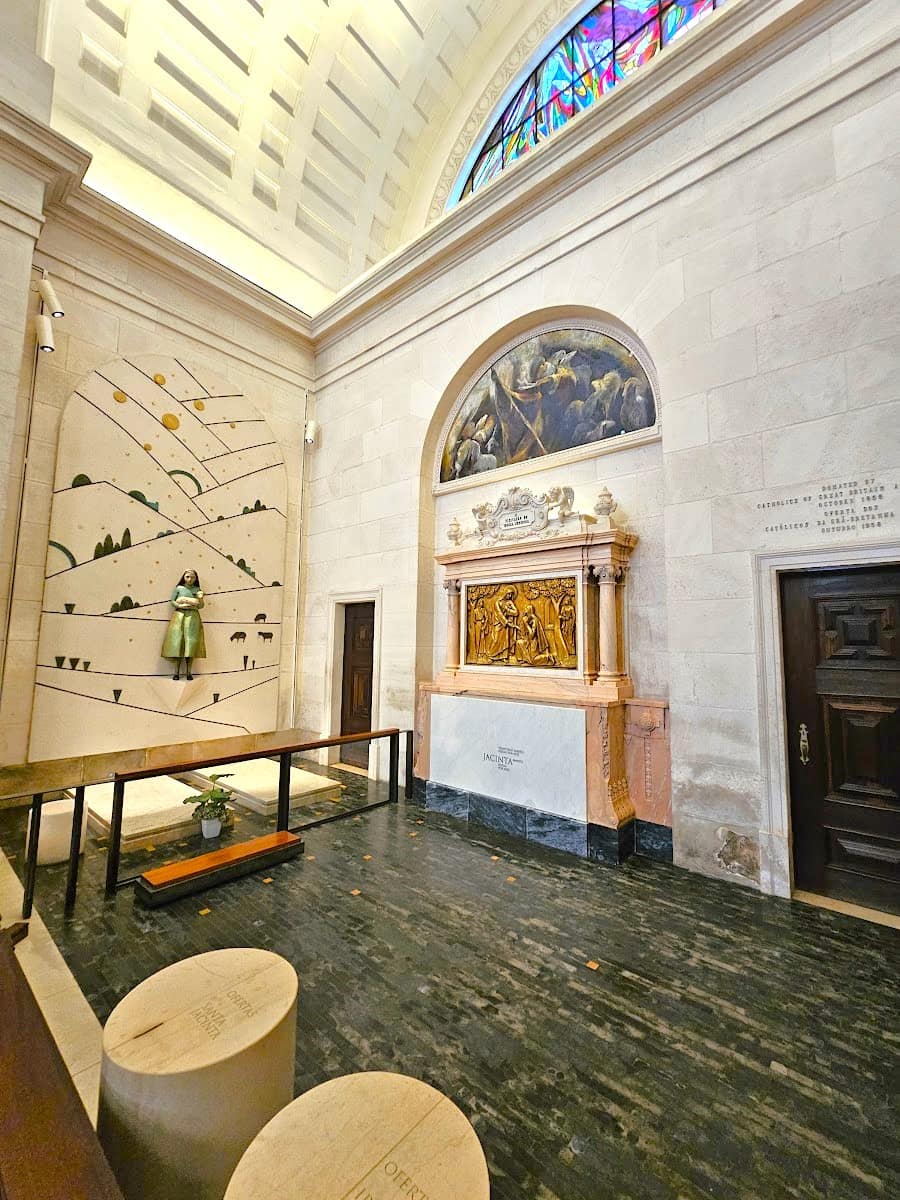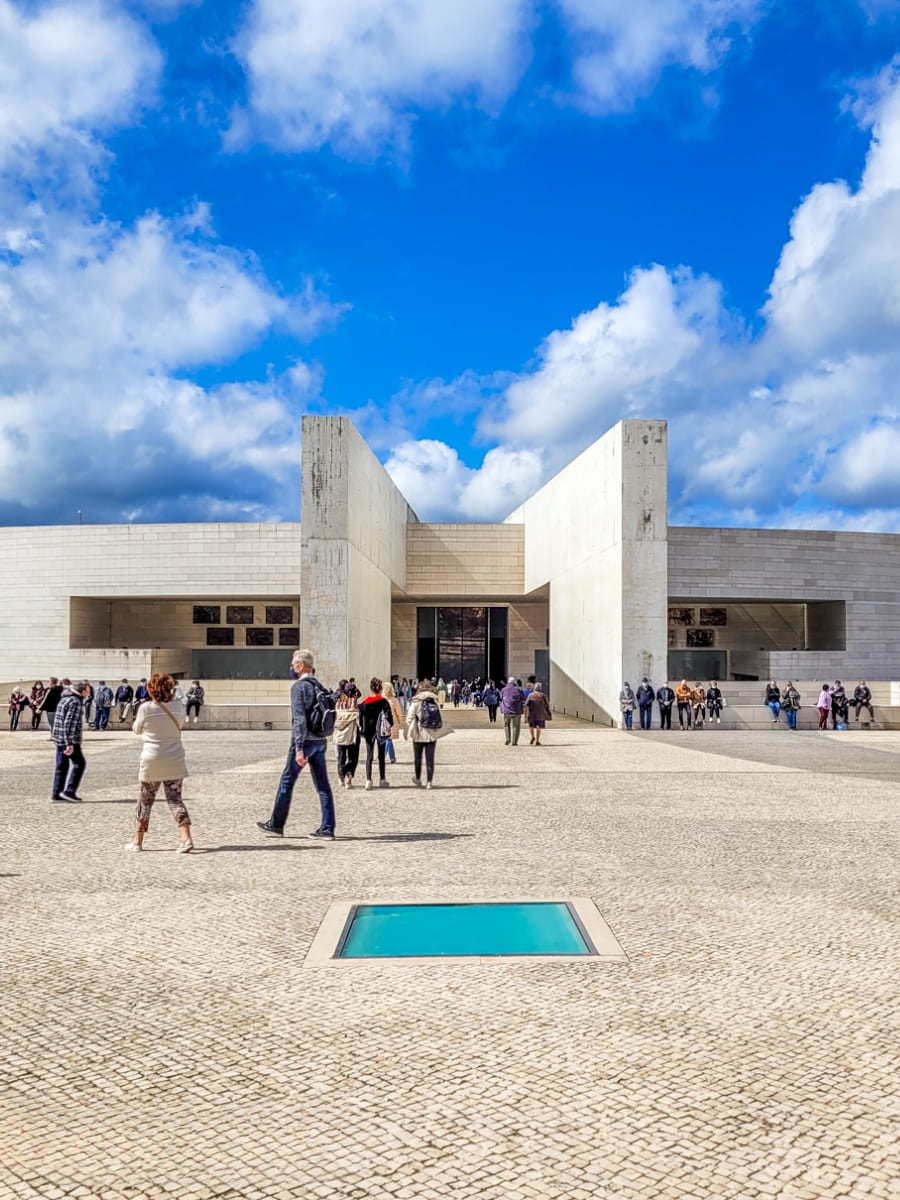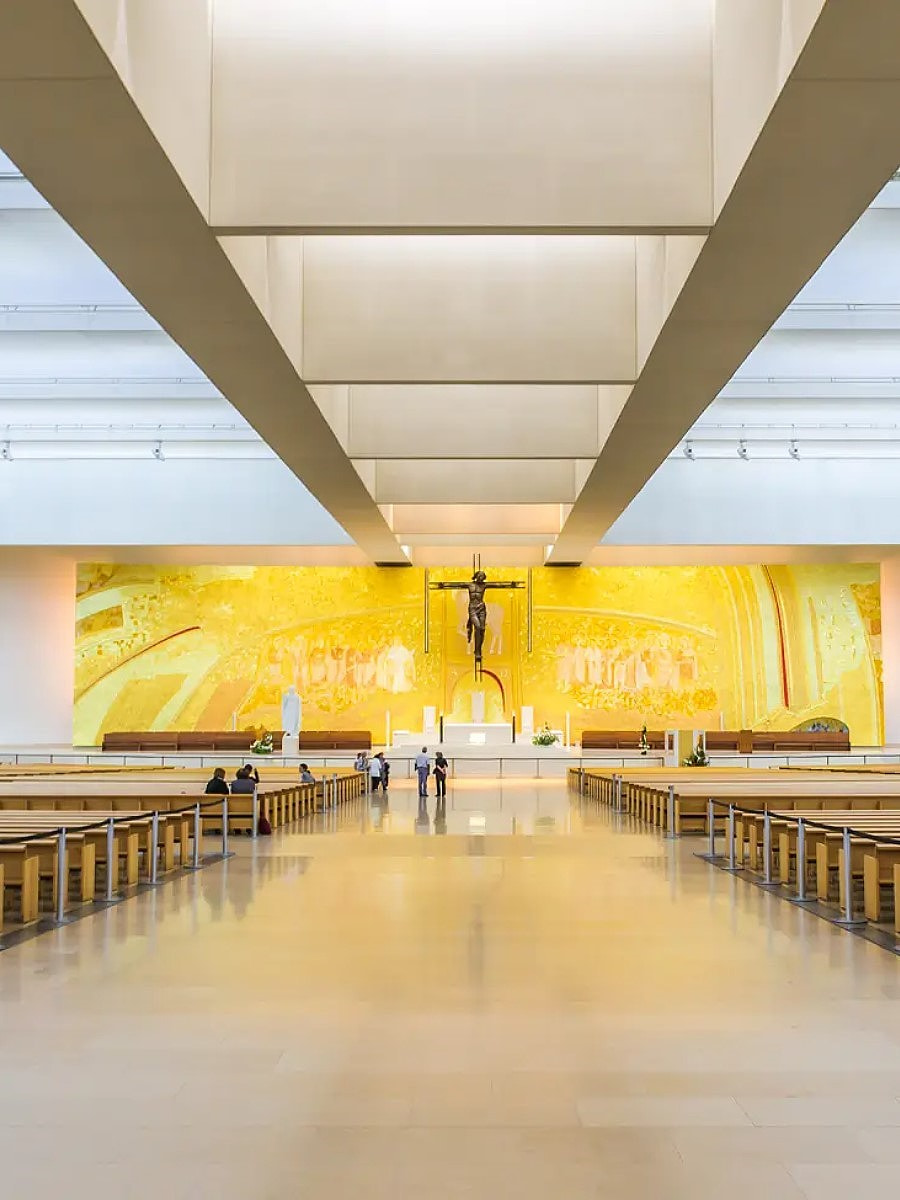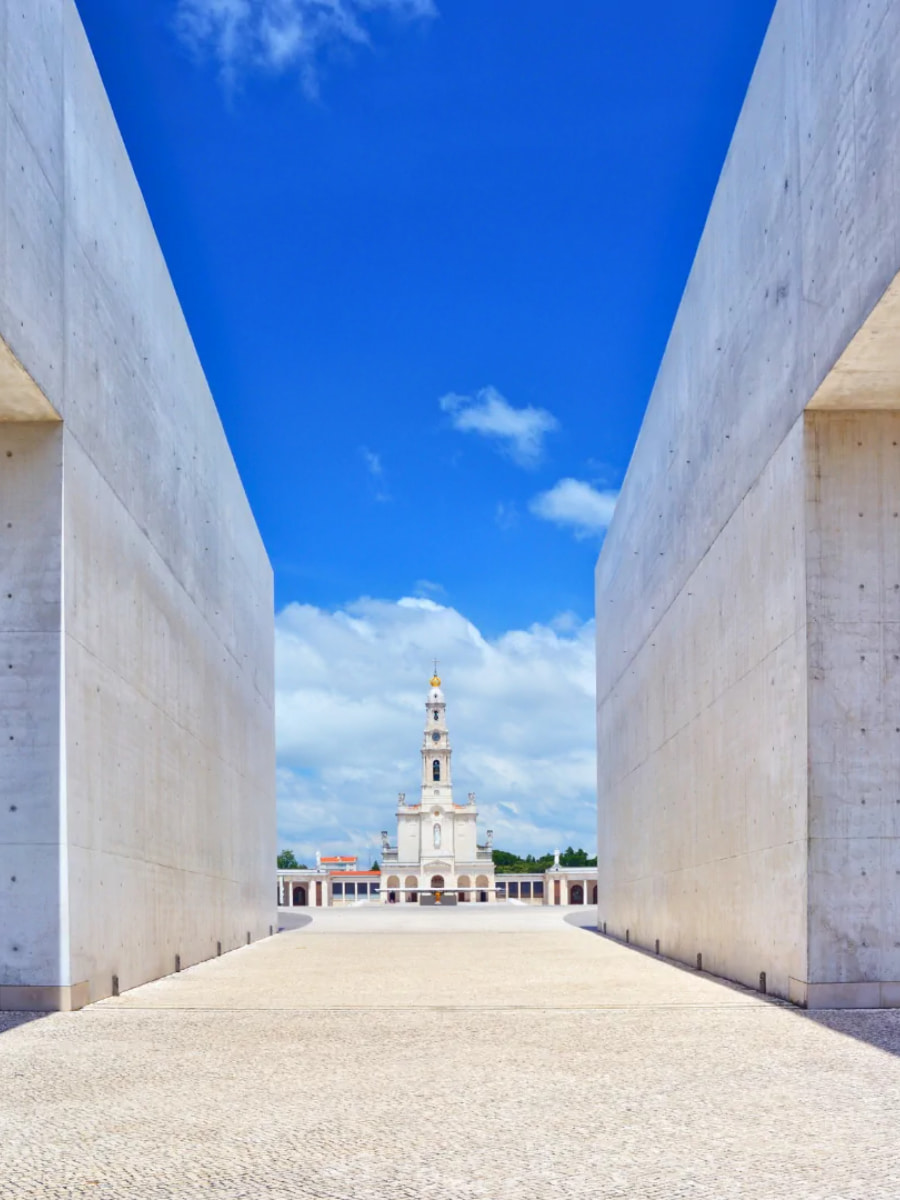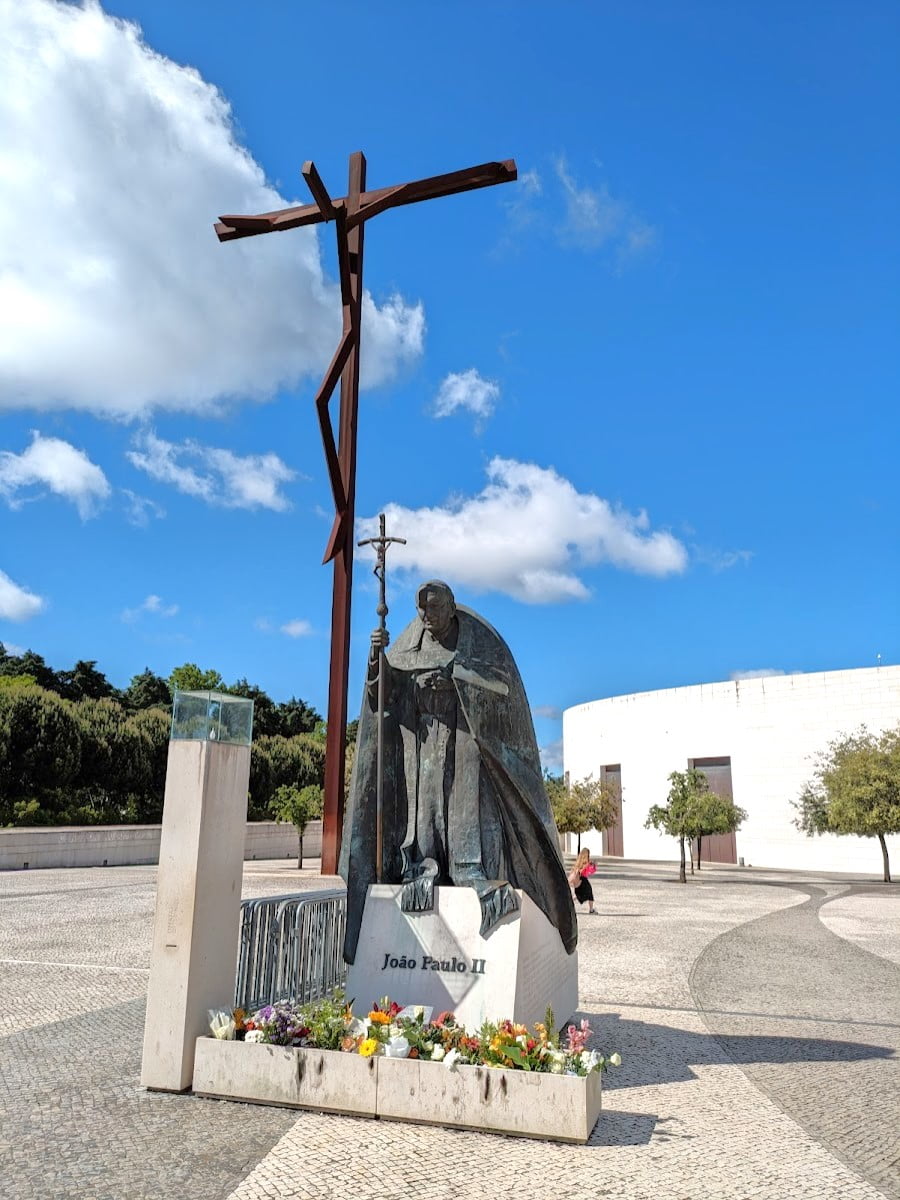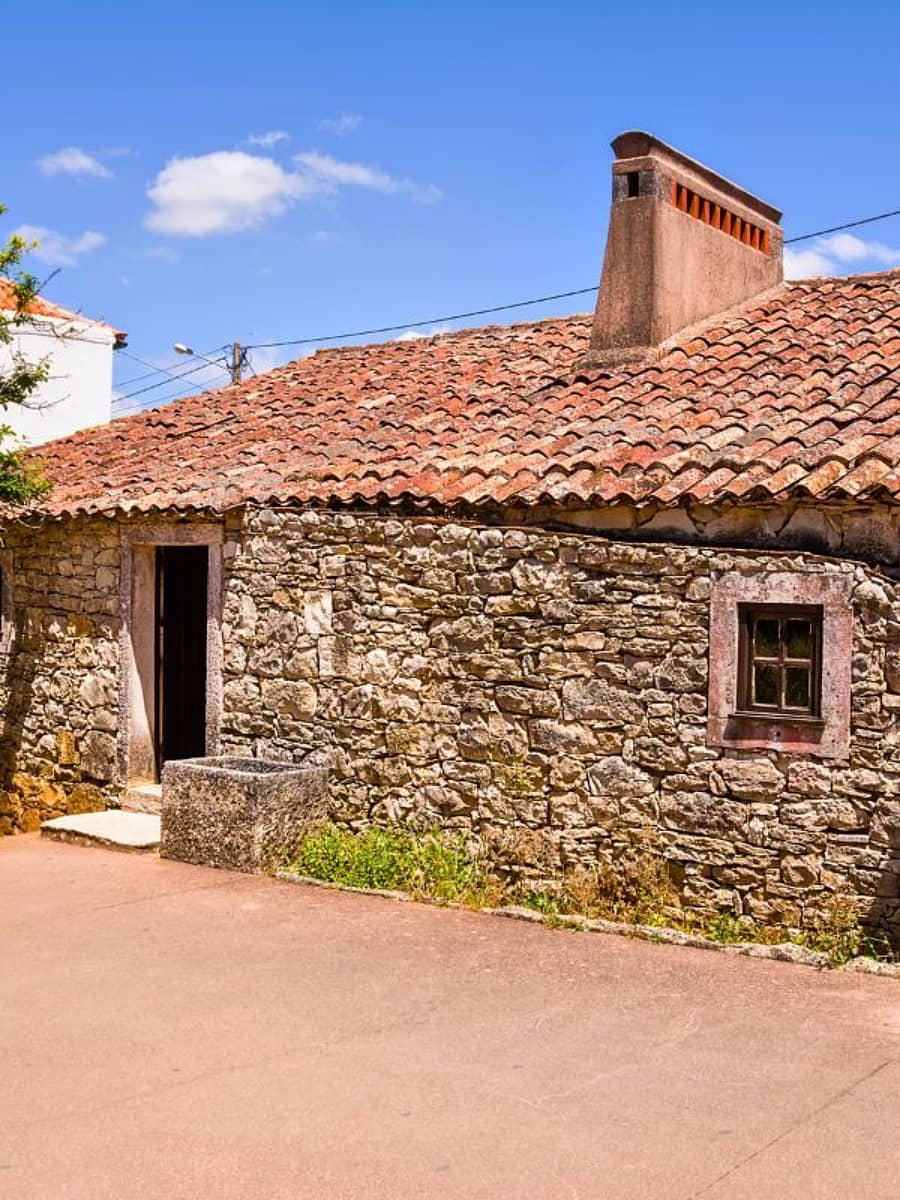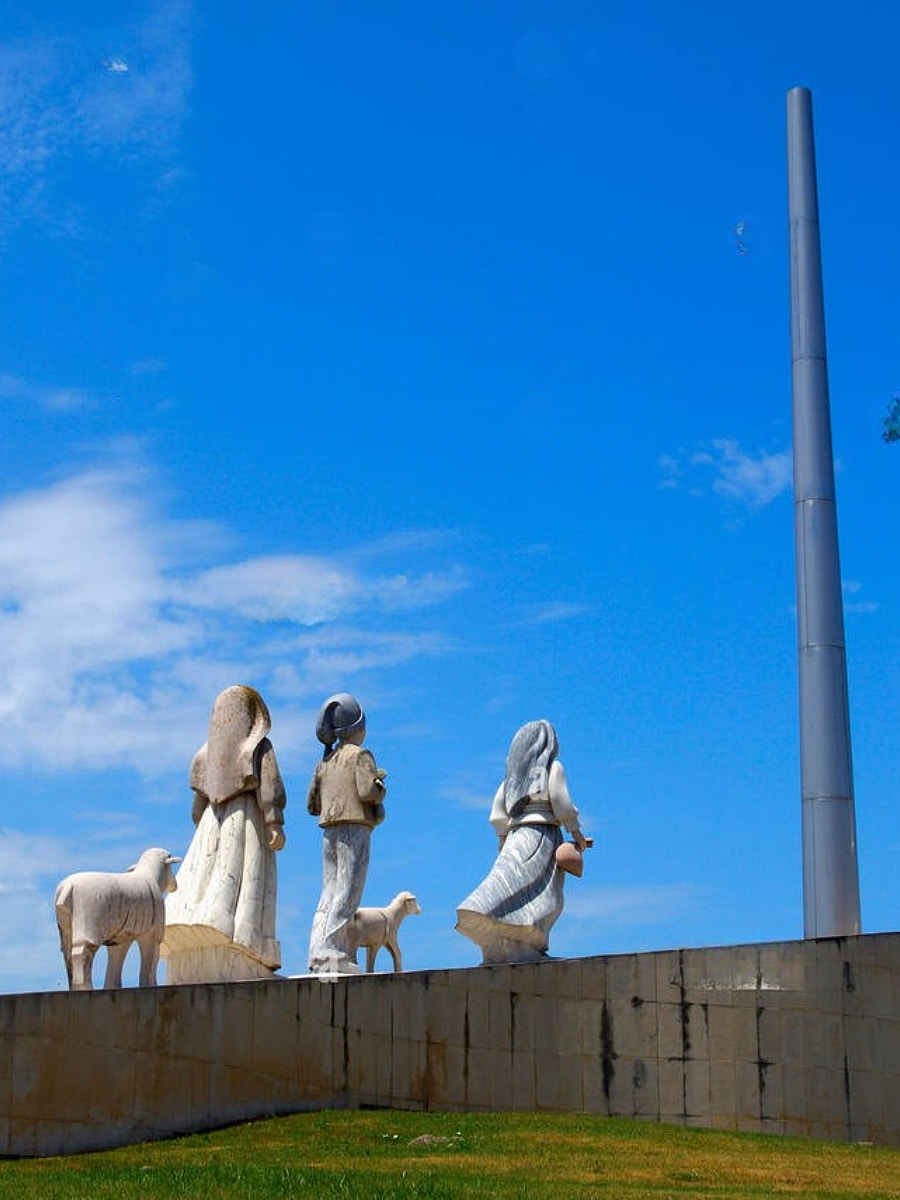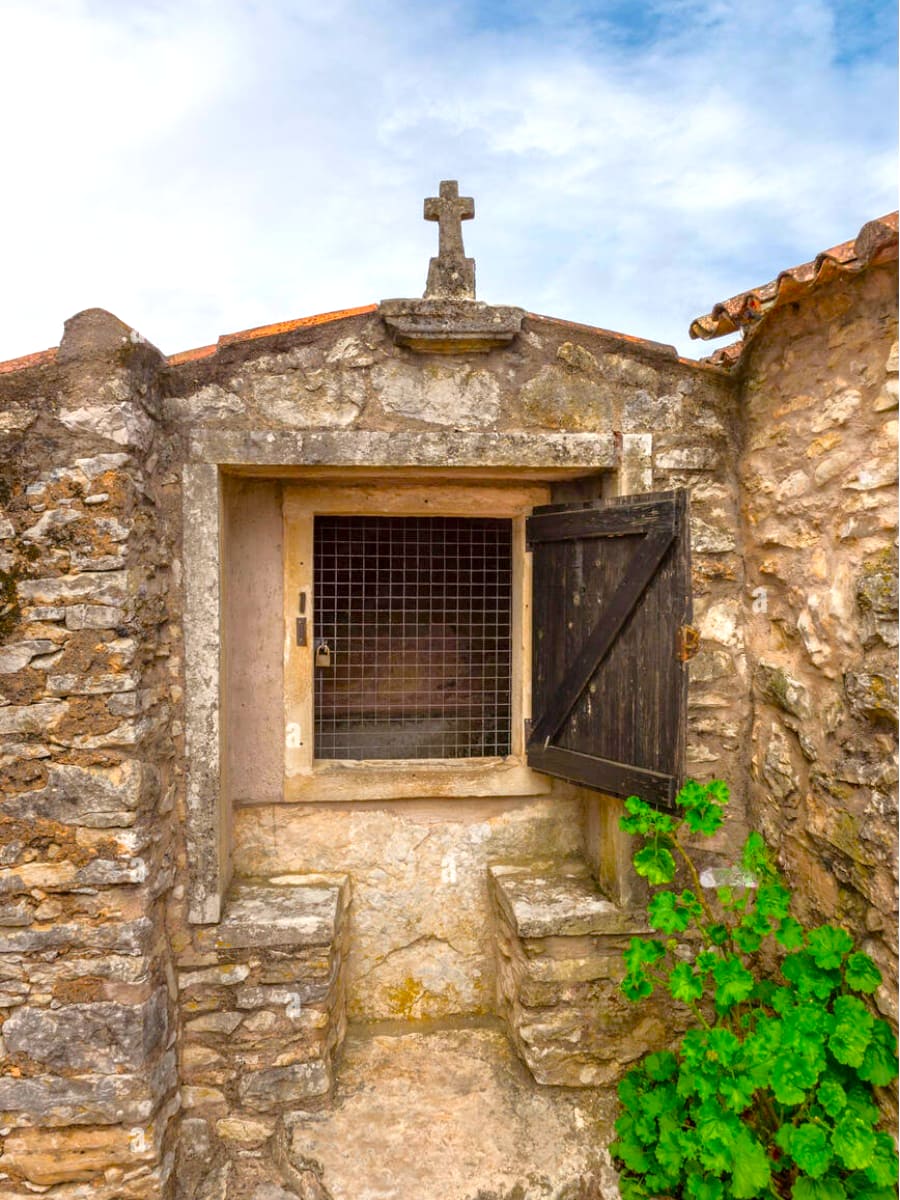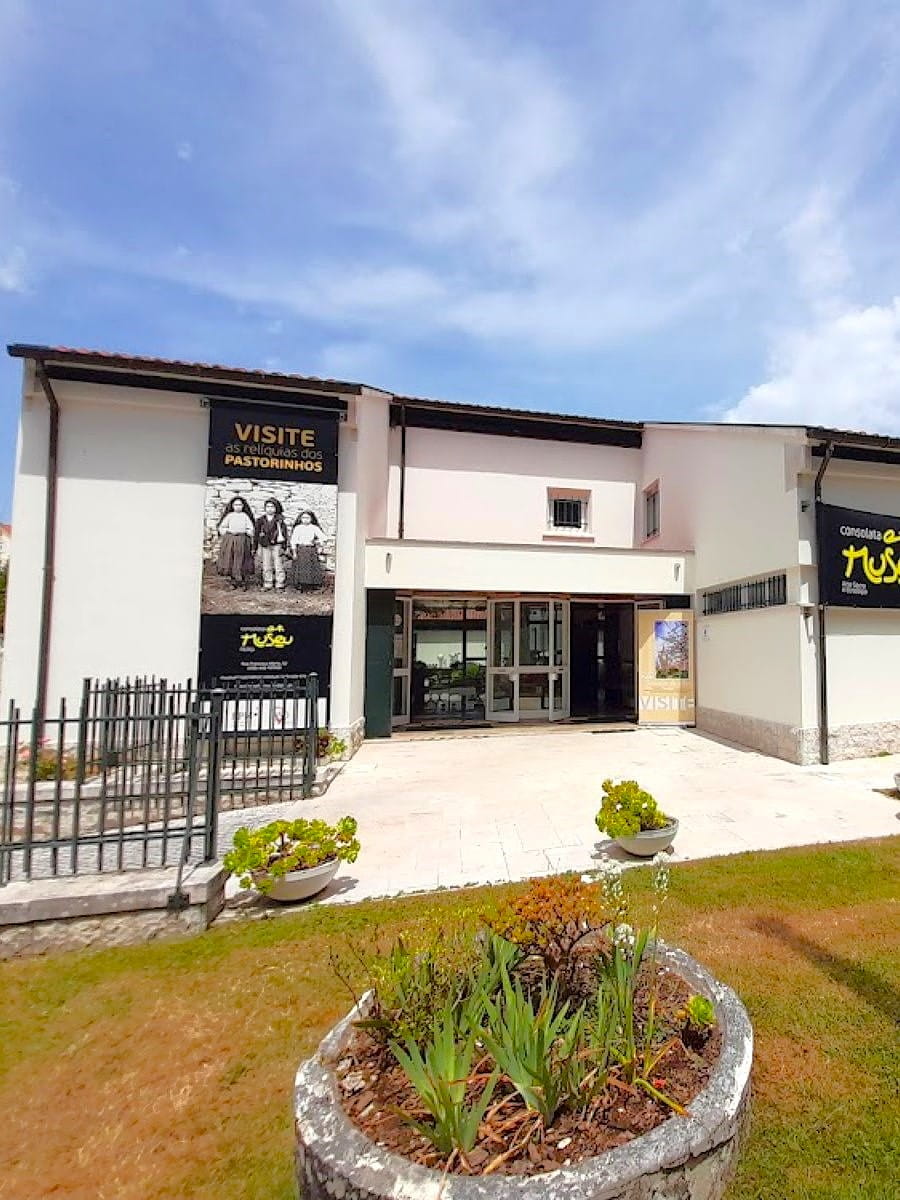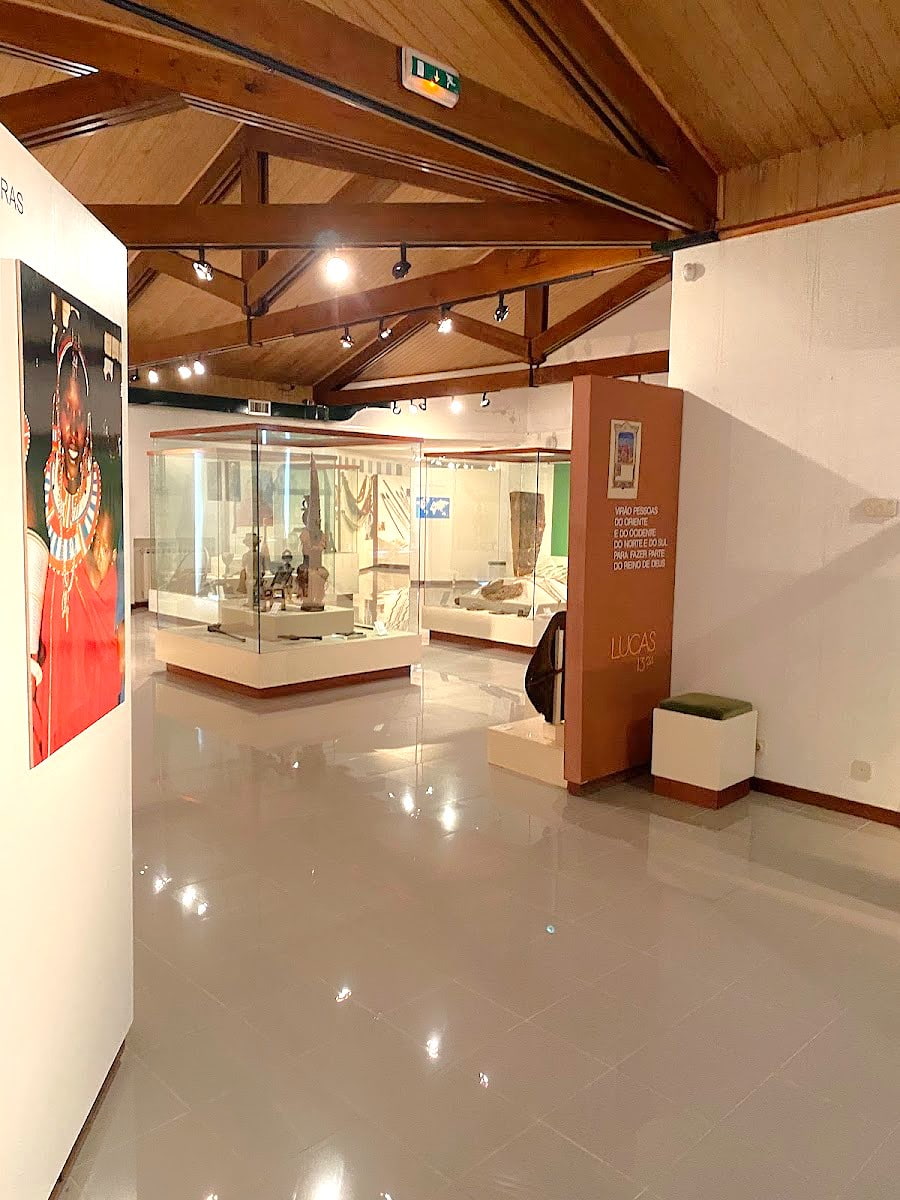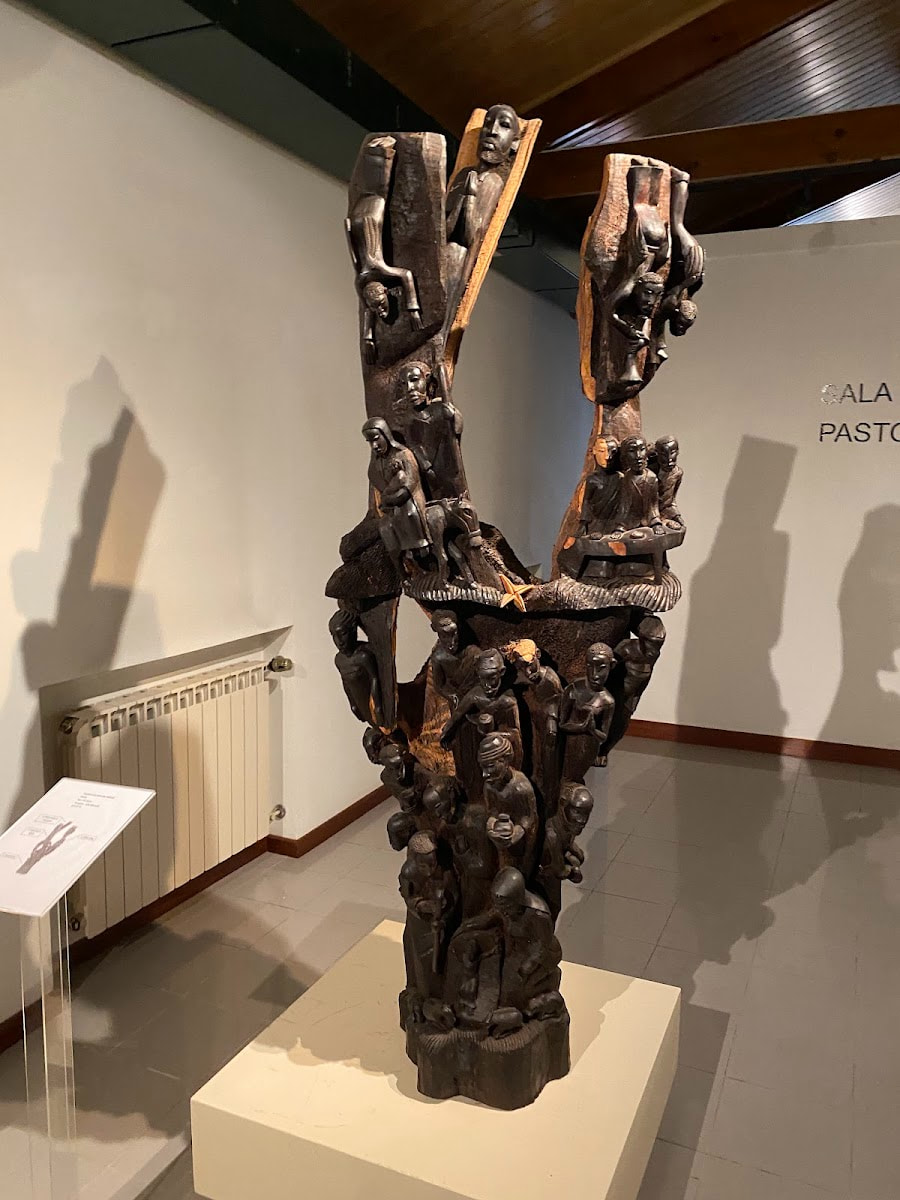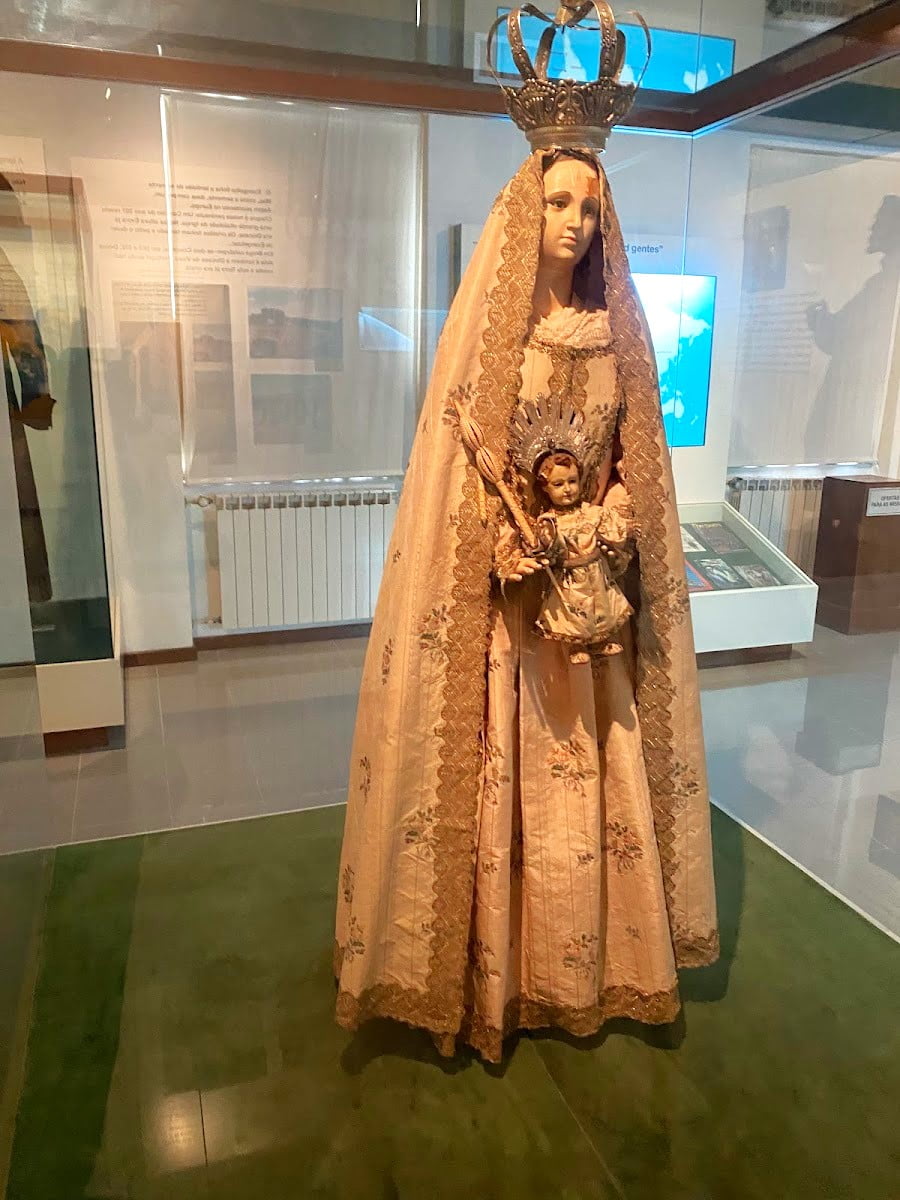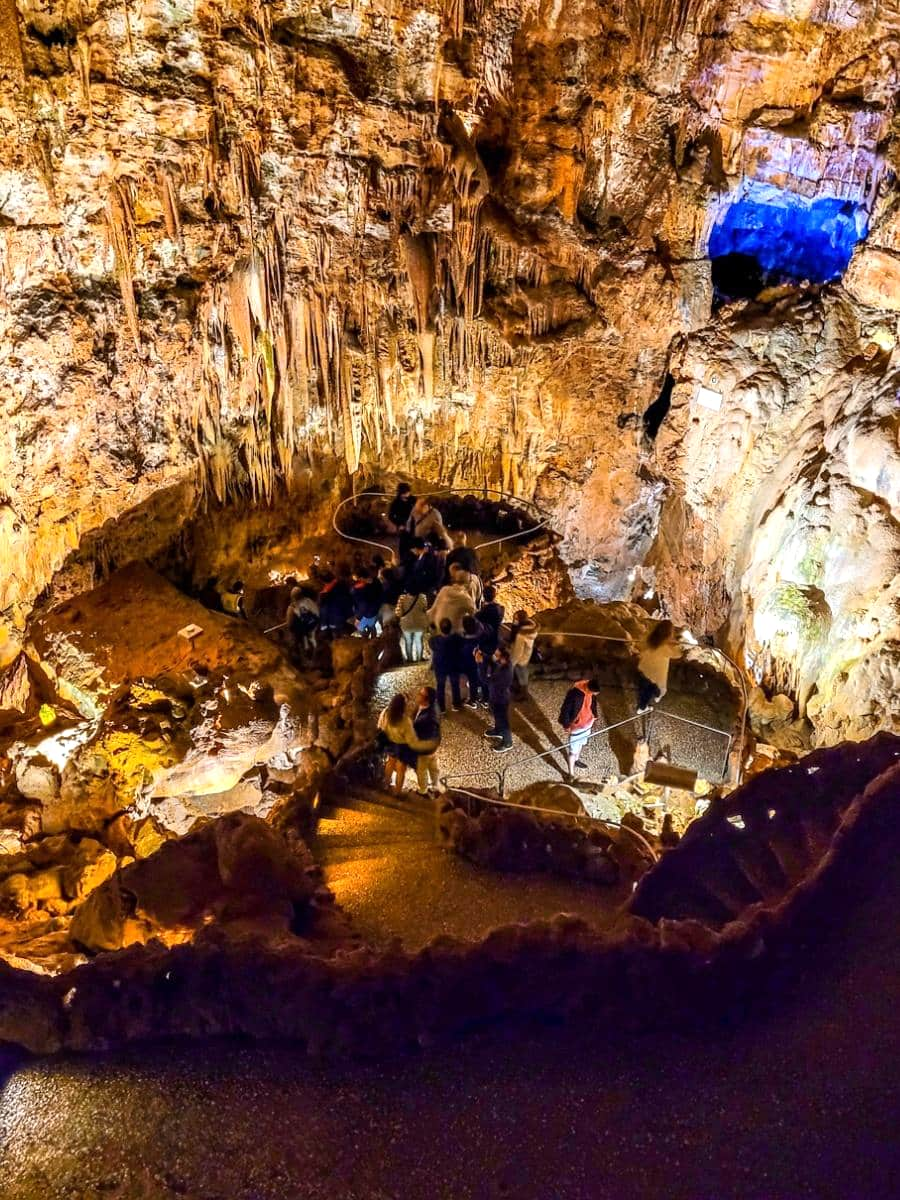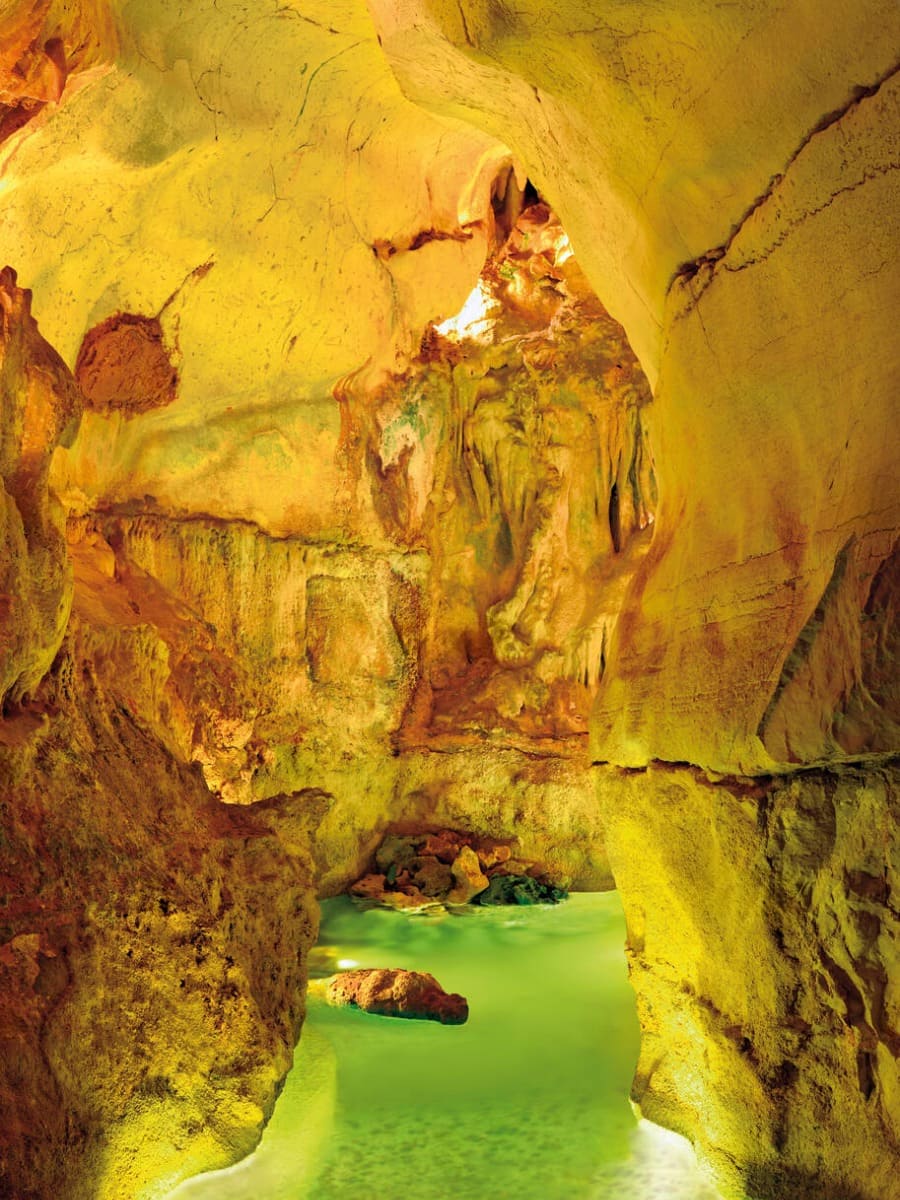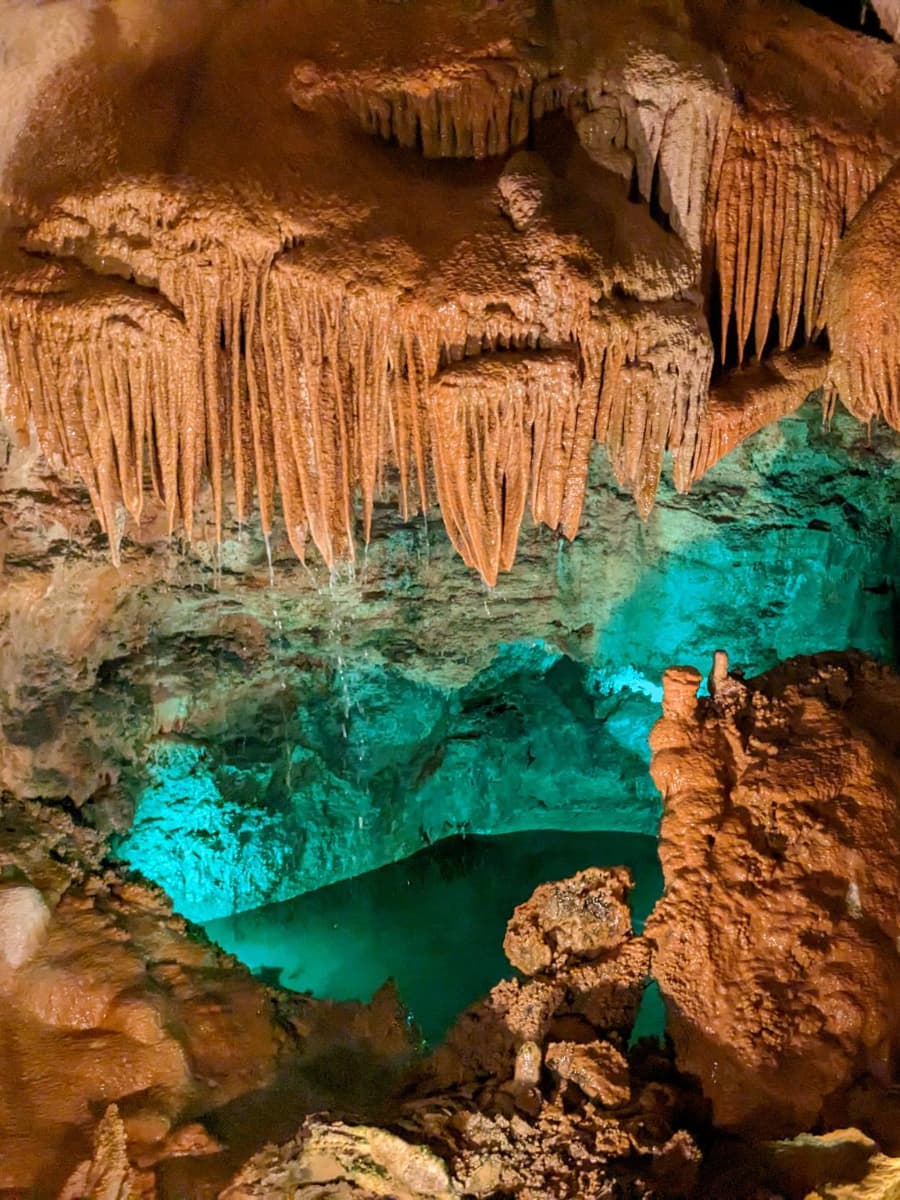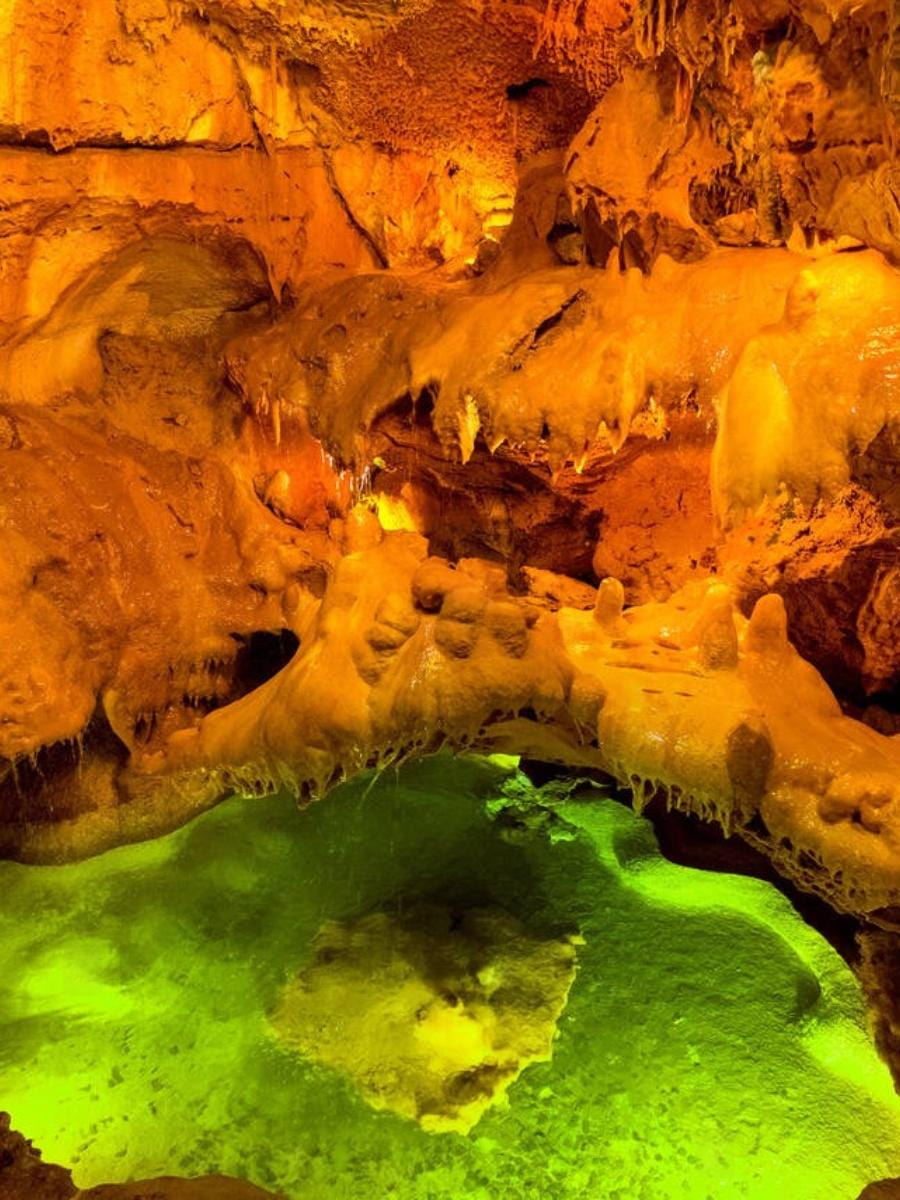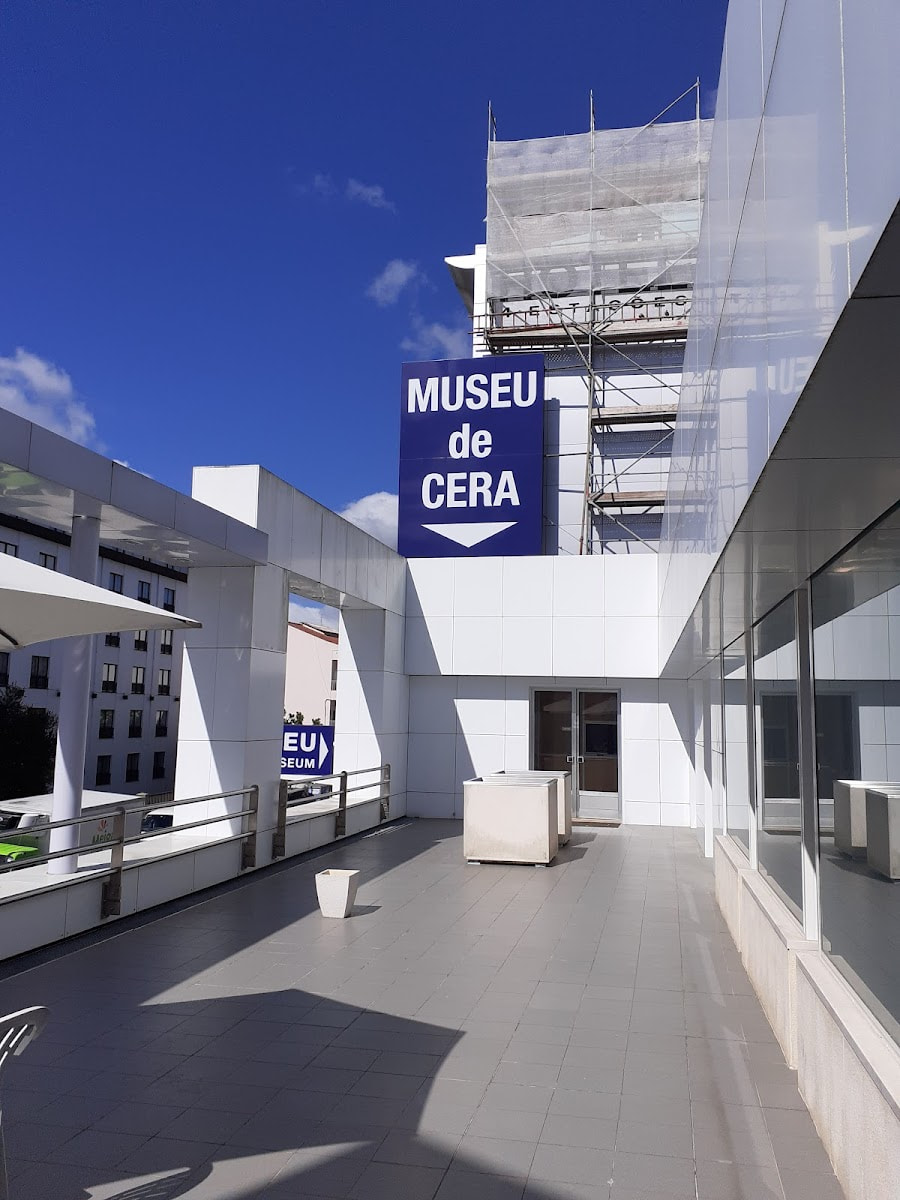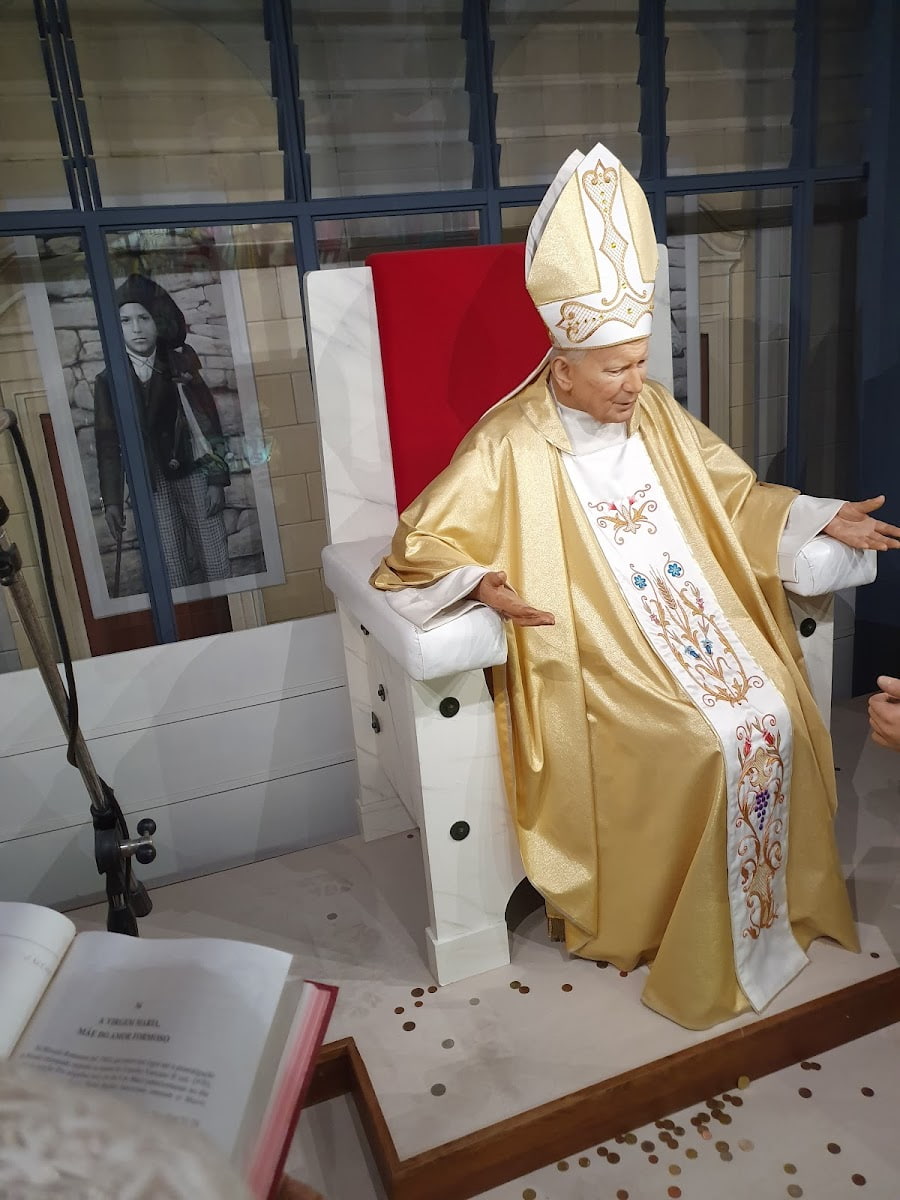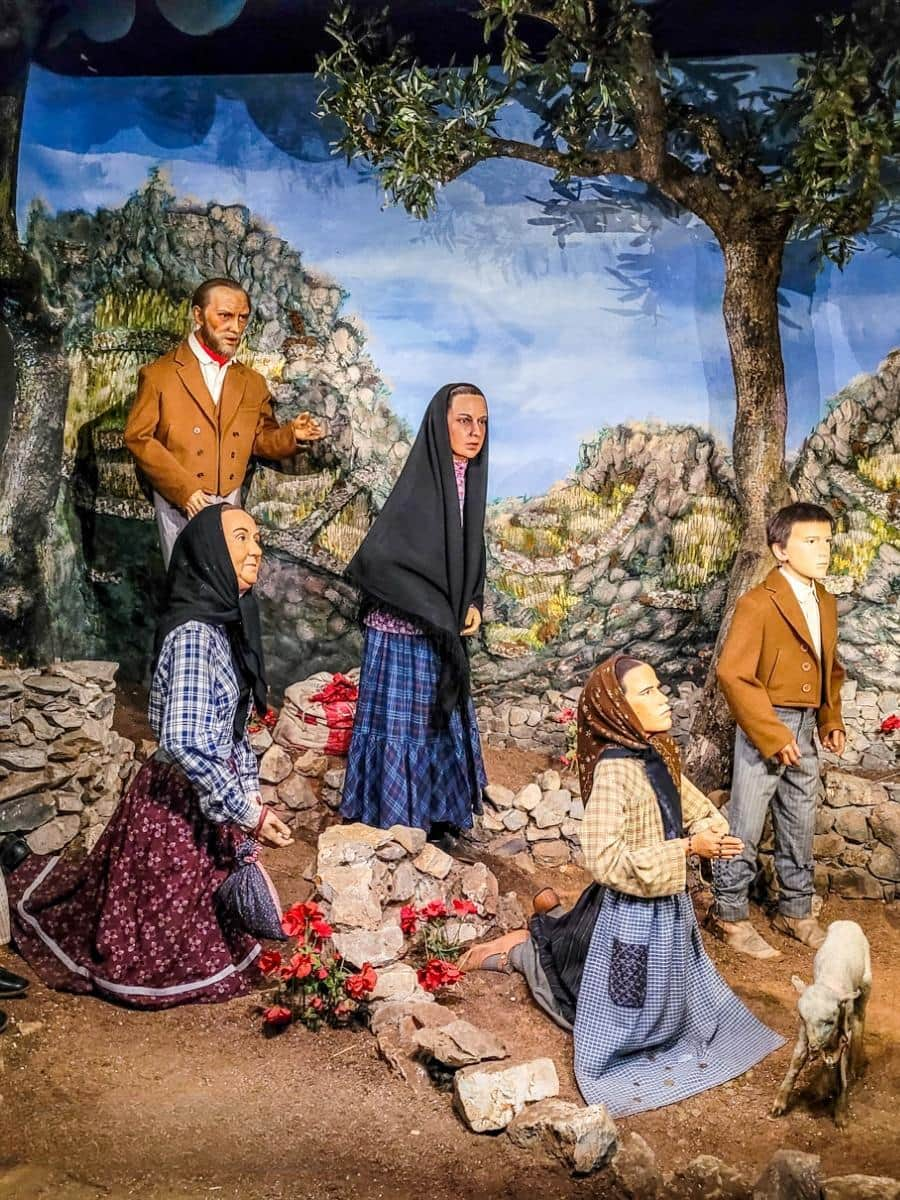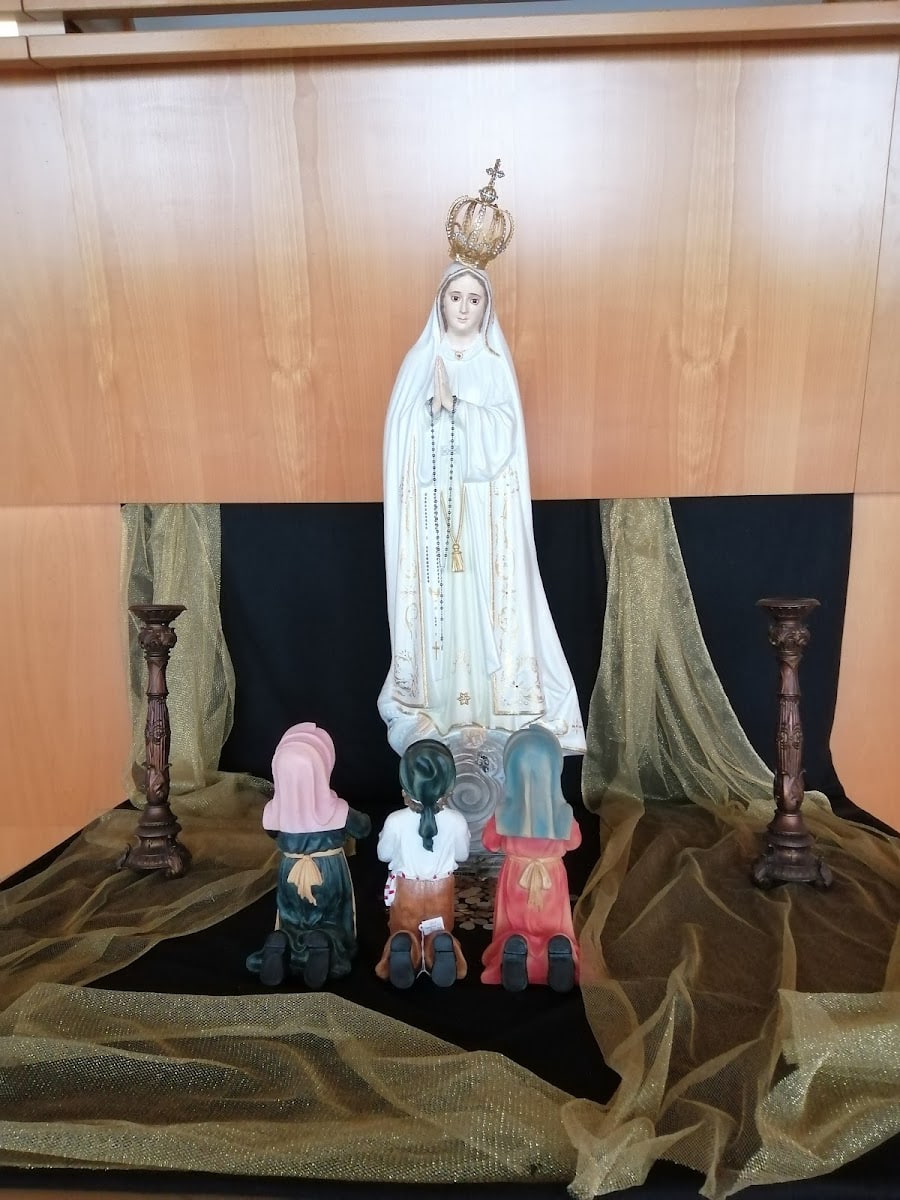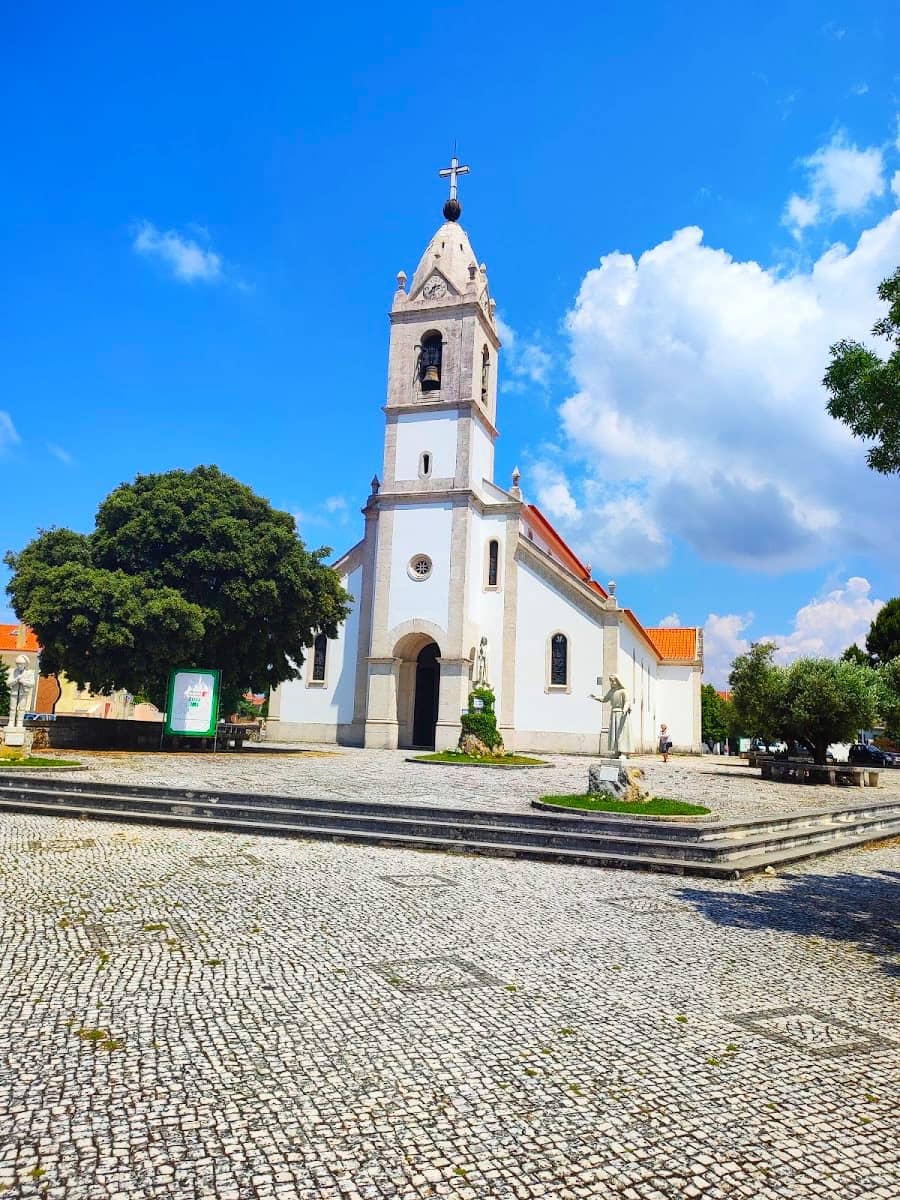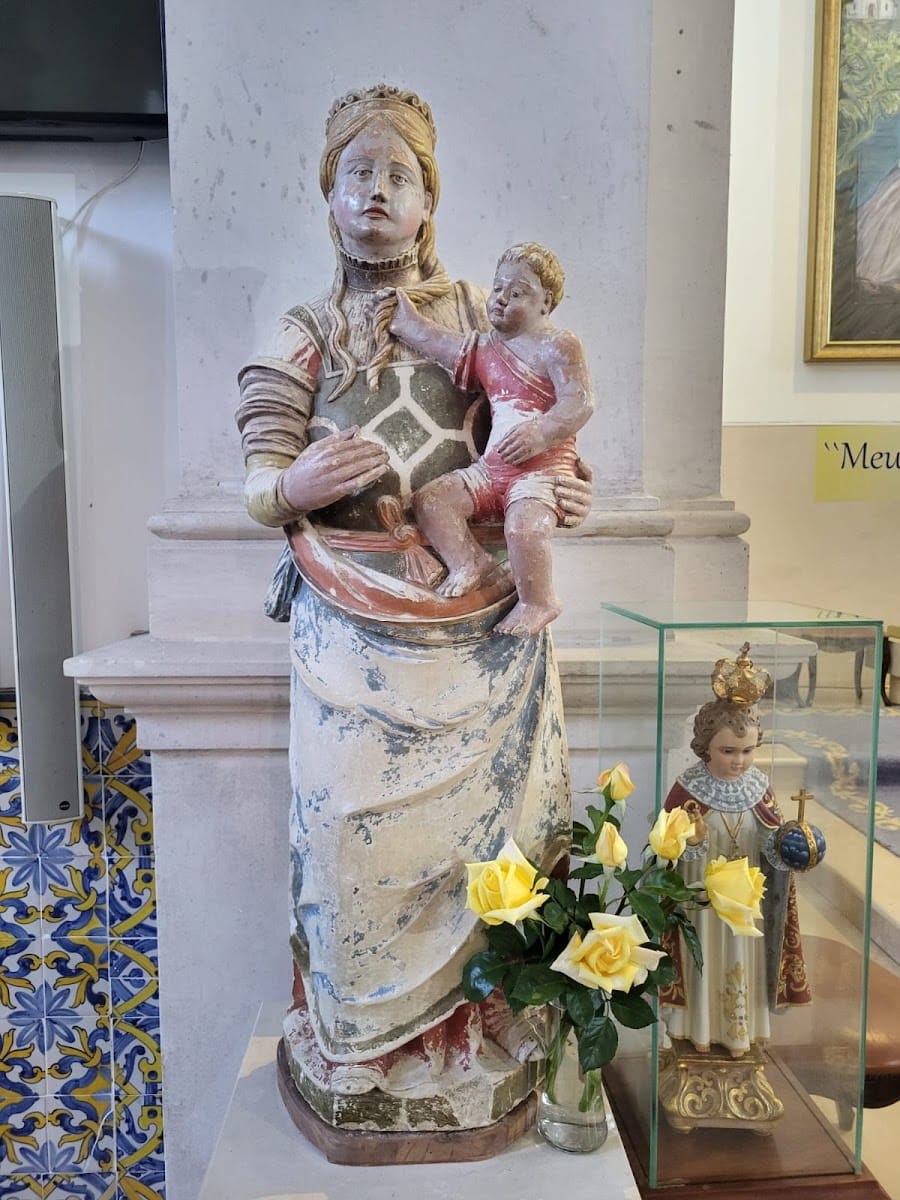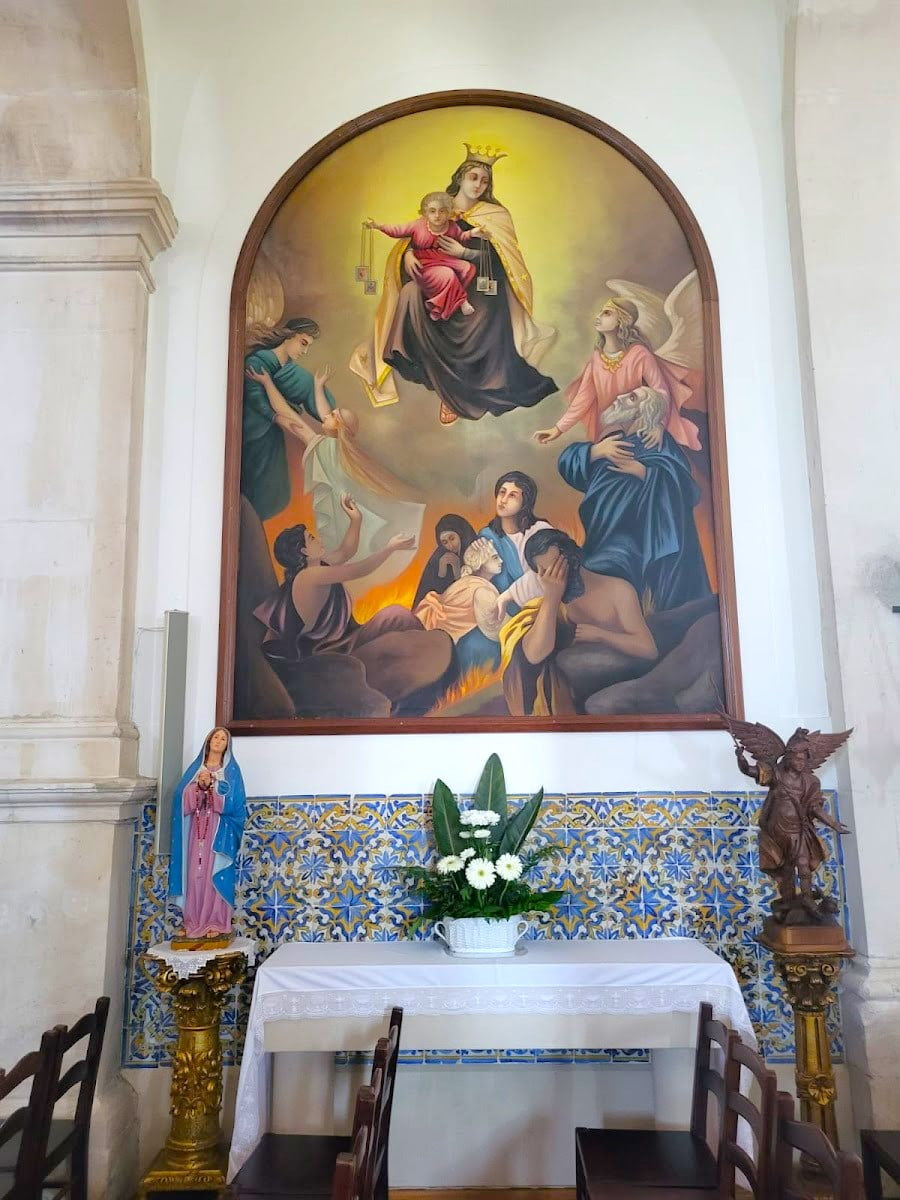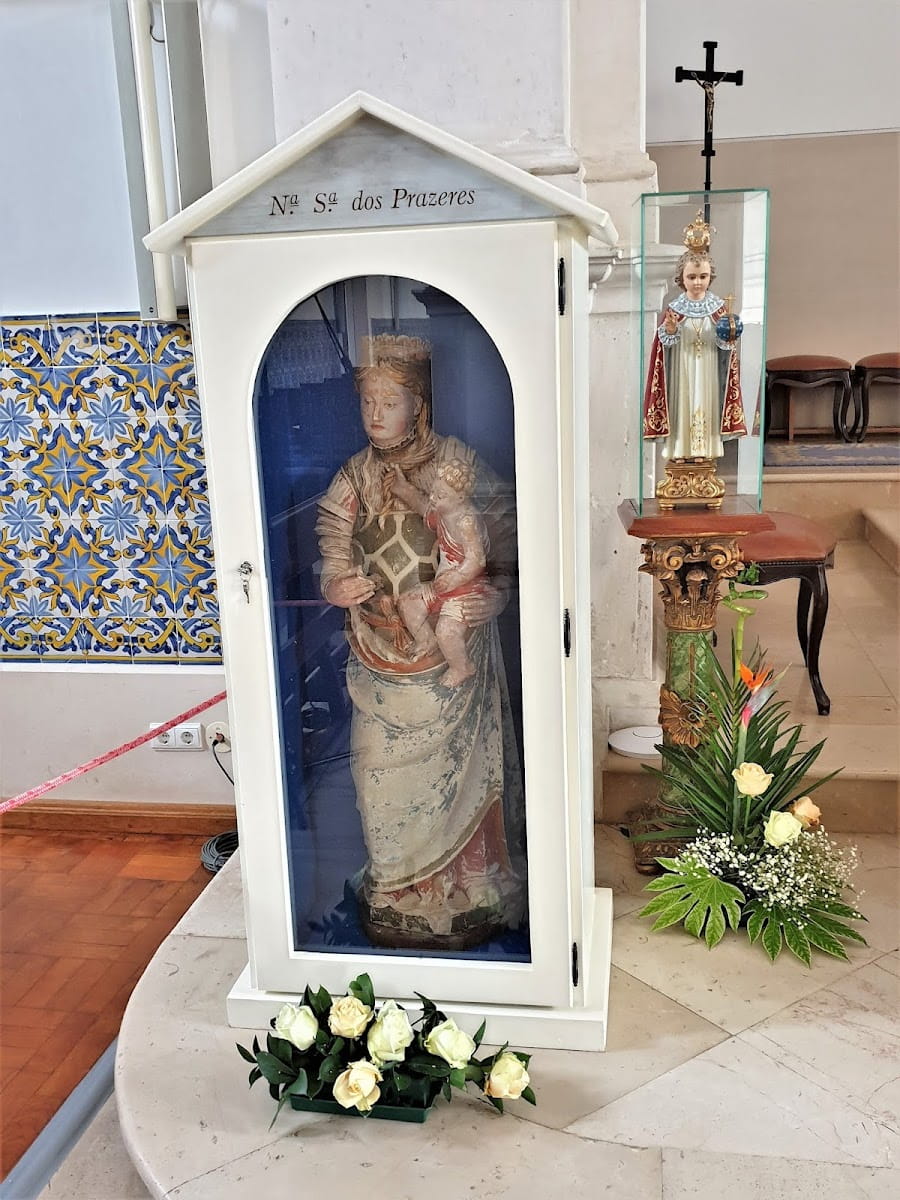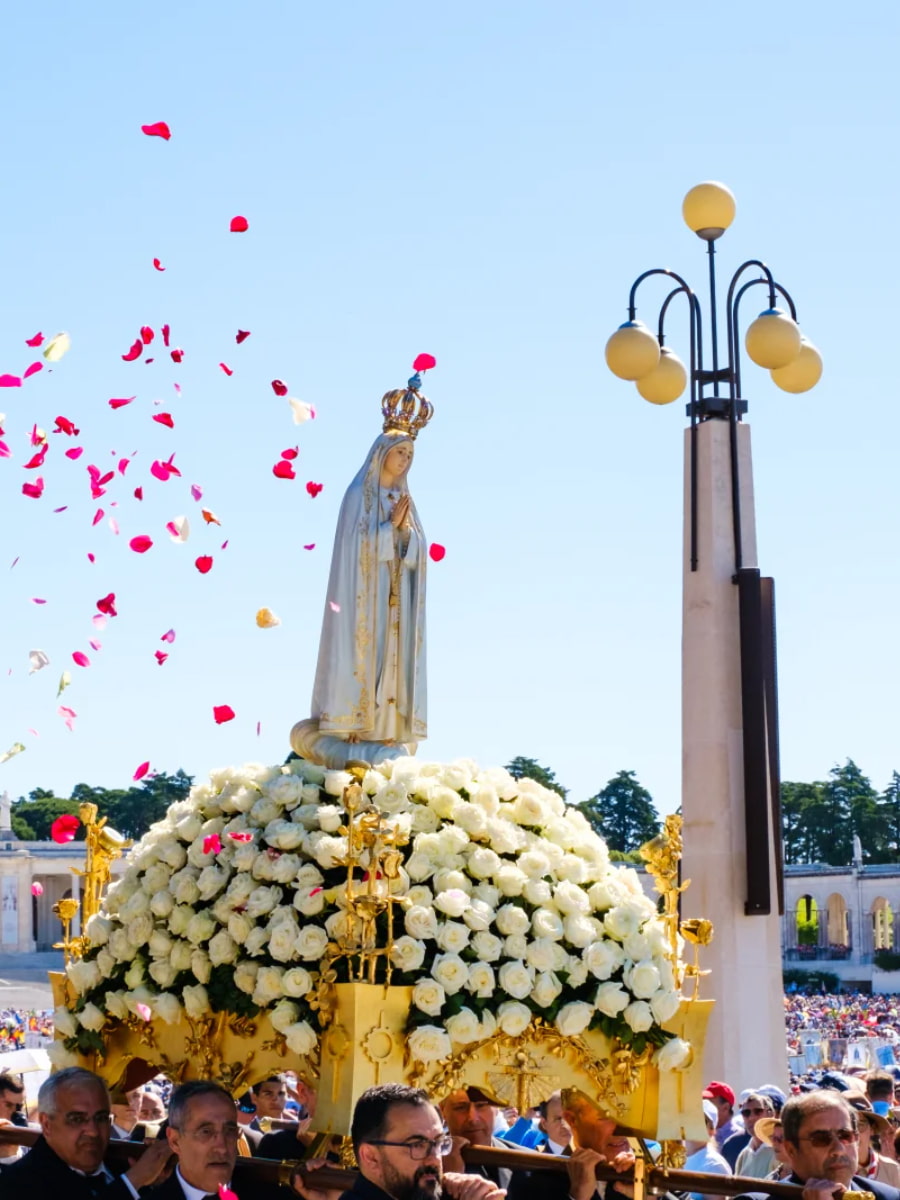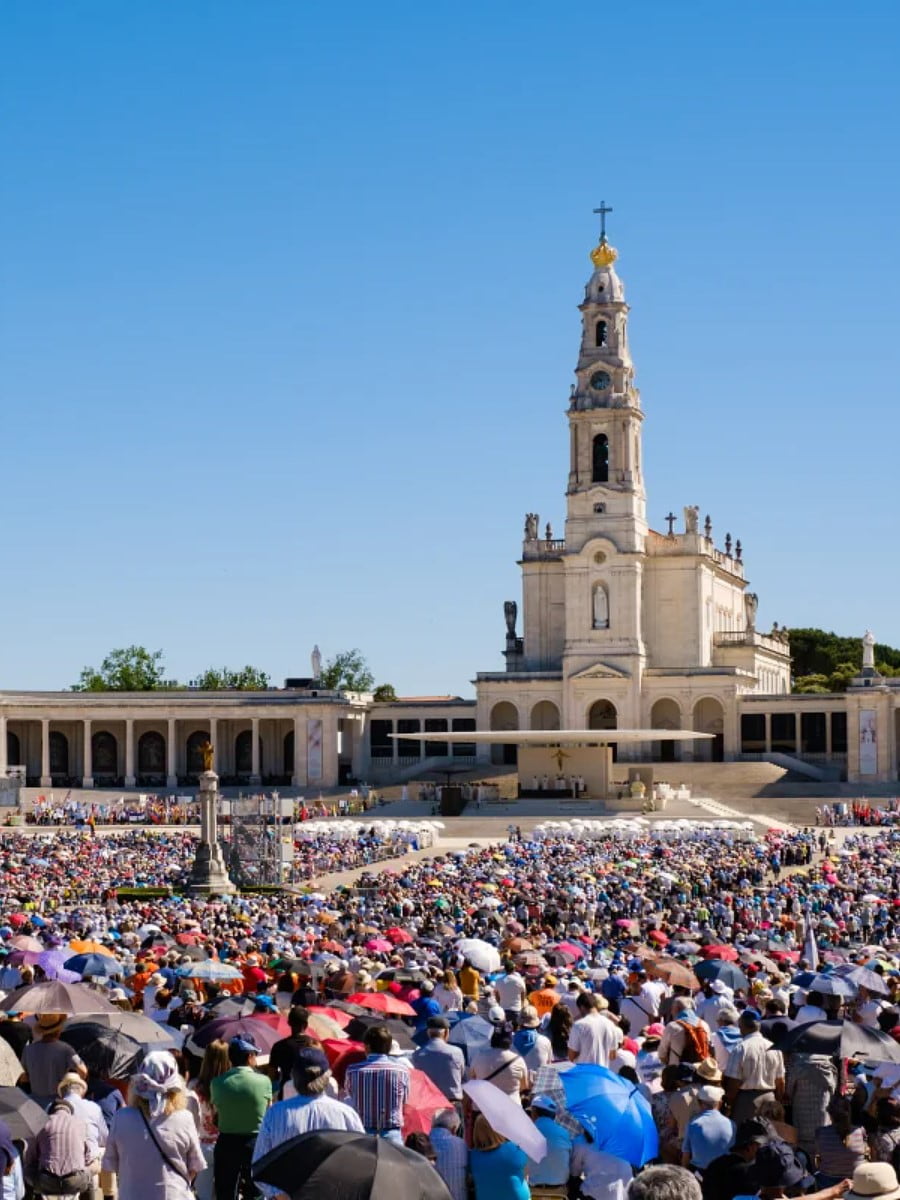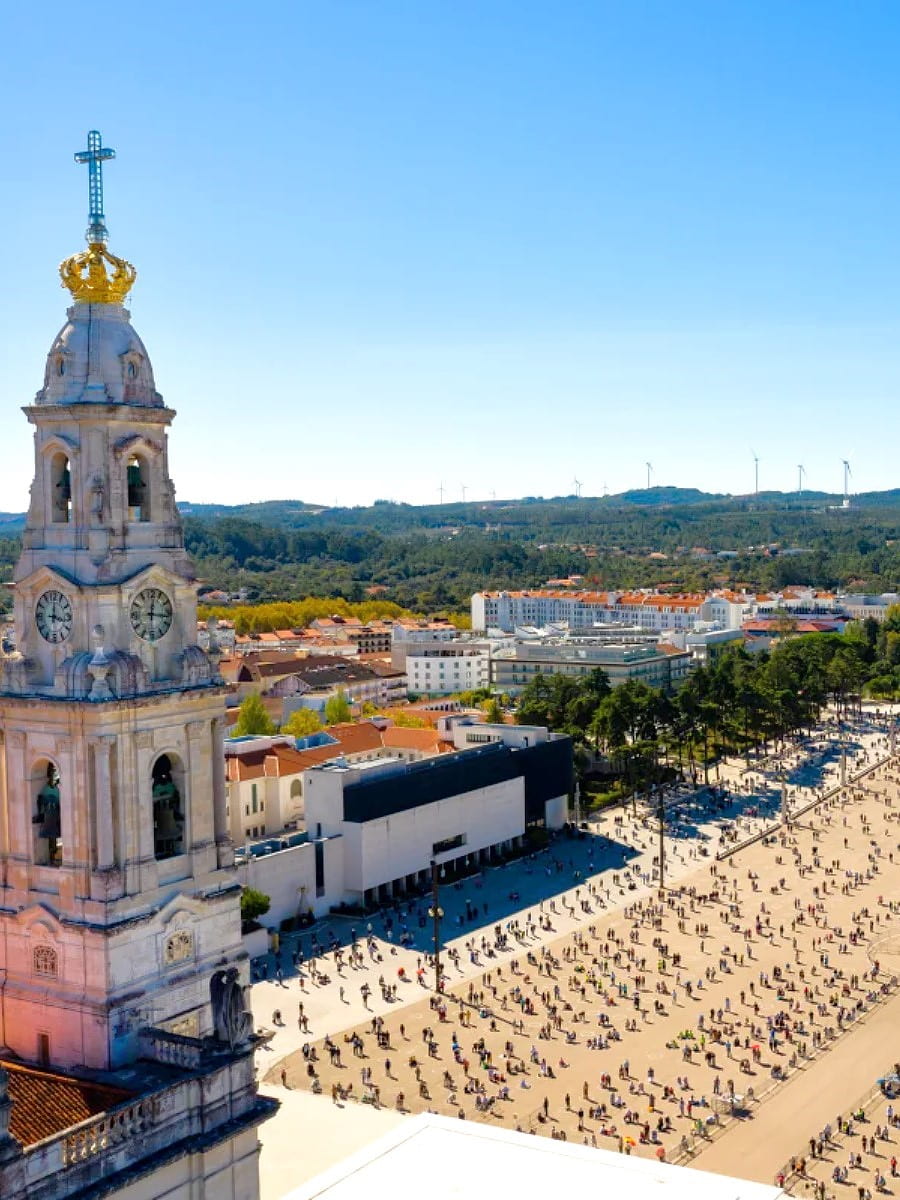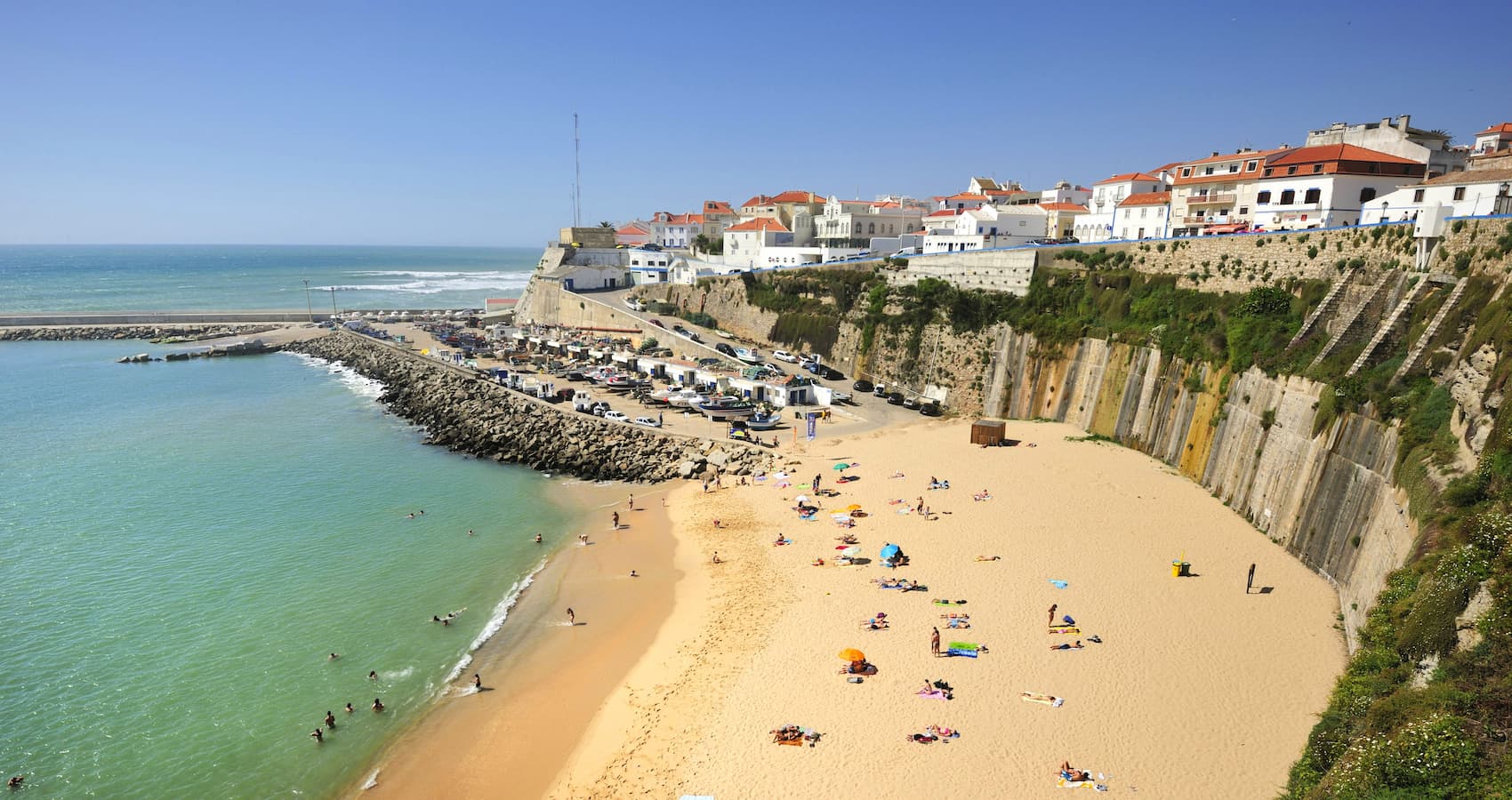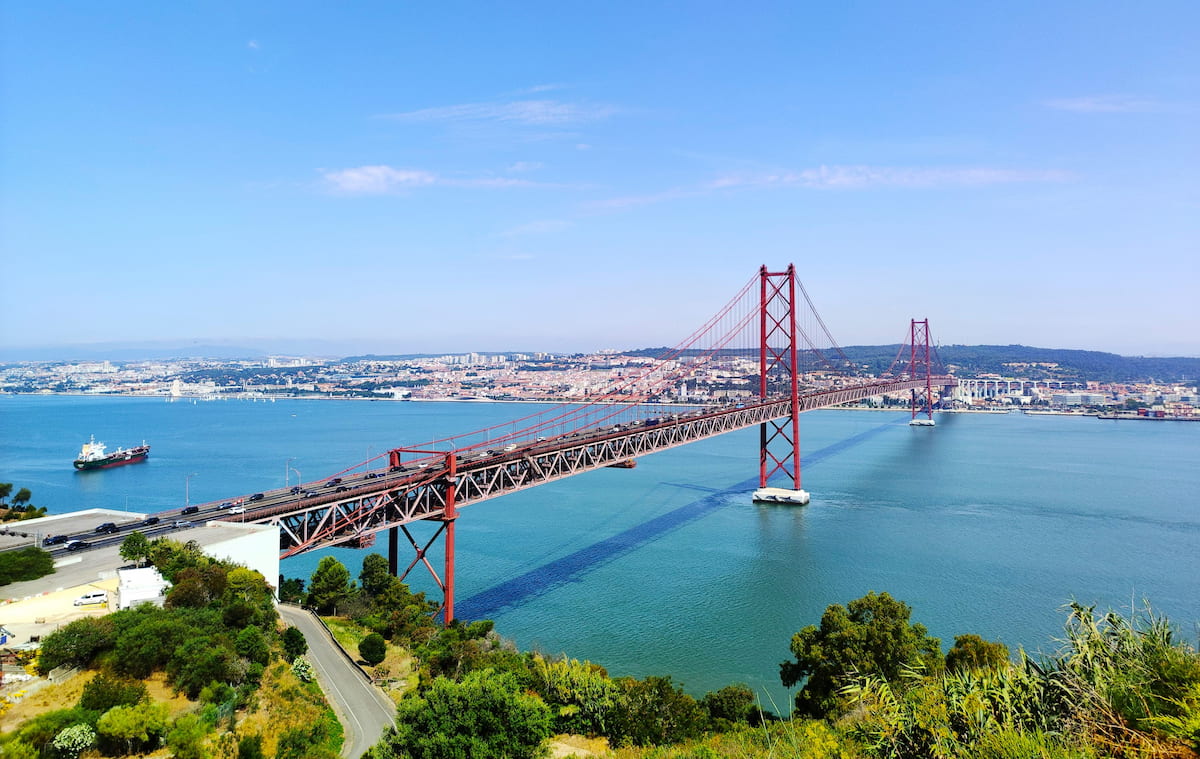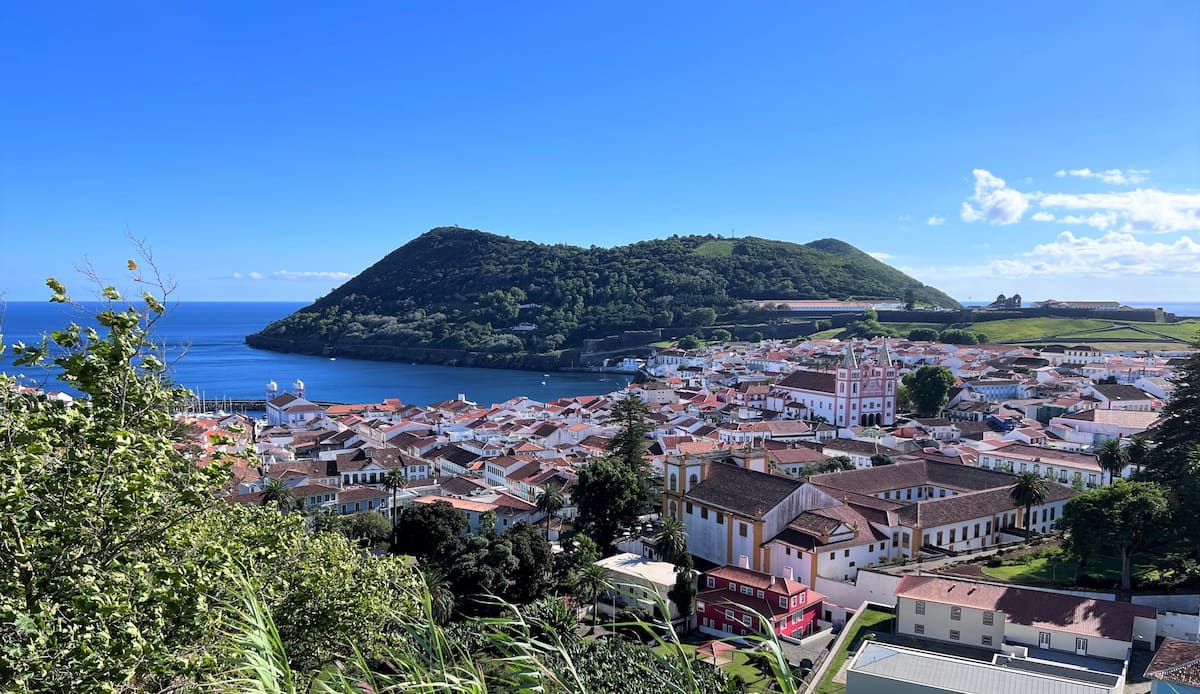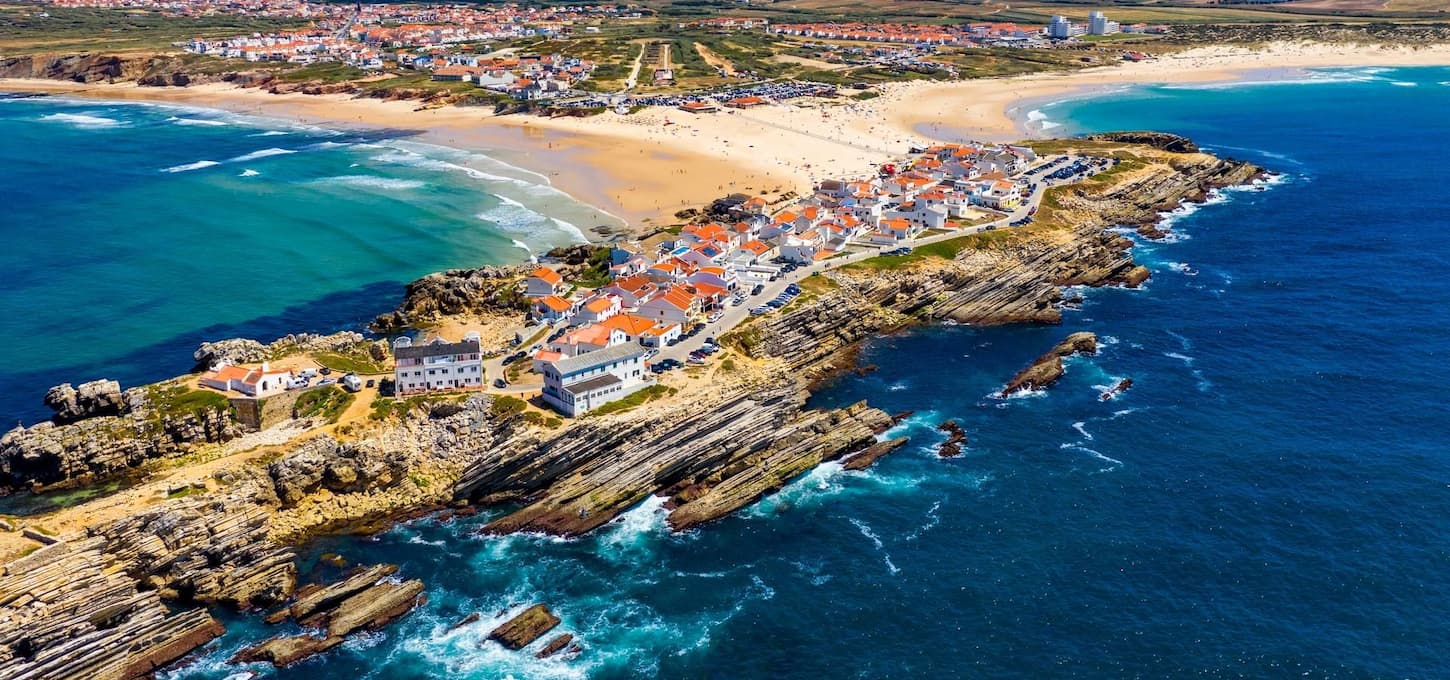From the magnificent basilicas to hidden caves, historic homes to scenic hiking trails, Fatima offers something for every visitor. Whether you’re making a spiritual pilgrimage, seeking family adventures, or simply exploring central Portugal’s treasures, this guide will help you experience the best of Fatima without missing any of its unique charm.
🏡 Where to stay in Fatima:
- 💎 Luxury Hotel: Hotel República Boutique Hotel
- ✨ 5-Star: Montebelo Mosteiro de Alcobaça Historic Hotel
- 🏨 4-Star: Mercure Fátima
- 🛏️ 3-Star: Hotel Azinheira by RIDAN Hotels
- 💸 Cheap: Flag Hotel Fatima Casa Das Irmas Dominicanas
- 🏢 Apartament: Apartamento 300 metros do SANTUÁRIO DE FÁTIMA T4
- 👨👩👧👦 For Families: Hotel Anjo de Portugal
- 🏩 For Couples: Hotel Santa Maria
👩🏻 Best Guided Tours:
- Full-Day Fatima and Coimbra Tour from € 85 (⭐ 4.7/5)
- Private Tour of Fatima with Official Guide from € 120 (⭐ 4.8/5)
- Fatima Sanctuary and Aljustrel Village Private Guided Tour from € 95 (⭐ 4.9/5)
- Fatima Private Walking Tour from € 70 (⭐ 4.8/5)
Best Things To Do in Fatima, Portugal
1. Sanctuary of Our Lady of Fátima
Sacred ground. Stepping onto the vast prayer area of the Sanctuary of Fátima sent shivers down my spine. This sprawling religious complex welcomes millions of pilgrims annually, and I immediately understood why. The peaceful atmosphere enveloped me as I joined visitors from across the globe.
Heart of devotion. The Sanctuary serves as Portugal’s most significant religious destination, commemorating the 1917 apparitions of the Virgin Mary to three shepherd children. Walking across the immense plaza, I watched pilgrims moving on their knees toward the Chapel of Apparitions – a powerful display of faith.
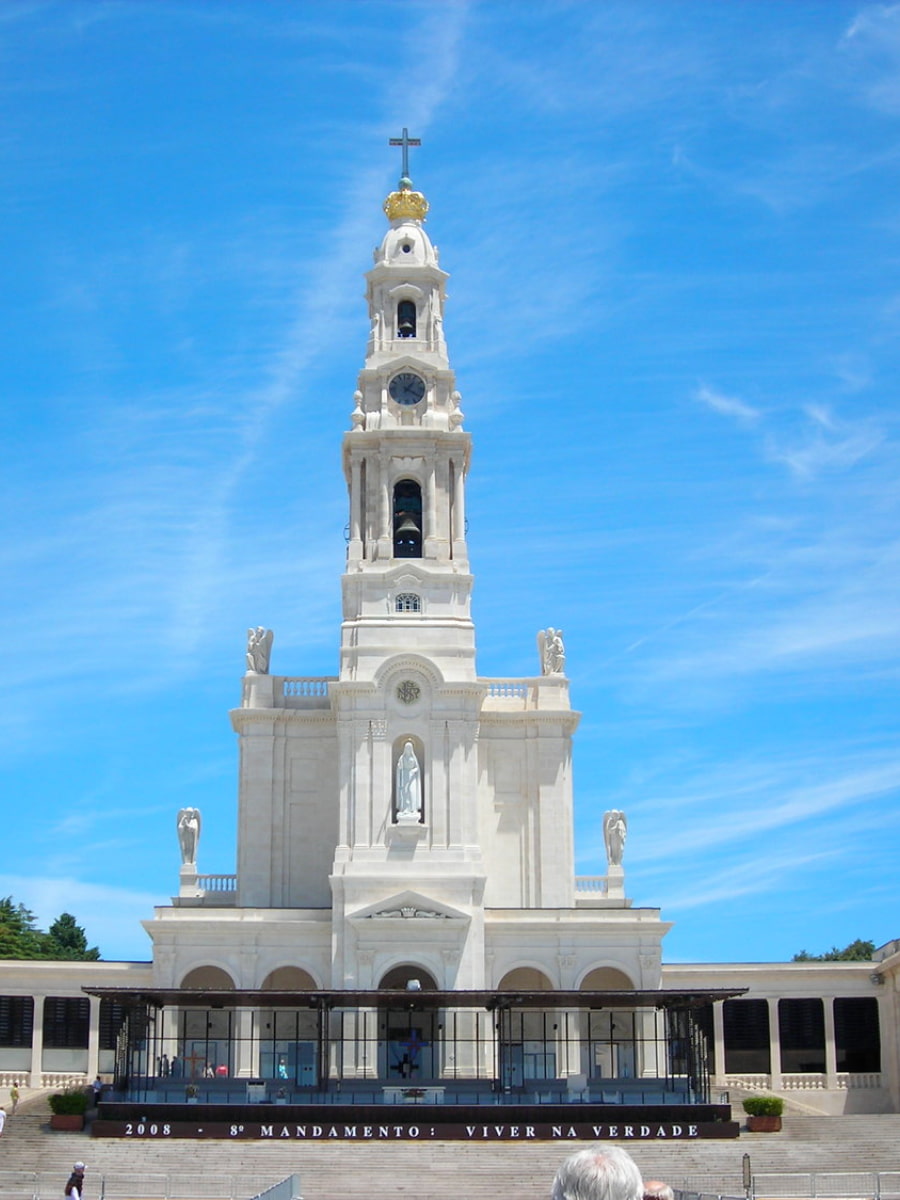
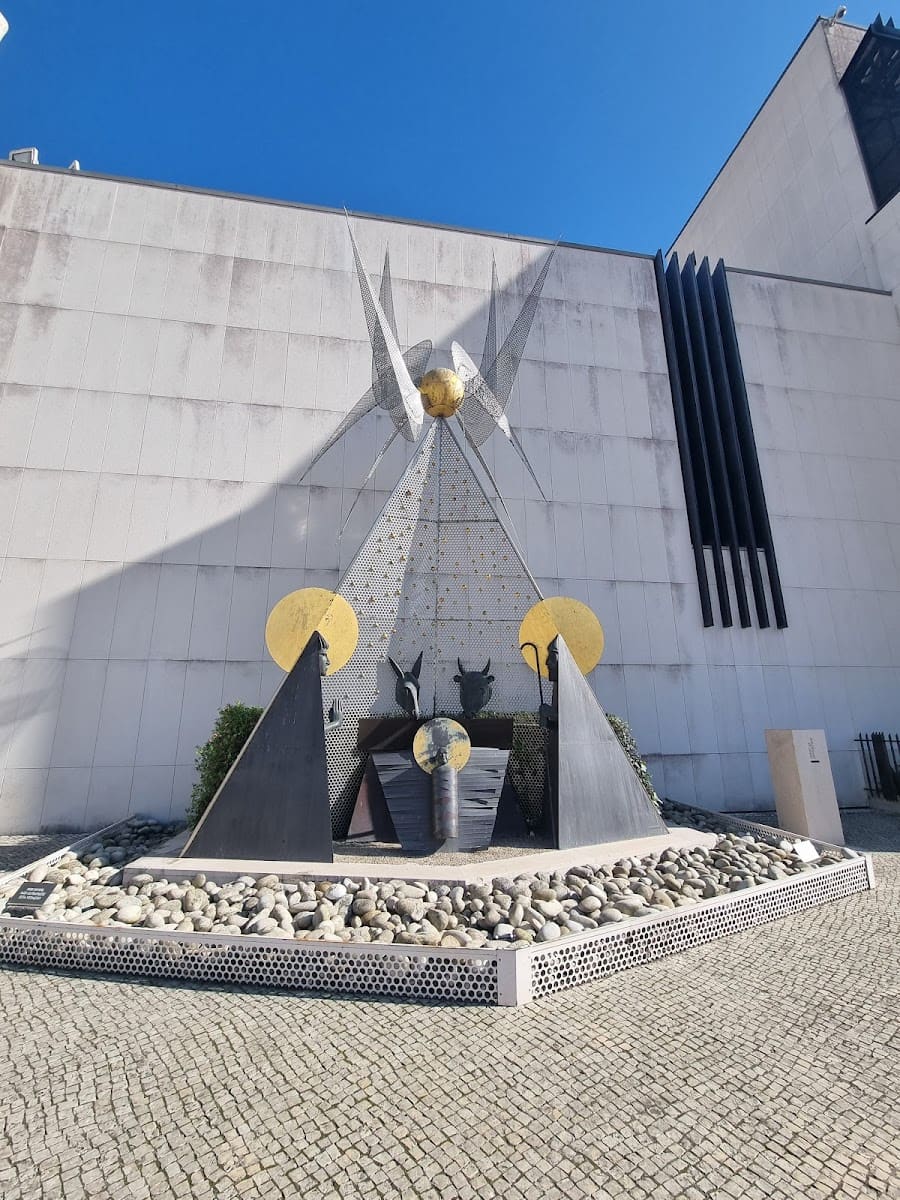
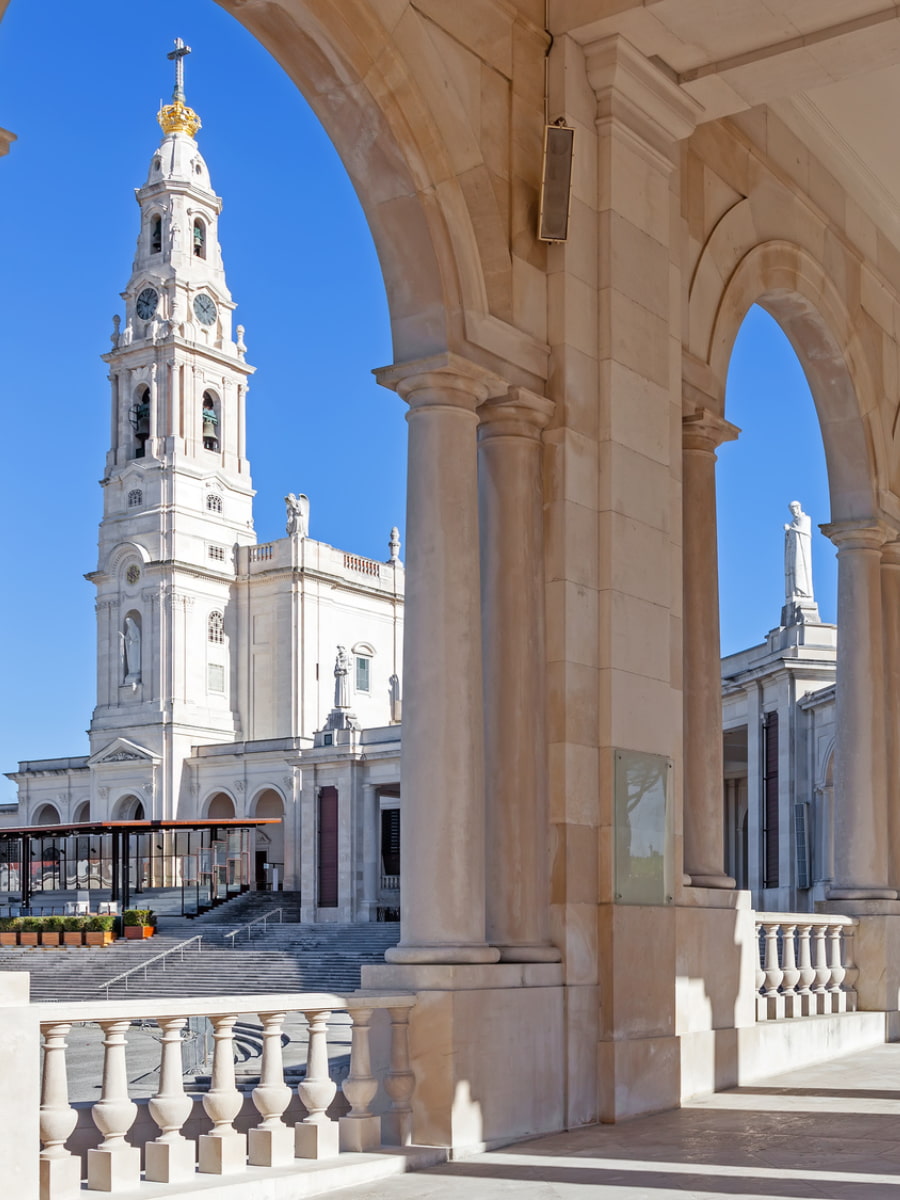
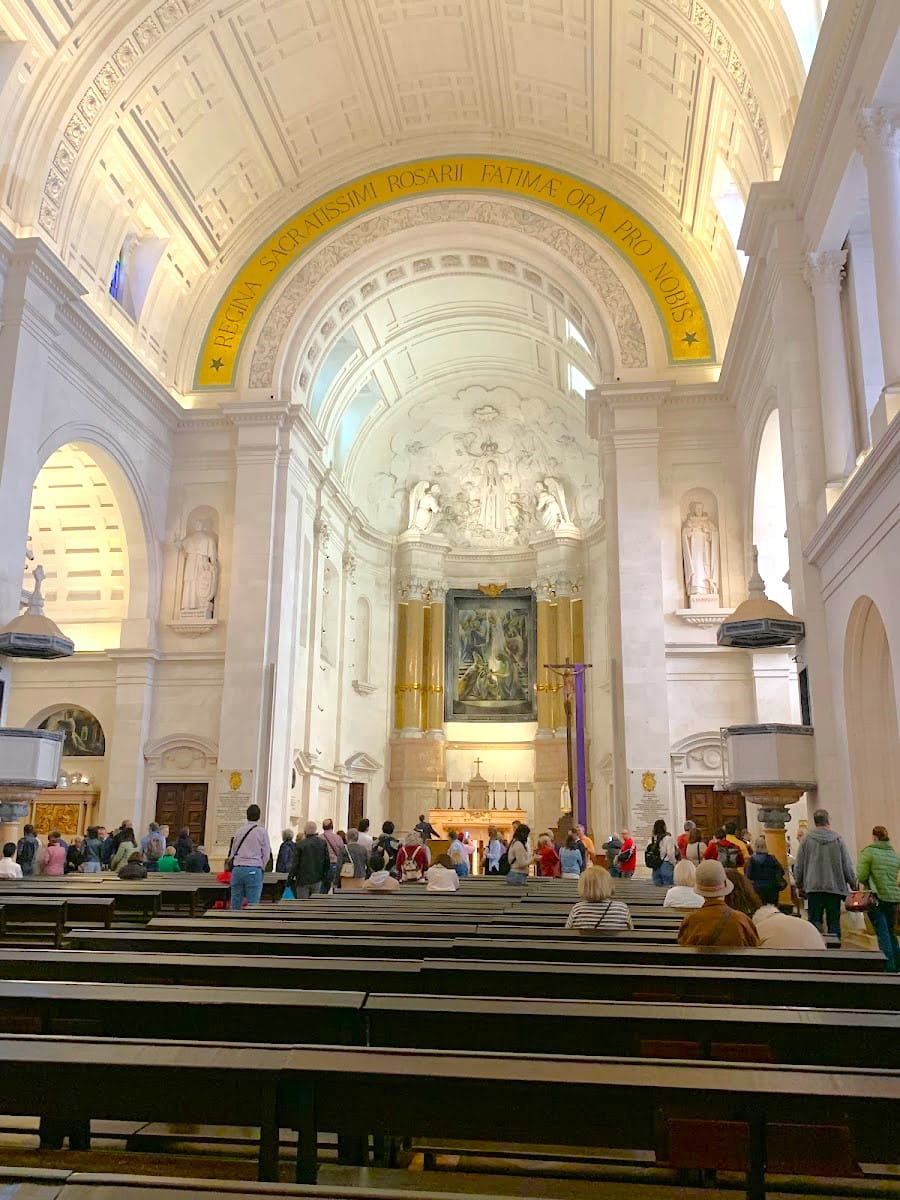
Prayer rituals. Many visitors light candles near the Chapel of Apparitions as offerings. I noticed different candle sizes available, each with corresponding prices displayed nearby. Some people light small ones for personal prayers, while others fulfill promises with larger candles.
Historical significance. Construction of the Sanctuary began in 1919 with the Chapel of Apparitions, exactly where Our Lady requested it be built. By 1930, the Church officially declared the apparitions worthy of belief, establishing Fátima as a major pilgrimage site.
Practical tip: Visit during weekdays to avoid the massive crowds that gather during major pilgrimages, especially on May 13 and October 13 when thousands of faithful commemorate the apparitions.
Key elements of the Sanctuary:
- The large prayer area that can hold up to 300,000 pilgrims
- The Chapel of Apparitions at the exact site of the Marian visions
- The Sacred Way (Via Sacra) connecting to Valinhos
- The High Cross standing 27 meters tall
- Candle burning areas where pilgrims fulfill their promises
2. Basilica of Our Lady of the Rosary
Architectural marvel. The gleaming white Neoclassical Basilica dominates the Sanctuary with its 65-meter central spire reaching toward the heavens. Built between 1928 and 1953, this stunning structure stopped me in my tracks with its Byzantine-style details and imposing façade.
Sacred interior. Inside, I discovered 15 unique altars dedicated to the mysteries of the rosary. Each chapel features mesmerizing mosaics that tell religious stories through intricate artistry. The way sunlight filters through the stained glass creates an almost otherworldly atmosphere.
Final resting place. The basilica houses the tombs of two shepherd children, Francisco and Jacinta Marto, who witnessed the apparitions and were beatified in 2000. Standing before their final resting places, I felt a profound connection to their remarkable story.
Visitor etiquette. Guards at the basilica doors enforce a dress code – no shorts for men and modest skirts or dresses for women. I recommend bringing a light scarf to cover shoulders if needed.
Practical experience. The basilica offers regular Mass services throughout the day. I attended one morning service and found the acoustics absolutely stunning, enhancing the spiritual atmosphere with every hymn.
| Basilica Features | Description |
|---|---|
| Architectural Style | Byzantine-Neoclassical |
| Construction Period | 1928-1953 |
| Number of Chapels | 15 (dedicated to rosary mysteries) |
| Notable Elements | Tombs of visionaries, ornate mosaics, impressive dome |
| Visitor Requirements | Modest dress (no shorts, shoulders covered) |
⭐ Best Activities
- Full-Day Fatima and Coimbra Tour – Combine two of central Portugal’s most fascinating destinations in one day as you visit the religious sanctuary of Fatima and explore the historic university city of Coimbra with an expert guide.
3. Chapel of the Apparitions
Spiritual epicenter. The humble Chapel of the Apparitions marks the exact spot where Our Lady appeared to the three shepherd children in 1917. I felt an immediate sense of reverence upon approaching this simple structure that stands in stark contrast to the grand basilicas nearby.
Original design. Built in 1919 following the Virgin Mary’s request, this modest white chapel with its open sides allows pilgrims to view the interior from all angles. I was struck by how such a small structure could hold such immense spiritual significance for millions.
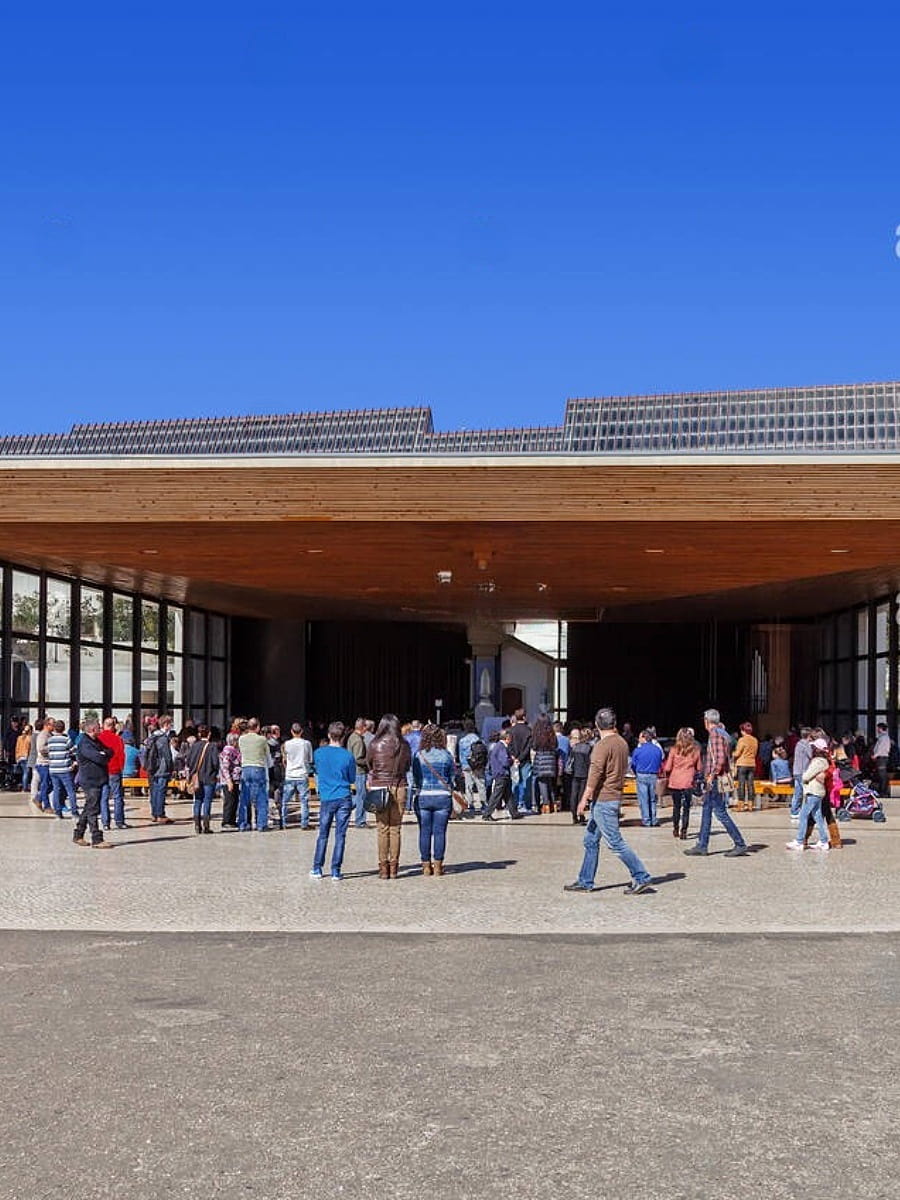
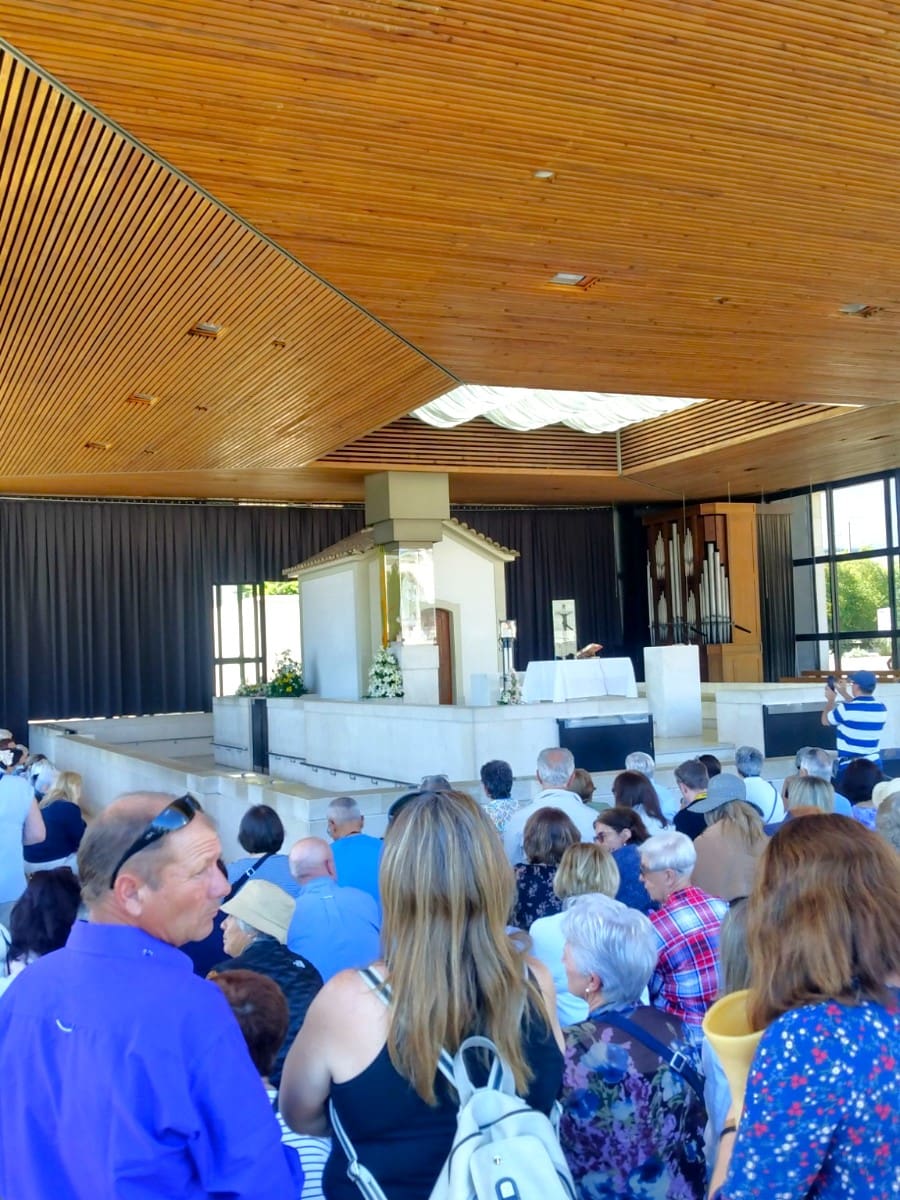
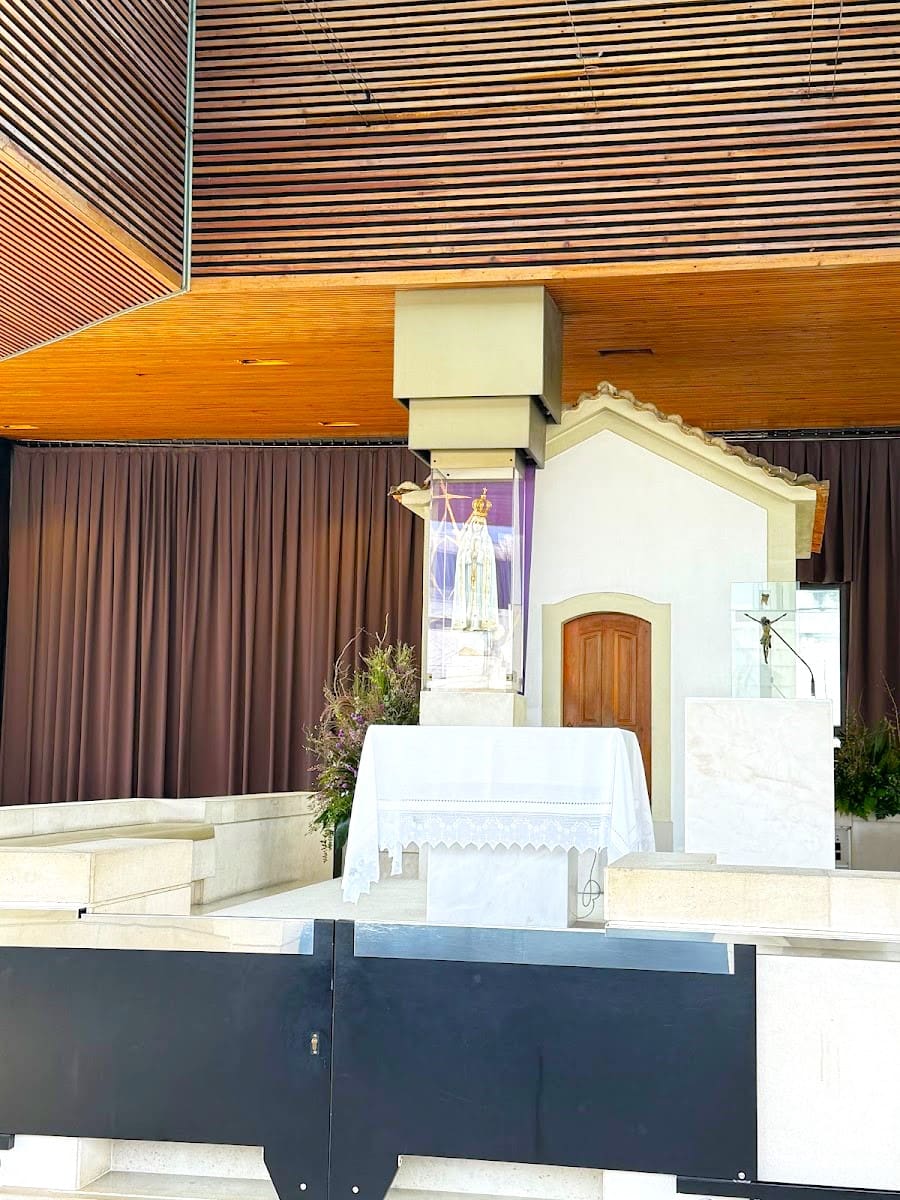
Sacred statue. Inside sits the venerated statue of Our Lady of Fátima, crowned with a precious diadem containing the bullet that wounded Pope John Paul II in 1981. The Pope later donated it as thanks for what he believed was Our Lady’s intervention in saving his life.
Continuous prayer. Day and night, I observed pilgrims kneeling before the chapel in silent prayer. The atmosphere of devotion is palpable, with many completing their pilgrimage by approaching on their knees along a smooth marble path designed for this purpose.
Personal experience. I attended the evening rosary and candlelight procession that begins here nightly at 9:30 PM. Watching thousands of candles illuminate the darkness while prayers echoed across the sanctuary created one of my most memorable moments in Portugal.
Must-see elements at the Chapel:
- The original oak tree where Our Lady appeared
- The golden crown housing Pope John Paul II’s bullet
- The perpetual flame burning since 1964
- The Berlin Wall fragment symbolizing the fall of communism
- The outdoor altar used for special Masses
⭐ Best Activities
- Private Tour of Fatima with Official Guide – Enjoy a personalized experience with an official guide who will share in-depth knowledge about Fatima’s religious significance and historical context on this private tour of the sanctuary complex.
4. Basilica of the Most Holy Trinity
Modern masterpiece. Completed in 2007, this circular contemporary basilica stands in striking contrast to the older structures at Fátima. I was immediately impressed by its massive scale – it can seat 8,633 people with standing room for thousands more.
Architectural brilliance. Designed by Greek architect Alexandros Tombazis, the basilica features a completely column-free interior spanning 125 meters. The clever design allows natural light to flood the space through hidden skylights, creating an atmosphere of divine illumination.
Artistic treasures. The basilica houses remarkable modern religious art, including a 20-meter bronze altar crucifix by Irish artist Catherine Greene. I spent nearly an hour admiring the 14 Stations of the Cross mosaics created by Jesuit Father Marko Rupnik.
Underground level. Beneath the main floor, I discovered 12 chapels dedicated to various saints, each with distinctive artistic styles. The Chapel of the Resurrection particularly moved me with its golden mosaics depicting Christ’s triumph over death.
Visitor insight. While the older basilica draws more attention, I found this modern structure equally powerful in its spiritual impact. The contrast between old and new architectural styles perfectly symbolizes the timeless nature of faith.
| Basilica Comparison | Most Holy Trinity | Our Lady of the Rosary |
|---|---|---|
| Architectural Style | Contemporary | Neoclassical-Byzantine |
| Completion Date | 2007 | 1953 |
| Seating Capacity | 8,633 | 900 |
| Notable Features | Column-free design, underground chapels | 15 rosary chapels, tombs of visionaries |
| Mass Schedule | Multiple daily services | Multiple daily services |
5. House of the Three Little Shepherds
Humble origins. Visiting the reconstructed homes of the shepherd children transported me back to early 20th-century rural Portugal. These simple stone cottages with thatched roofs reveal the modest circumstances of Lucia, Francisco, and Jacinta.
Authentic artifacts. Inside, I found carefully preserved personal belongings – simple wooden furniture, cooking utensils, and religious items that belonged to the families. The worn rosary beads particularly moved me, imagining how often they must have been held in prayer.
Daily life. The houses provide fascinating insight into the children’s everyday existence before the apparitions changed their lives forever. I was struck by the basic living conditions – small beds, minimal possessions, and spaces where multiple family members shared tight quarters.
Cultural context. These homes helped me understand the social and economic realities of rural Portuguese life in the early 1900s. Most families in Aljustrel village were poor farmers and shepherds, with children working from an early age.
Visitor tip. I recommend visiting early in the day to avoid tour groups. The houses are small, and crowds can make it difficult to appreciate the intimate details that make these sites so special.
⭐ Best Activities
- Fatima Sanctuary and Aljustrel Village Private Guided Tour – Discover both the main sanctuary and the nearby village of Aljustrel where the three children lived on this comprehensive private guided tour that provides deeper context to the Fatima story.
6. Valinhos Sanctuary
Peaceful retreat. Located about 2 km from the main sanctuary, Valinhos marks the site of the fourth apparition in August 1917. I enjoyed the tranquil walk along the Via Sacra (Way of the Cross), which connects the main sanctuary to this serene location.
Hungarian Calvary. The path features 14 chapels representing the Stations of the Cross, donated by Hungarian Catholics. Each station features distinctive ceramic tiles depicting Christ’s passion. I found this reflective journey a perfect counterbalance to the busier main sanctuary.
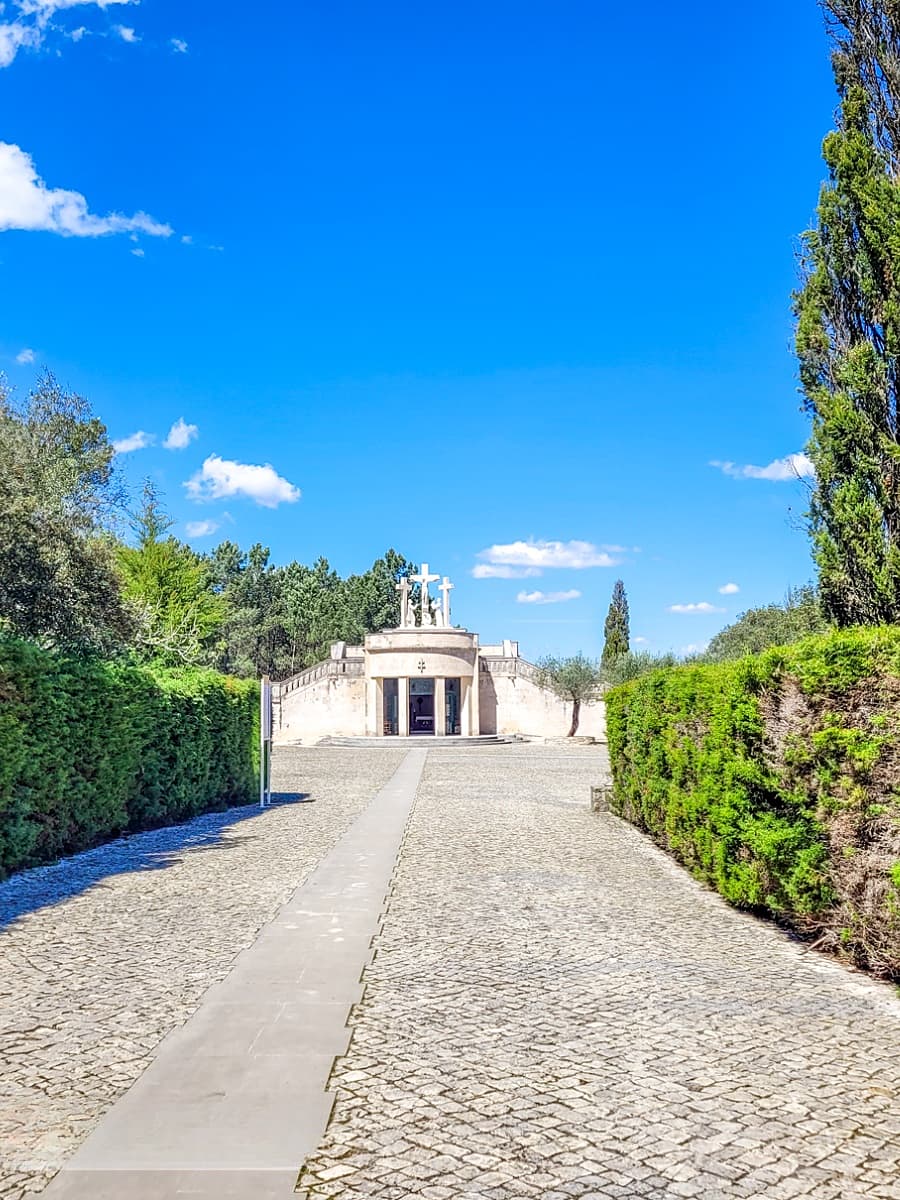
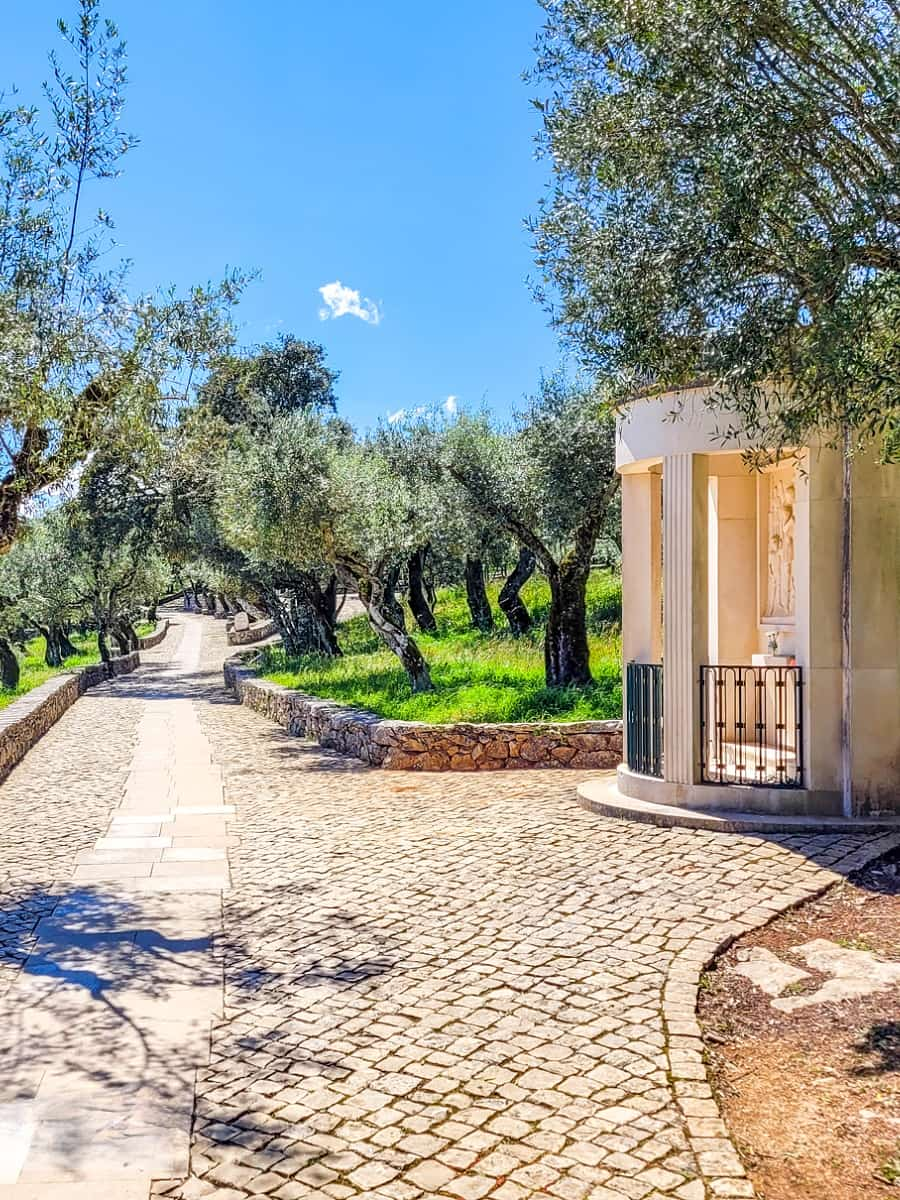
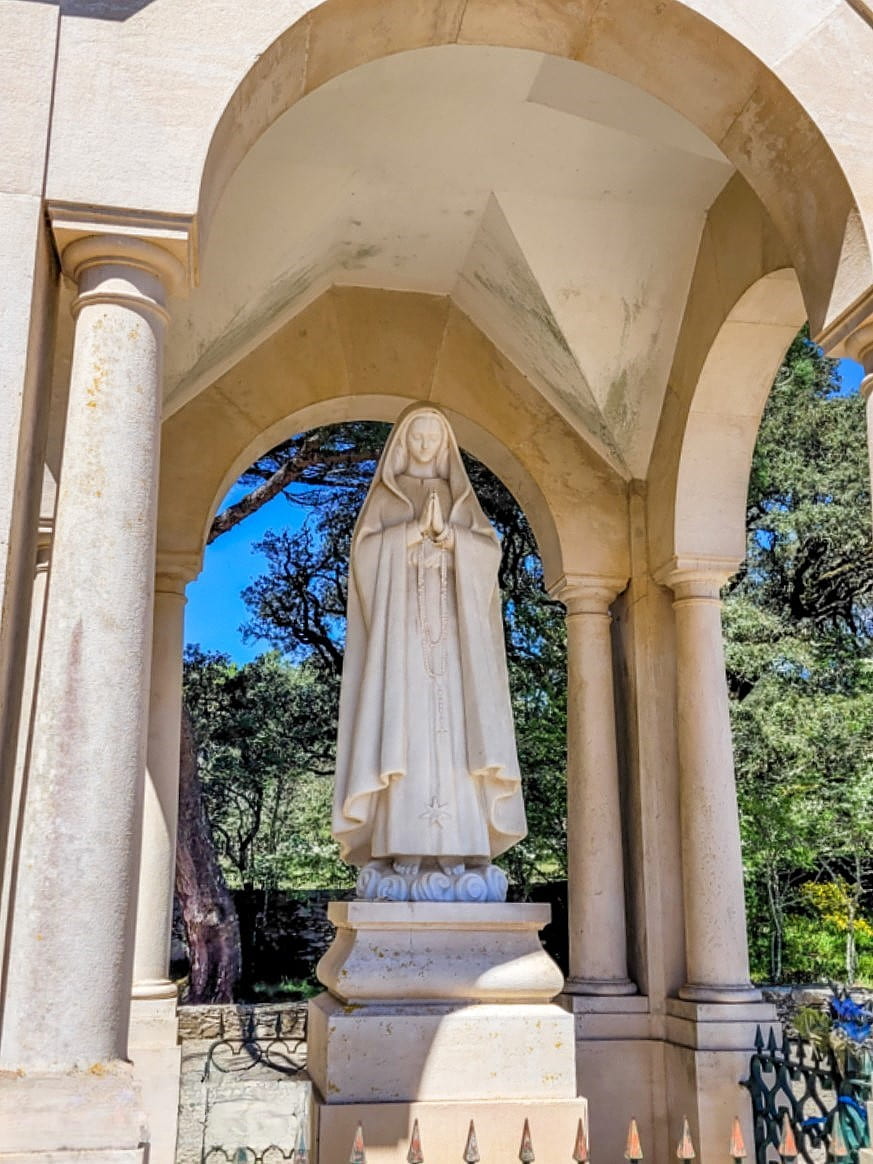
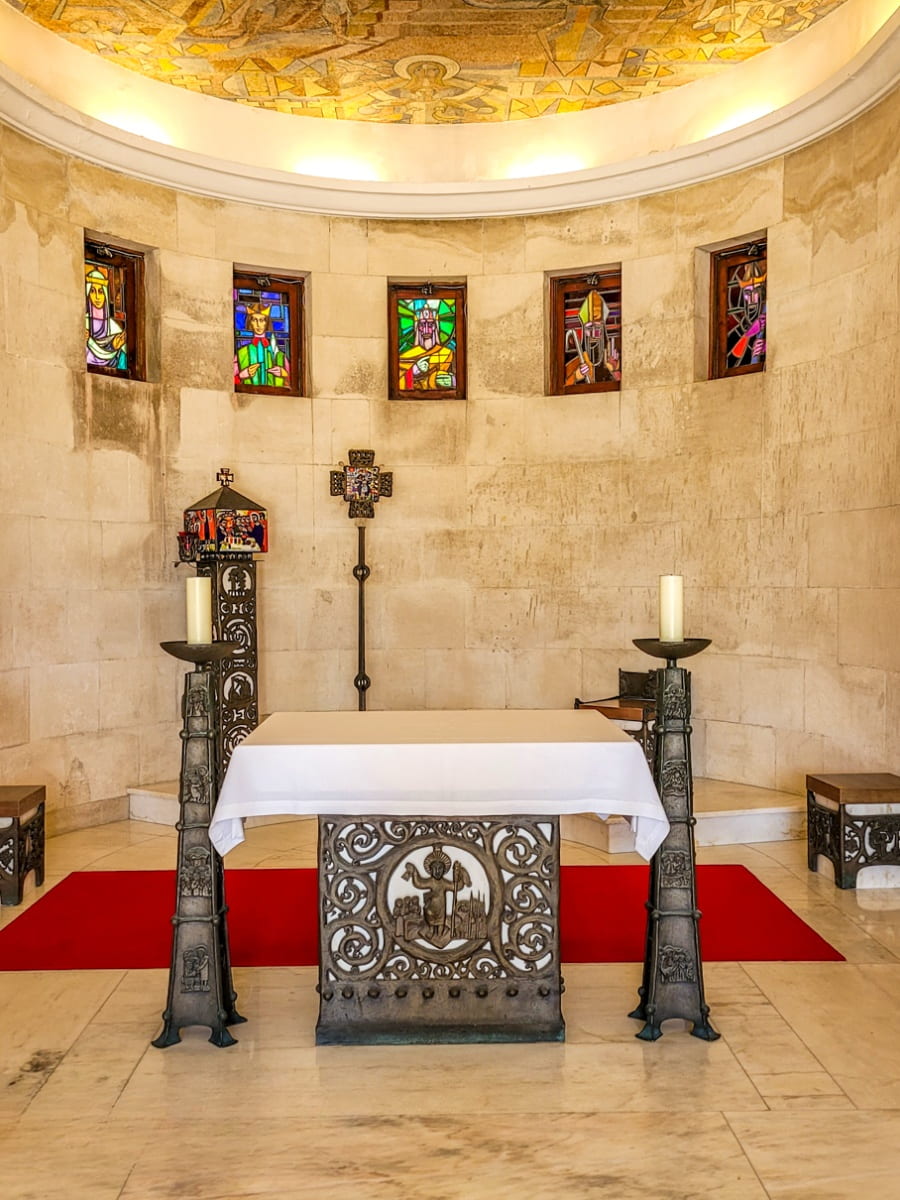
Monument to apparition. A striking statue marks the exact spot where Our Lady appeared to the children on August 19, 1917. The peaceful surroundings, with olive trees and stone walls, create an atmosphere conducive to quiet contemplation.
Loca do Cabeço. Nearby, I discovered the site where an angel appeared to the children before the Marian apparitions. A simple monument marks this location, which fewer tourists visit despite its significance in the Fátima story.
Nature connection. What struck me most about Valinhos was how it preserves the natural landscape the shepherd children would have known. The rocky terrain, olive groves, and open skies helped me imagine the children tending their flocks here over a century ago.
Key sites at Valinhos:
- The monument marking the August 1917 apparition
- The Hungarian Stations of the Cross
- Loca do Cabeço (site of angelic apparitions)
- The original stone walls from the children’s time
- The peaceful olive groves perfect for reflection
⭐ Best Activities
- Fatima Private Walking Tour – Explore Fatima’s sacred sites on foot with a knowledgeable local guide who will lead you through the sanctuary complex while sharing insights about its religious and cultural importance.
7. Grutas da Moeda (Moeda Caves)
Natural wonder. Just 10 km from Fátima, these spectacular limestone caves offered a fascinating counterpoint to my religious explorations. Discovered in 1971 by two hunters, the caves extend 350 meters underground and showcase nature’s artistic capabilities.
Guided experience. My 45-minute tour (€7/adult, €4/child) led me through chambers with evocative names like “Shepherd’s Room” and “Wedding Cake.” The guide pointed out formations resembling religious figures, creating an interesting parallel to Fátima’s spiritual significance.
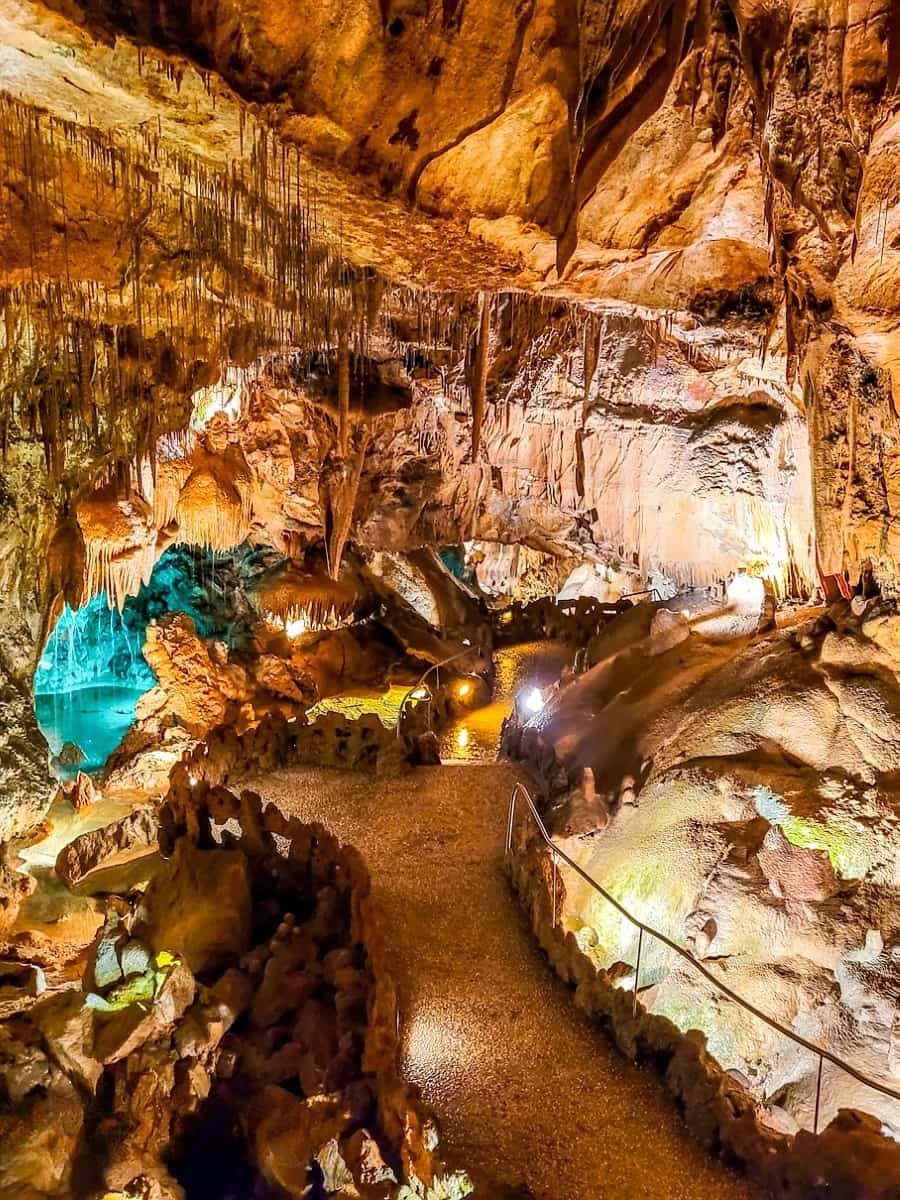
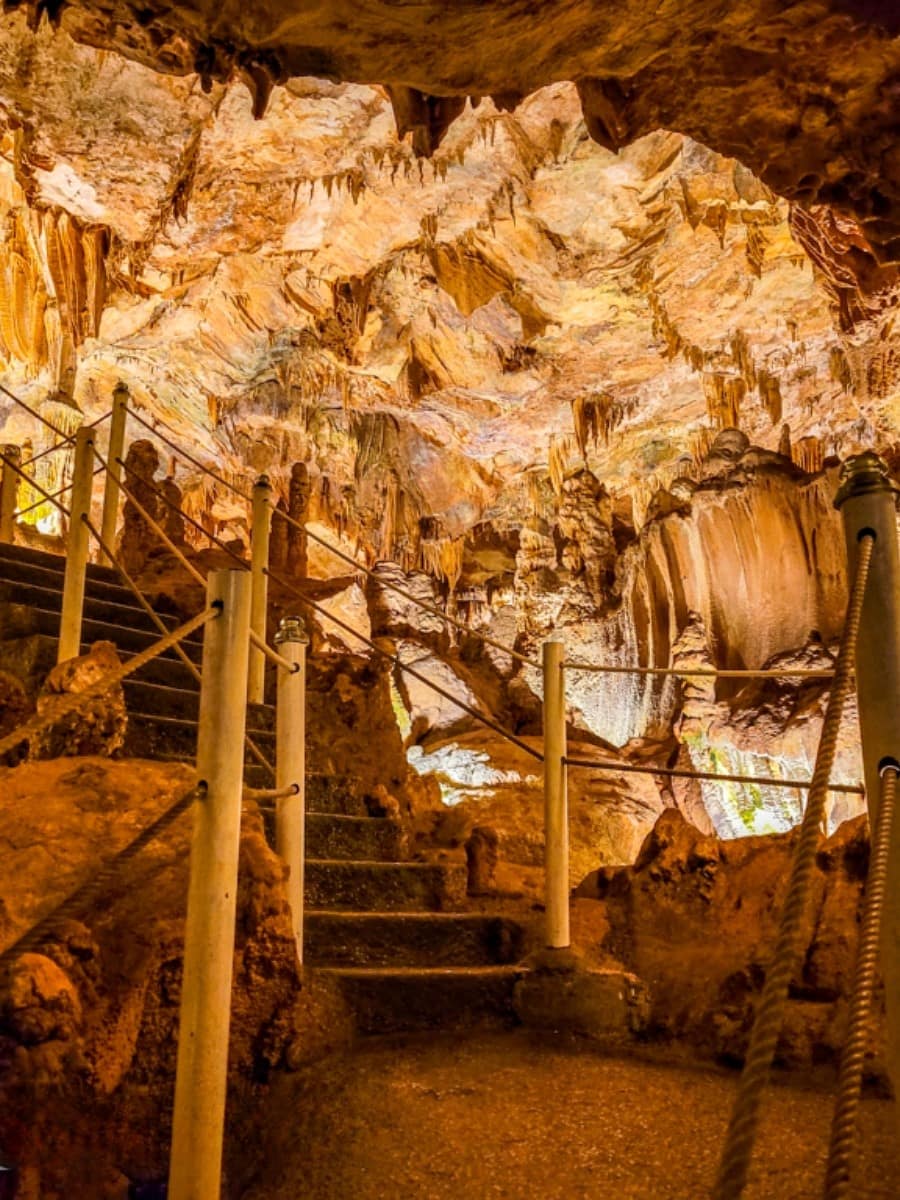
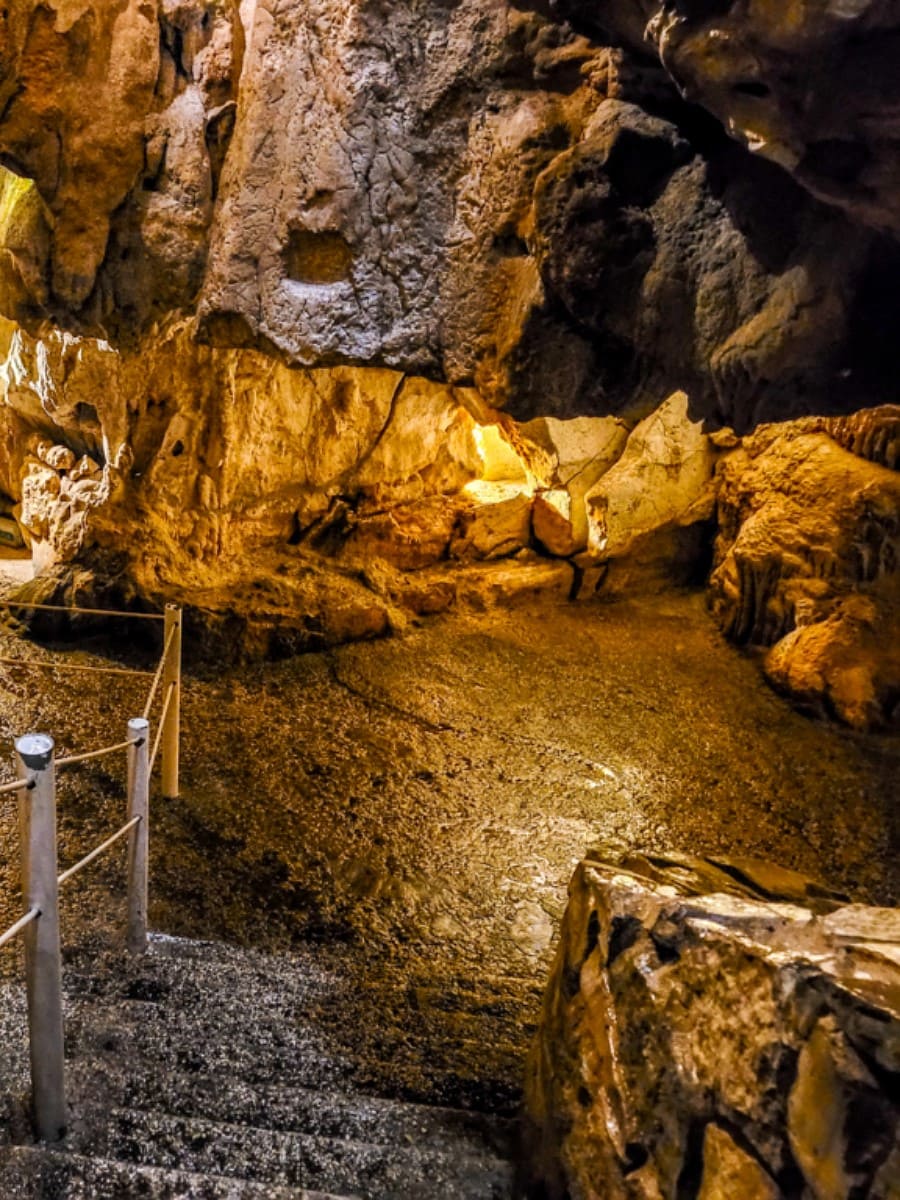
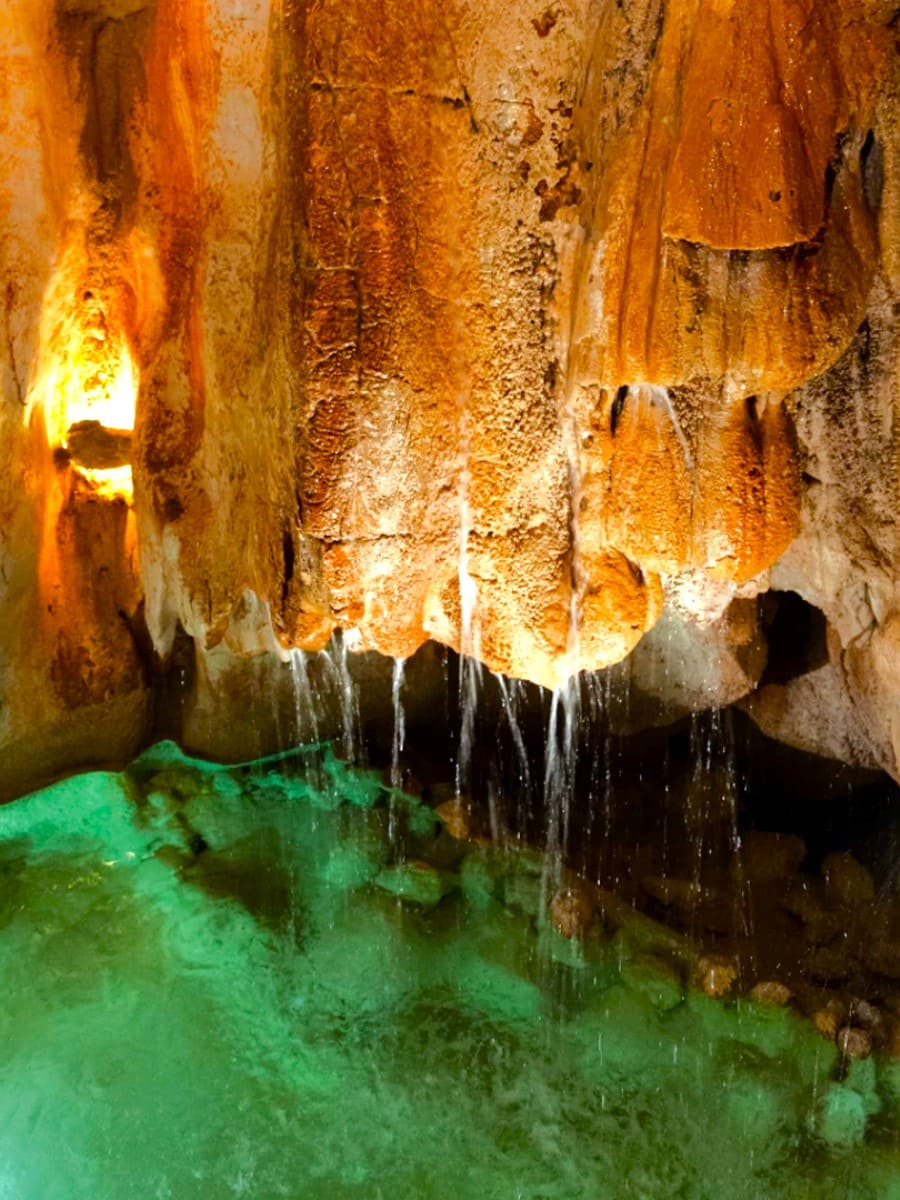
Geological marvels. I was mesmerized by the stalactites and stalagmites formed over thousands of years. The “Fountain of Tears” particularly impressed me – a formation where water droplets create a musical sound as they fall into a small pool below.
Comfortable exploration. Unlike some caves I’ve visited, Moeda features well-maintained walkways, good lighting, and a consistent temperature of around 18°C year-round. I appreciated not having to worry about difficult terrain while admiring the underground wonders.
Family-friendly. This makes an excellent activity for families needing a break from religious sites. My guide engaged younger visitors with stories about how the caves formed and pointed out formations resembling animals and familiar objects.
8. Sacred Art and Ethnology Museum
Cultural treasure. Located near the sanctuary, this museum houses an impressive collection of religious artifacts, liturgical objects, and ethnographic displays. I spent about two hours exploring its well-curated exhibits spanning multiple floors.
Artistic highlights. The museum’s collection includes precious chalices, monstrances, and vestments used in religious ceremonies throughout Portugal’s history. I was particularly drawn to the intricate goldwork showing Portuguese craftsmanship at its finest.
Historical context. Displays effectively explain how Fátima transformed from a remote rural village to one of Catholicism’s most important pilgrimage sites. Historical photographs, documents, and timelines helped me understand this remarkable evolution.
Cultural significance. Beyond religious items, the ethnology section showcases traditional Portuguese rural life through tools, clothing, and household items. This provided valuable context for understanding the world the three shepherd children inhabited.
Visitor experience. At €5 per adult, the museum offers excellent value. I appreciated the English descriptions accompanying major exhibits, though having Google Translate handy helped with some Portuguese-only displays.
| Museum Information | Details |
|---|---|
| Opening Hours | 9:00 AM – 6:00 PM (Closed Mondays) |
| Admission | €5 adults, €2.50 students/seniors, Free under 12 |
| Guided Tours | Available in English at 11 AM and 3 PM |
| Photography | Permitted without flash |
| Accessibility | Elevator access to all floors |
9. Lucia’s House Portugal
Historical preservation. Sister Lucia’s childhood home offers a poignant glimpse into the life of the longest-living Fátima visionary. Unlike her cousins who died young, Lucia lived until 2005, becoming a Carmelite nun and the primary chronicler of the apparitions.
Family dwelling. The simple stone house contains original furnishings and personal items belonging to the Santos family. I was touched by the modest bedroom where young Lucia slept and prayed, imagining the extraordinary experiences that would shape her long life.
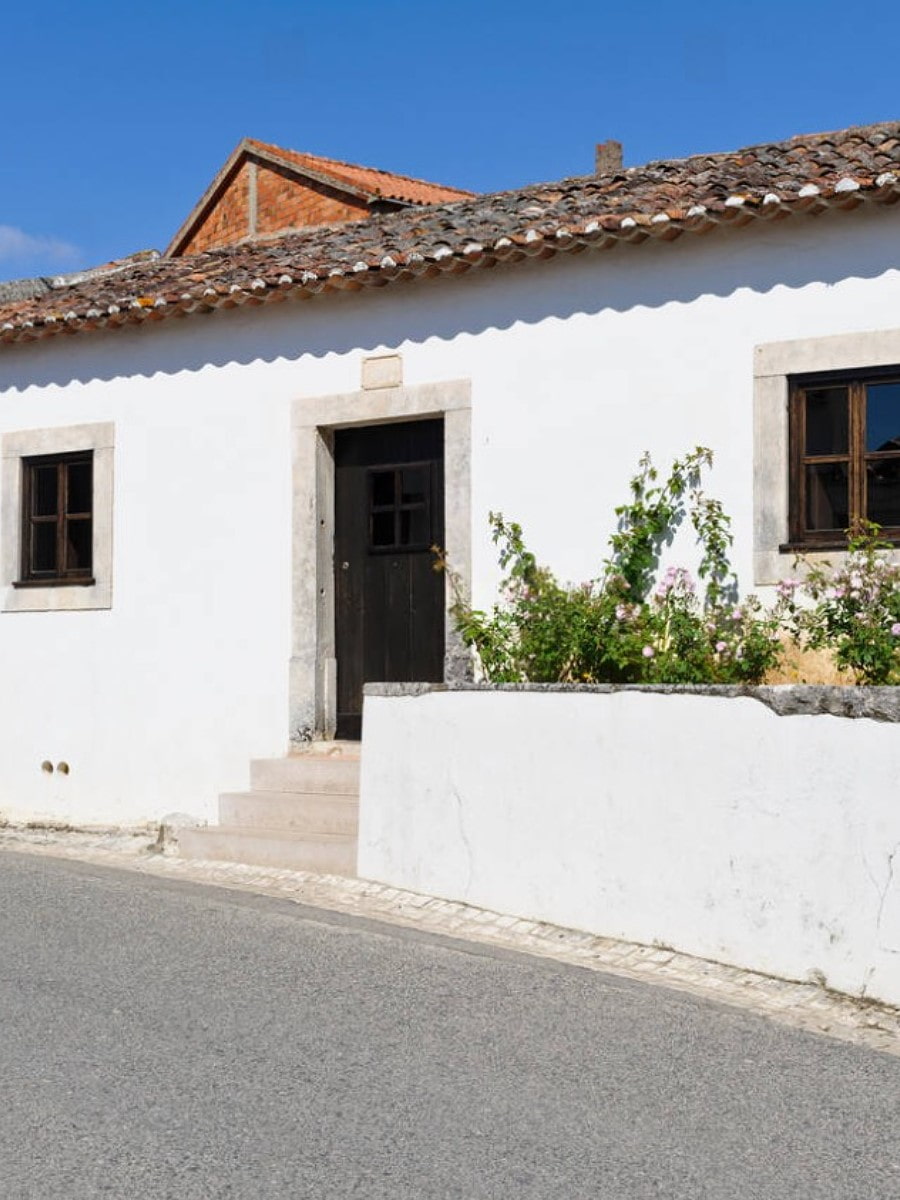
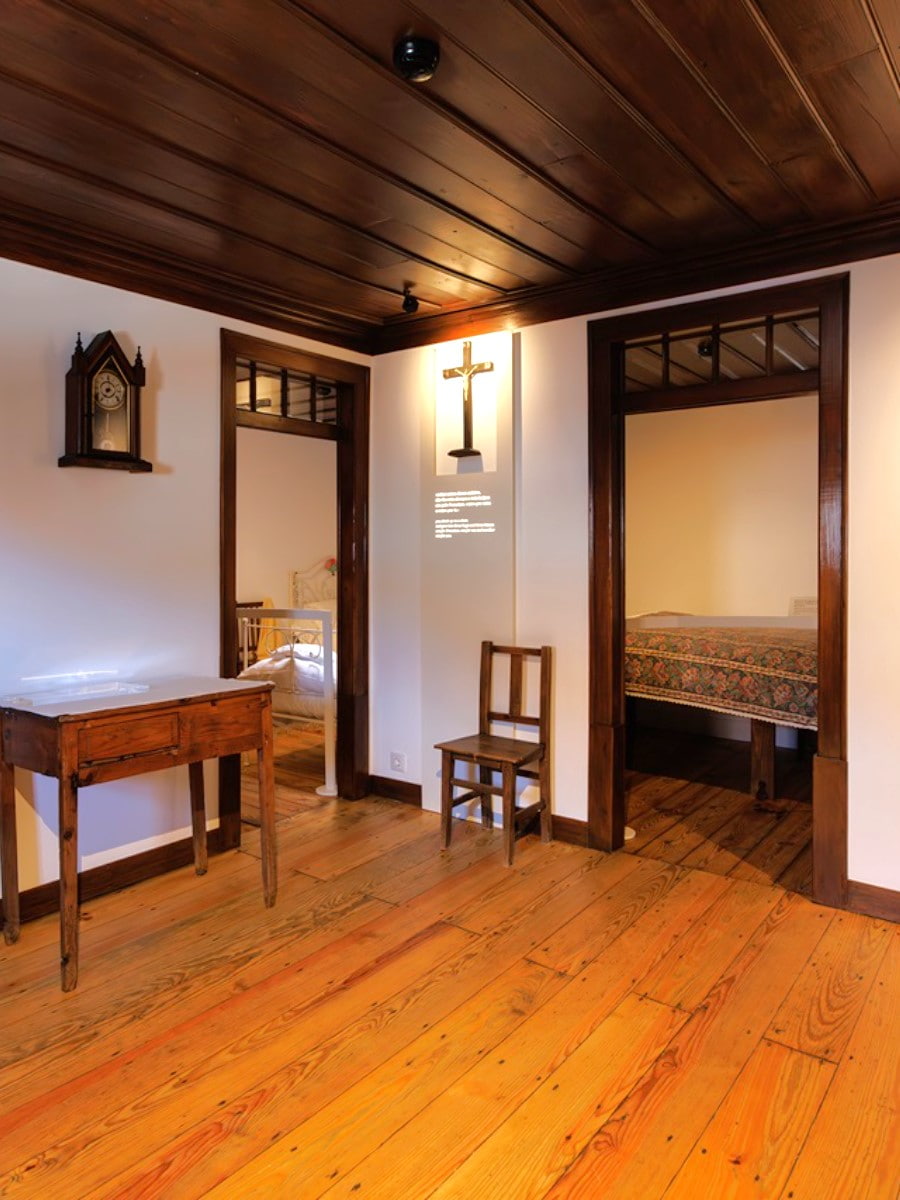
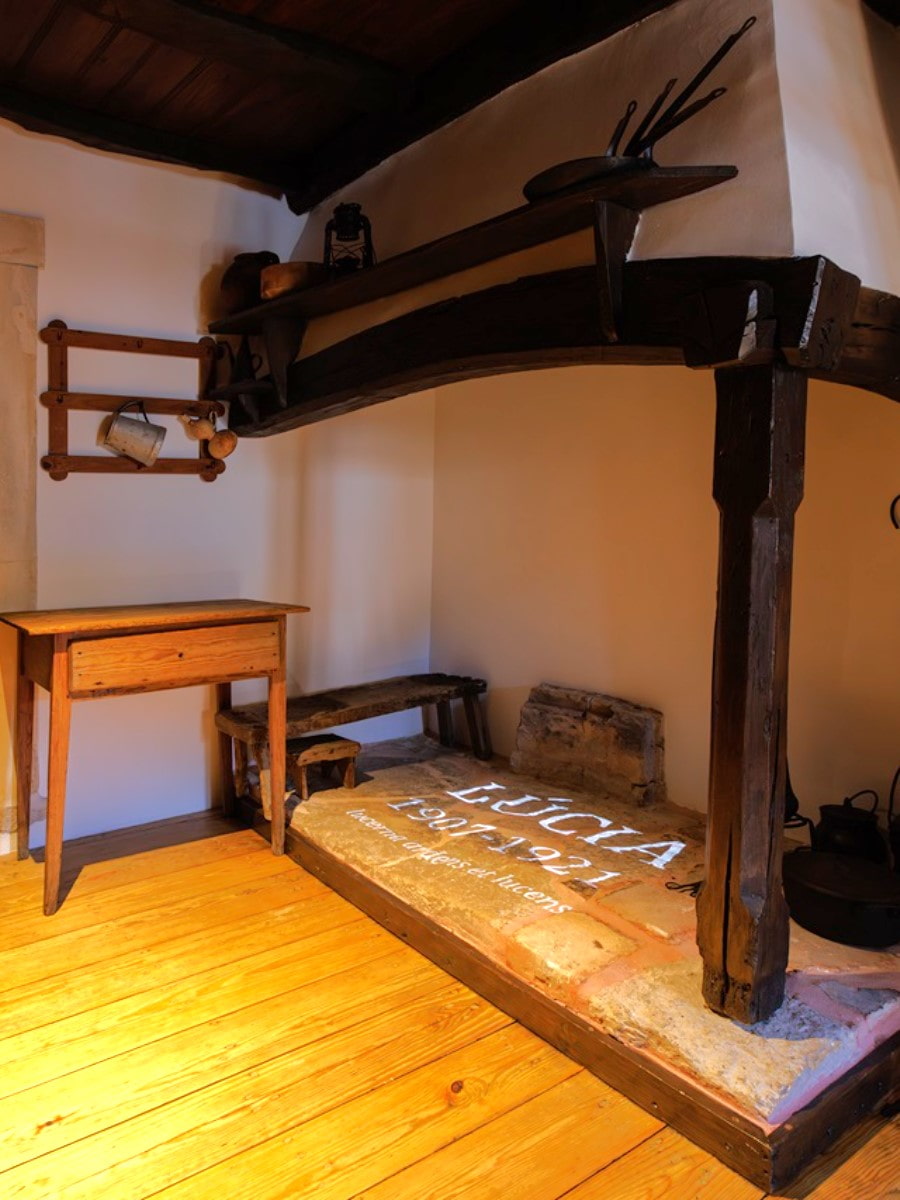

Photo gallery. A collection of photographs traces Lucia’s journey from shepherd girl to respected religious figure. Images of her meetings with various popes and world leaders highlight how this humble child became an influential spiritual voice.
Visitor experience. The house receives fewer visitors than the main sanctuary sites, allowing for a more intimate experience. I appreciated the opportunity to linger and reflect without feeling rushed by crowds.
Local insight. Speaking with the elderly caretaker, I learned fascinating details about Lucia’s later visits to her hometown. Though she spent most of her life in convents, her connection to Aljustrel remained strong throughout her 97 years.
⭐ Best Activities
- Fatima Private Tour: Shrine, Sacred Path & Shepherds' House – Follow the complete Fatima story from the sanctuary to the sacred path and the shepherds’ homes on this comprehensive private tour that covers all the significant sites related to the apparitions.
10. Francisco and Jacinta’s House
Saintly siblings. The childhood home of Francisco and Jacinta Marto provides a moving glimpse into the brief lives of Catholicism’s youngest non-martyred saints. Canonized in 2017, these children died shortly after the apparitions – Francisco at 10 and Jacinta at 9.
Preserved interiors. Inside the stone cottage, I found the simple bedroom shared by the siblings, family kitchen with original cooking implements, and religious items that reflect the deep faith of the Marto family. The modest surroundings emphasize the children’s humble origins.
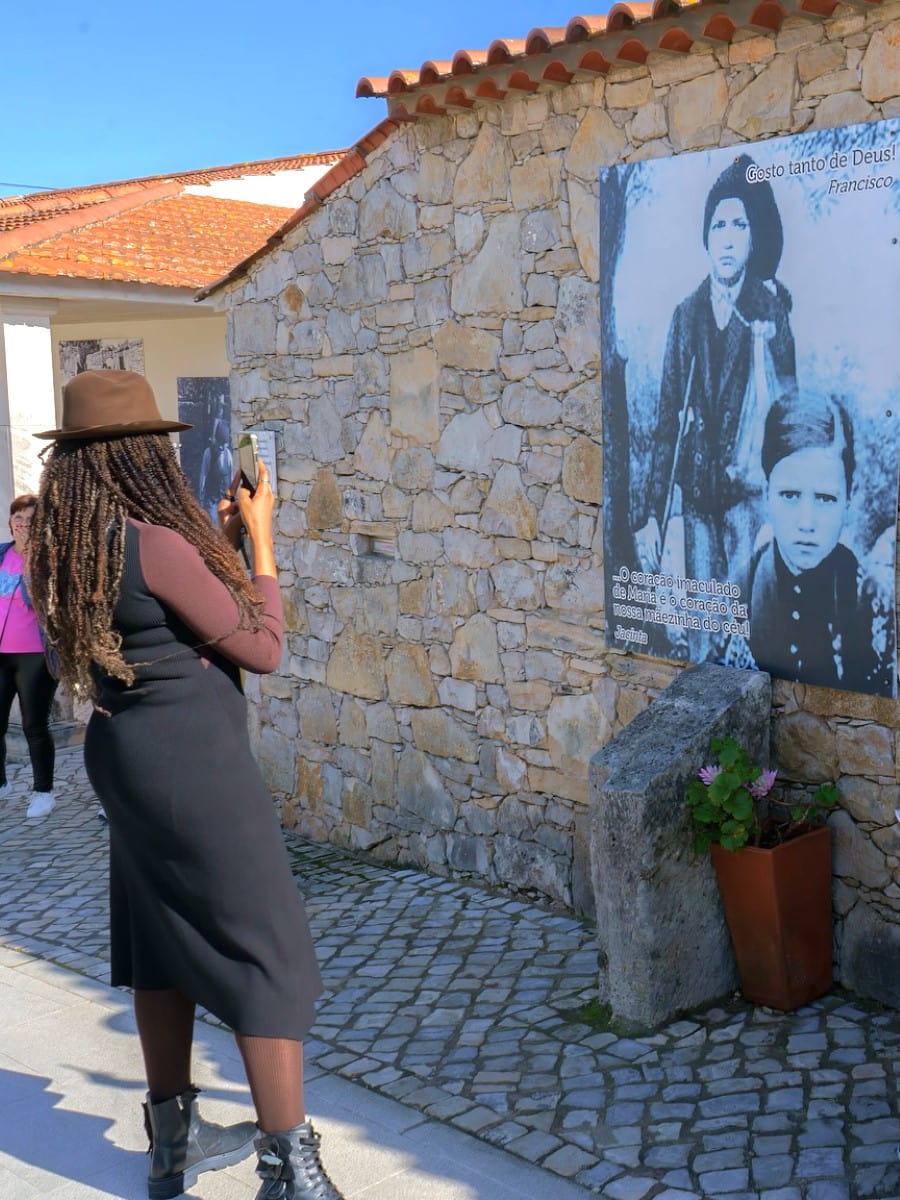
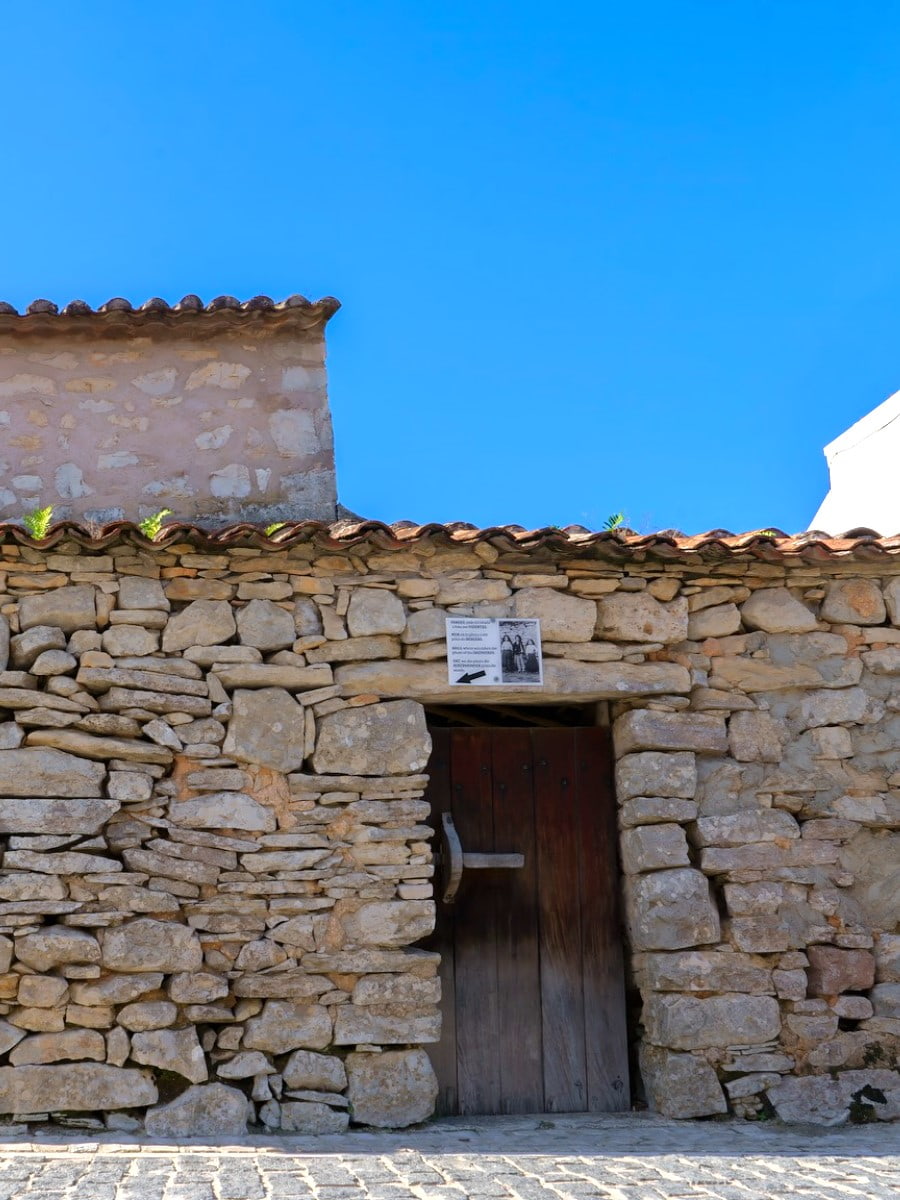
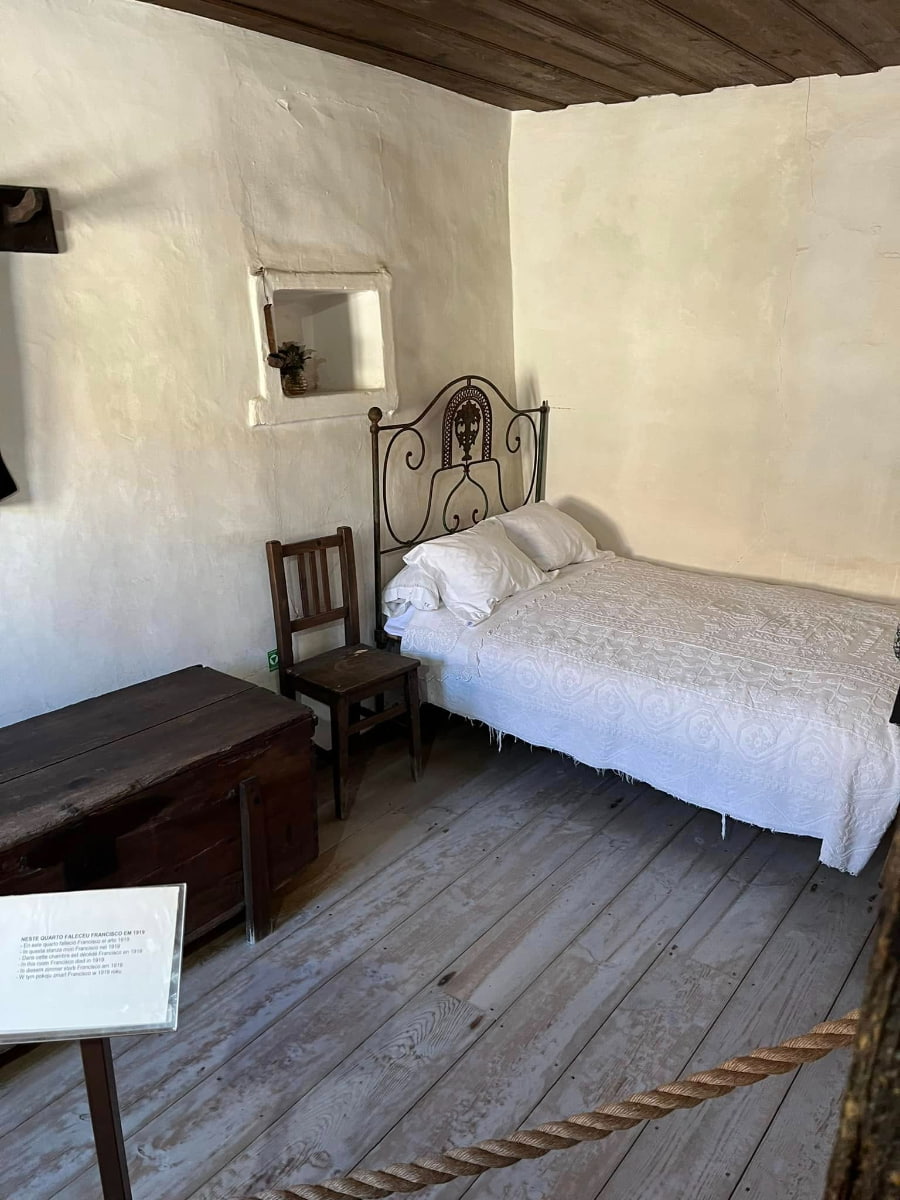
Personal belongings. Glass cases display touching personal effects – small pieces of clothing, simple toys, and the rosary beads the children used daily. These intimate items created a powerful connection to the young visionaries who never reached adulthood.
Historical photographs. Black and white images show Francisco and Jacinta before and after the apparitions, including some of their final photographs taken during the influenza epidemic that claimed their lives. The transformation in their expressions is remarkable.
Spiritual atmosphere. Many visitors pray at this site, considering it holy ground. I observed several pilgrims leaving written prayer intentions and small offerings near the children’s beds – a testament to their ongoing spiritual significance.
Things to notice at the Marto home:
- The small wooden beds where the children slept
- Family photos showing the Marto family before the apparitions
- Religious items reflecting Portuguese Catholic traditions
- The kitchen hearth where family meals were prepared
- The rosary beads used by Francisco and Jacinta
⭐ Best Activities
- The Magnetism of Fatima – Experience the special atmosphere and spiritual energy of Fatima on this uniquely named tour that explores the sanctuary and surrounding areas that have drawn millions of visitors for over a century.
Things to Do in Fatima with Kids
1. Grutas da Moeda
Underground adventure. Taking my kids to Grutas da Moeda turned out to be the highlight of our family trip to Fátima. These limestone caves, discovered in 1971, captivated their imagination with formations resembling castles, wedding cakes, and mysterious creatures.
Educational fun. Our guide expertly balanced scientific information with entertaining stories that kept even my youngest engaged. The children were fascinated learning how each centimeter of stalactite takes approximately 100 years to form – a perfect lesson in geological timescales.
Safe exploration. The well-lit pathways and secure railings allowed my children to explore independently without causing me anxiety. The consistent 18°C temperature inside made it a perfect escape from summer heat or winter chill, regardless of when you visit.
Interactive elements. My kids loved the “echo chamber” where they could test sound reverberations, and the “wishing pool” where they tossed coins while making wishes. These simple interactive moments created lasting memories beyond the religious experiences in Fátima.
Practical parent tip: The cave tour takes about 45 minutes – perfect for children’s attention spans. Bring light jackets even in summer, and wear non-slip shoes. The on-site café offers reasonably priced snacks (€2-4) to refuel hungry explorers afterward.
Family-friendly features at Grutas da Moeda:
- Child-friendly guided tours with simplified explanations
- Photo opportunities with dramatic cave formations
- Interactive sound and light demonstrations
- Smooth pathways suitable for all ages
- Gift shop with affordable geological souvenirs (€3-10)
2. Serras de Aire e Candeeiros Natural Park
Natural playground. Just a short drive from Fátima’s religious sites, this stunning natural park offered my family a complete change of pace. My children delighted in exploring limestone formations, hidden caves, and spotting unique flora and fauna across the rugged landscape.
Dinosaur footprints. The absolute highlight for my dinosaur-obsessed kids was seeing the world’s longest sauropod trackway at Pedreira do Galinha. These 175-million-year-old footprints sparked their imagination far more than any museum exhibit could.
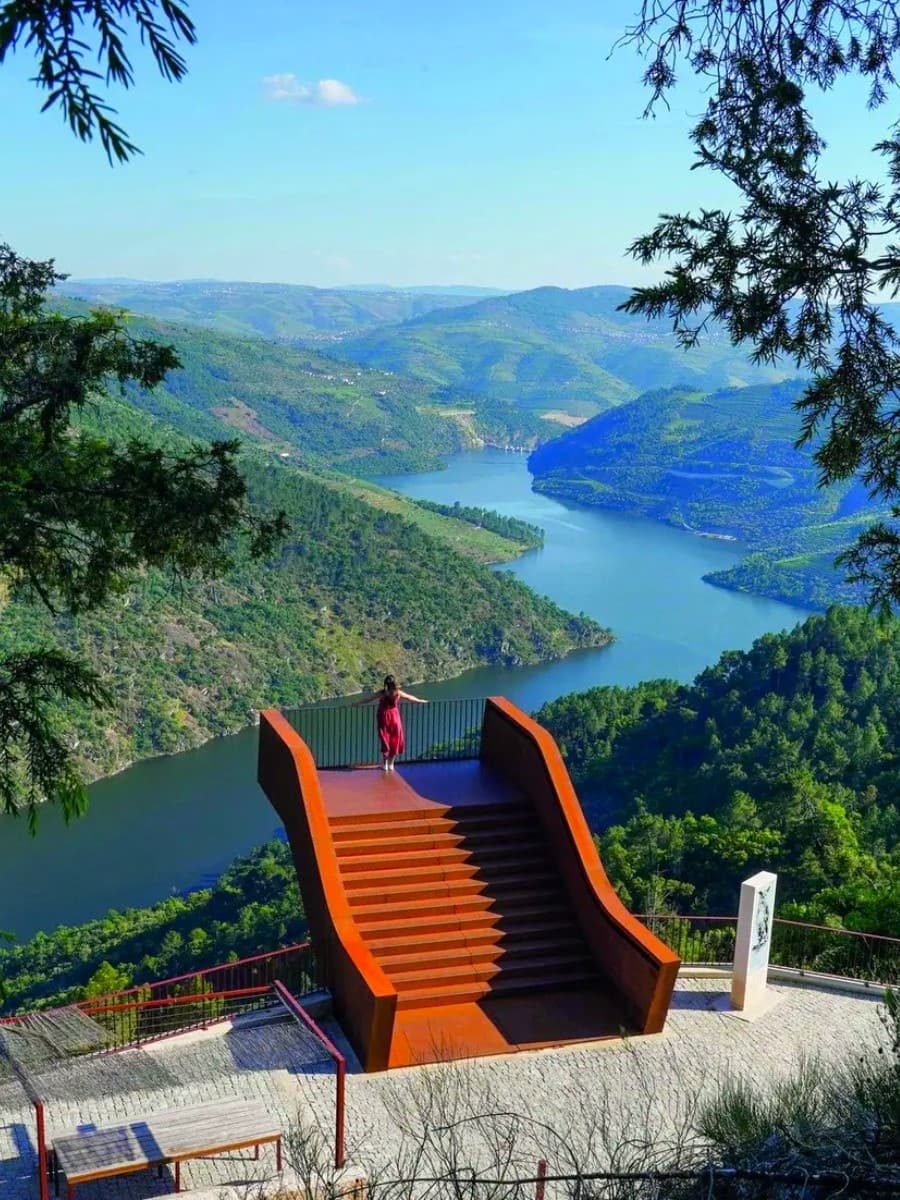
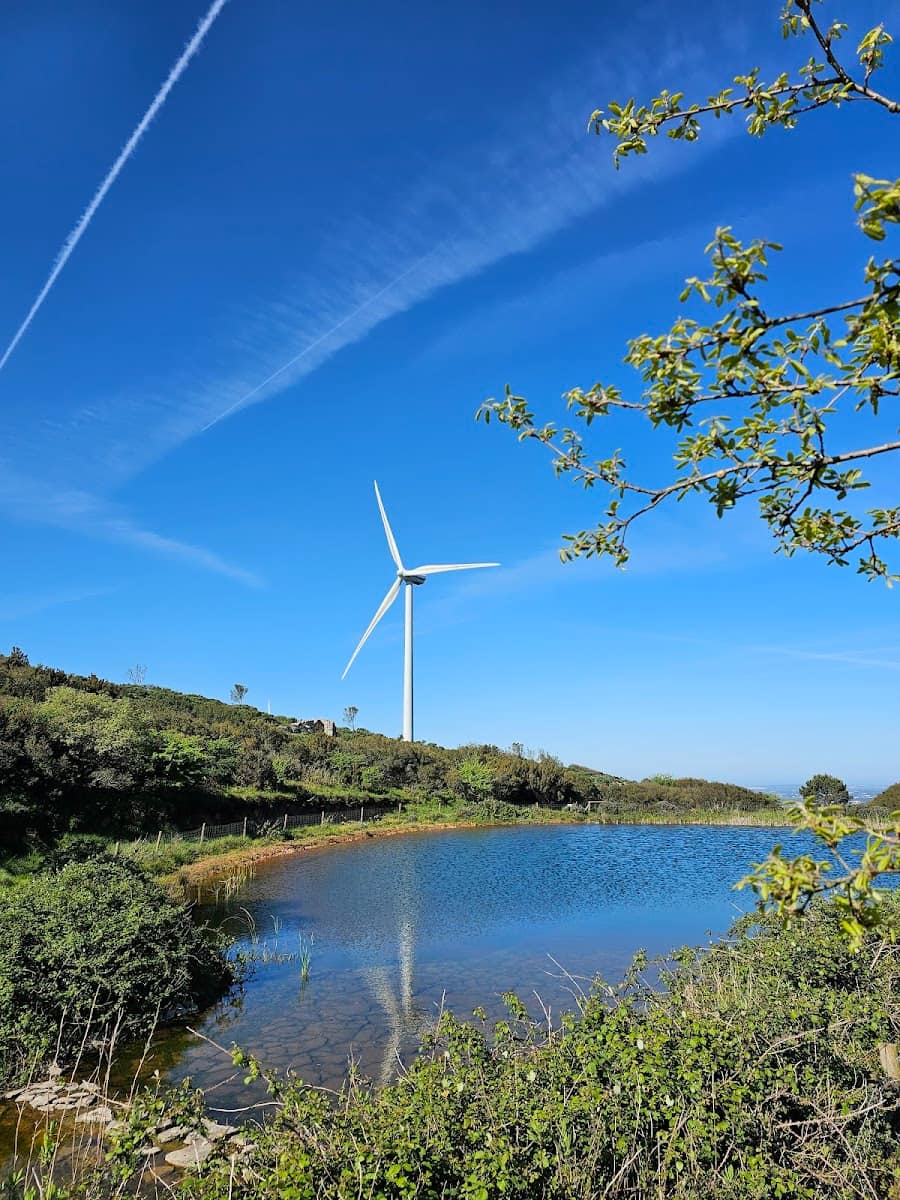
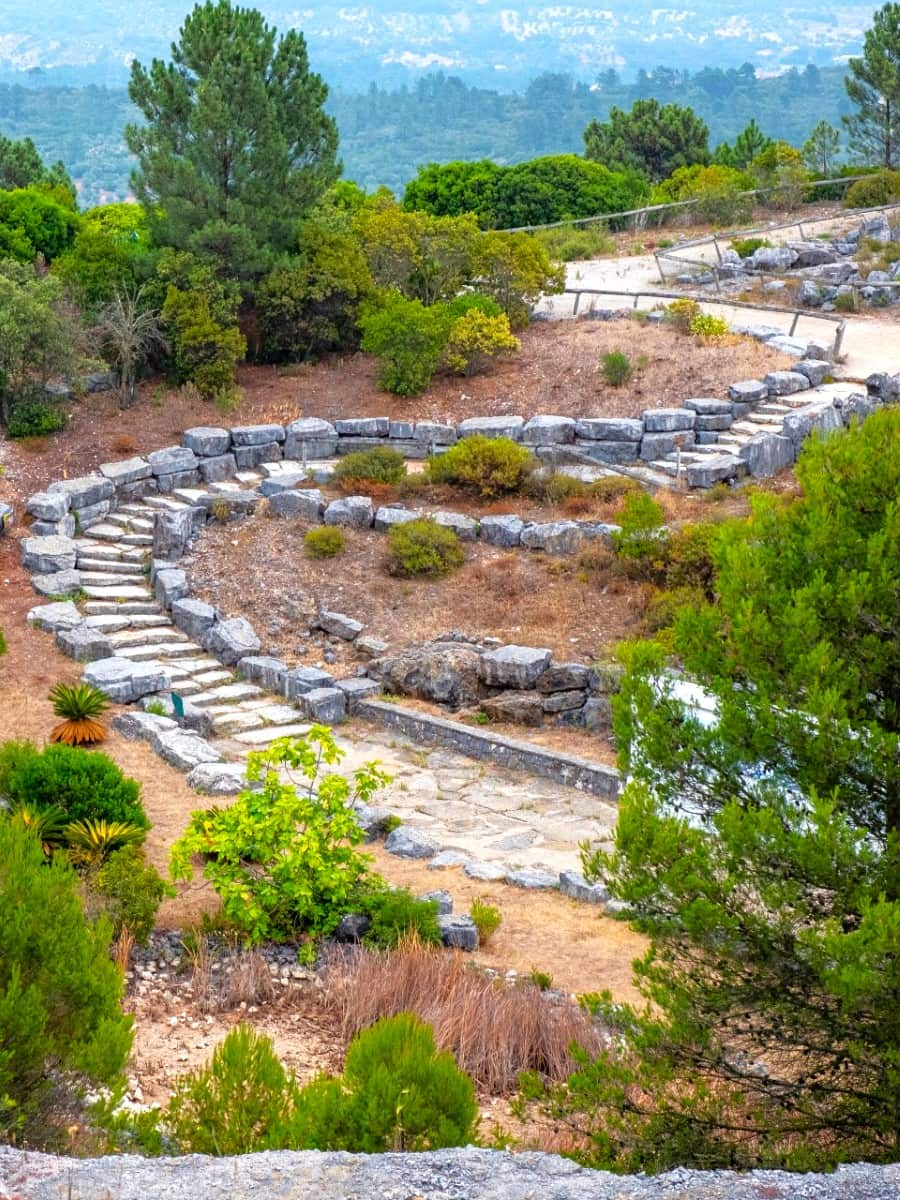
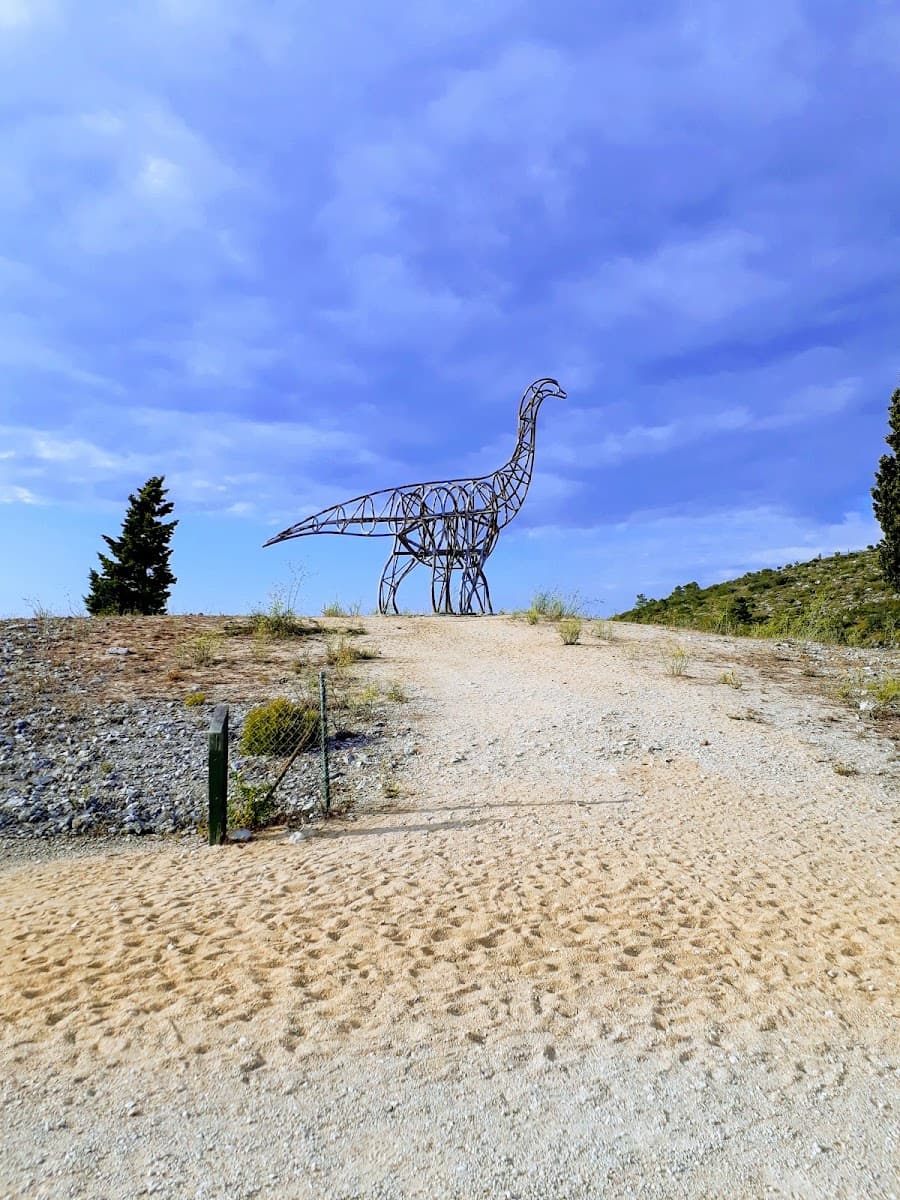
Hiking adventures. We chose the family-friendly Fórnea trail (4km), which features a natural amphitheater and seasonal waterfall. My children collected interesting rocks and spotted colorful butterflies along the way, turning a simple walk into an exciting treasure hunt.
Wildlife encounters. The park’s visitor center provided us with wildlife spotting guides, and my kids were thrilled to check off sightings of eagles, foxes, and numerous butterfly species. The staff suggested optimal times for wildlife viewing, enhancing our experience.
Family planning. Pack plenty of water and snacks as facilities are limited within the park. We spent about €15 on entrance fees for our family of four – excellent value for a full day of natural exploration and education.
3. Interactive exhibits at Wax Museum
Historical immersion. Fátima’s Wax Museum surprised us with its quality and educational value. My children were initially skeptical but quickly became engrossed in the lifelike scenes depicting the apparition story and life in early 20th century Portugal.
Sensory experience. What makes this museum stand out is its multisensory approach – atmospheric lighting, ambient sounds, and even subtle scents create an immersive experience. My kids were fascinated by the realistic recreation of the shepherd children’s village.
Technological engagement. Interactive touchscreens throughout the museum allowed my children to dive deeper into aspects of the Fátima story that interested them most. The digital quizzes at the end turned their visit into a fun learning challenge.
Manageable size. Unlike some overwhelming museums, we completed our visit in about 90 minutes – perfect for younger attention spans. The logical flow of exhibits helped my children understand the chronology of events without becoming confused.
Value consideration. At €8 for adults and €4 for children, the museum initially seemed pricey compared to free sanctuary sites. However, the engaging experience and educational value made it worthwhile, especially on a rainy afternoon when outdoor activities weren’t possible.
Free Things to Do in Fatima
1. Sanctuary grounds
Expansive exploration. The vast sanctuary grounds offer much more than religious buildings – they provide beautiful open spaces perfect for leisurely walks. I spent hours wandering through manicured gardens, discovering hidden statues, and enjoying peaceful moments away from crowds.
Architectural photography. As an amateur photographer, I found endless opportunities to capture stunning architectural details without spending a cent. The contrast between the white basilicas and blue sky created dramatic images, especially during golden hour.
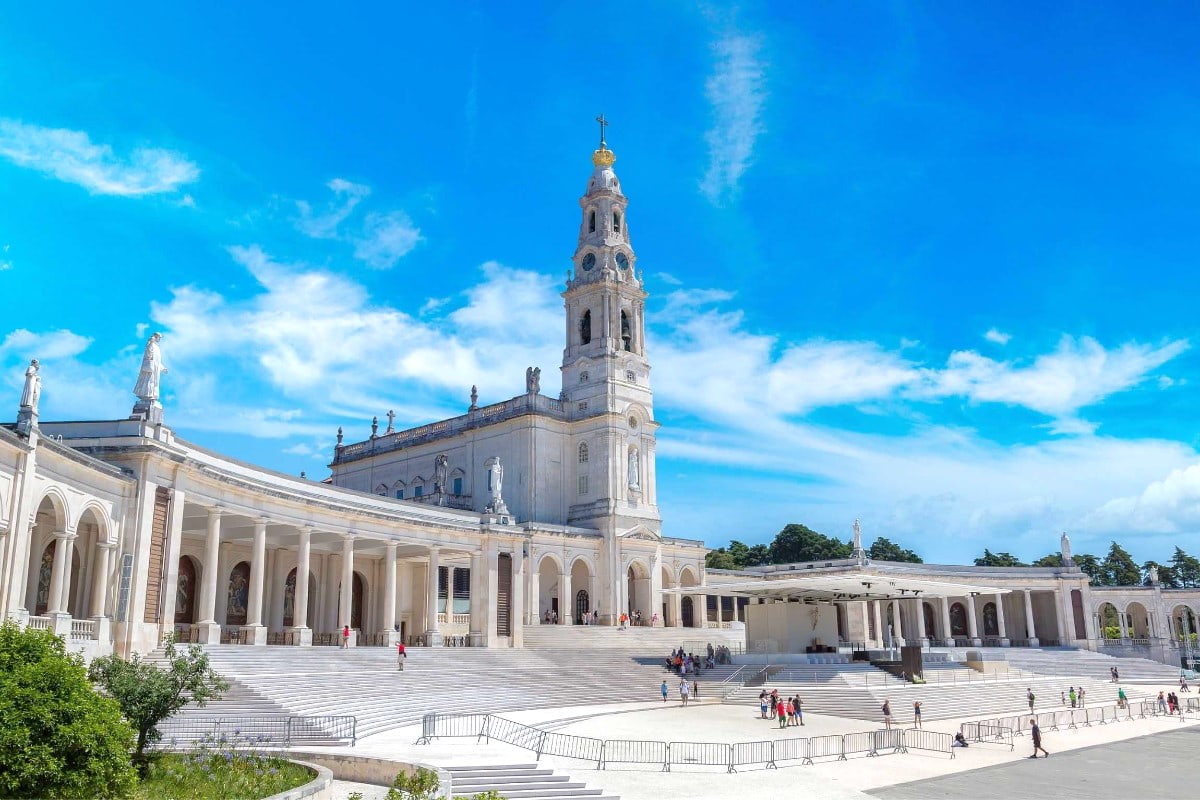
People watching. Sitting on one of the many free benches surrounding the main square, I observed fascinating human moments – joyful reunions, silent prayers, and the diverse expressions of faith from visitors worldwide. This provided cultural insights no museum could offer.
Seasonal beauty. The grounds transform throughout the year with seasonal plantings. My spring visit coincided with blooming olive trees and colorful flower beds, while friends who visited in autumn described the beauty of changing foliage against the white buildings.
Money-saving tip: The sanctuary grounds are beautifully illuminated at night, offering a completely different atmosphere than daytime visits. I saved on evening entertainment by simply enjoying these free illuminations rather than paying for nighttime activities.
2. Prayer Area
Spiritual center. The massive prayer area forms the heart of the sanctuary complex. Regardless of your religious beliefs, the peaceful atmosphere in this vast open space offers a rare opportunity for quiet reflection that costs nothing but delivers immense value.
Candlelight experience. One of my most memorable evenings in Fátima involved purchasing an inexpensive candle (€1) and joining others in the candle burning area. The collective glow of thousands of flames against the night sky created a magical atmosphere.
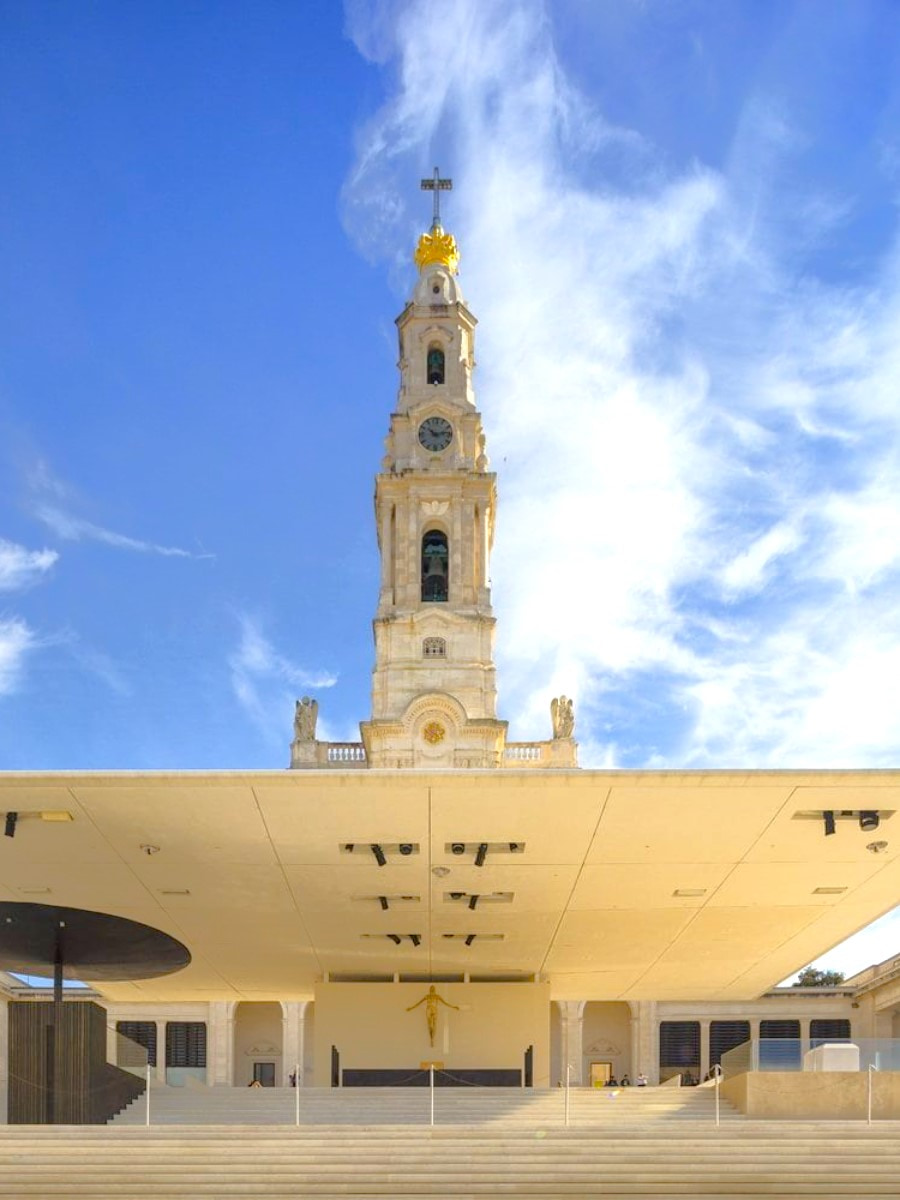
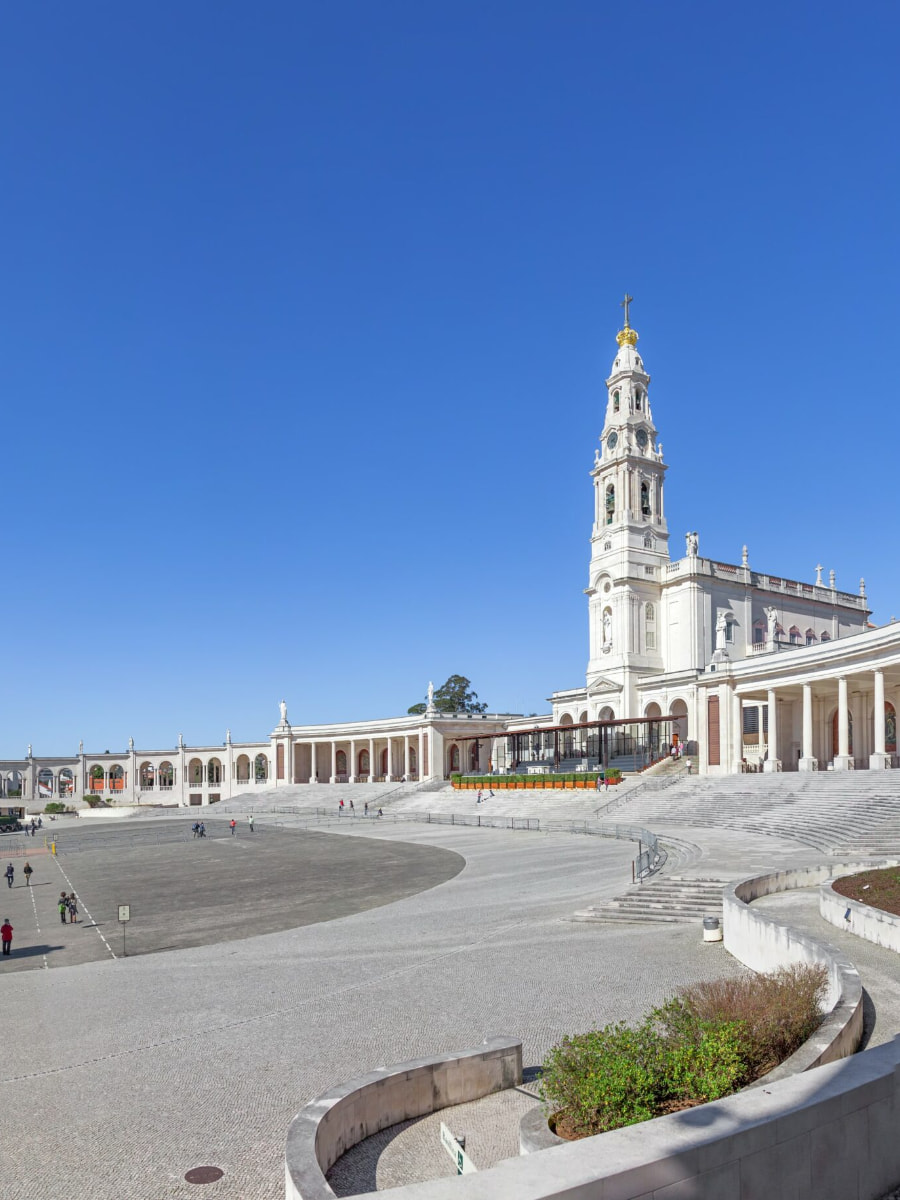
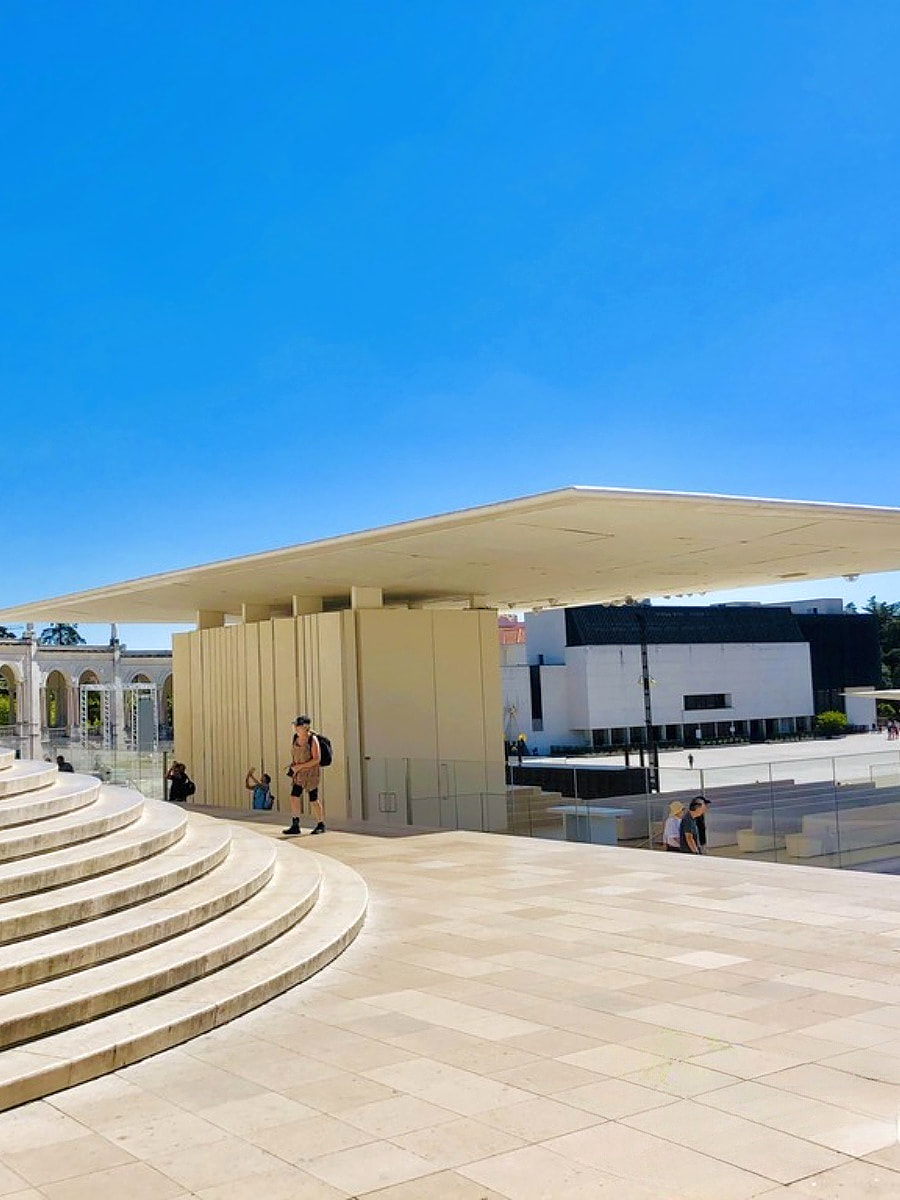
Ceremony observation. Timing my visit to coincide with the free daily rosary processions allowed me to witness moving expressions of faith without any cost. The evening candlelight procession particularly impressed me with its solemn beauty and community feeling.
Architectural perspective. The prayer area provides the best vantage point to appreciate the sanctuary’s architectural harmony. From here, I could compare the classical Basilica of Our Lady of the Rosary with the modern Basilica of the Most Holy Trinity.
Weather consideration. This vast open space offers little shade, so I recommend bringing a hat and water during summer visits. In winter, the open area can be quite windy and cold – layers are essential for comfort during longer periods of observation.
3. Parish Church of Fatima
Hidden gem. Most visitors miss the original parish church where the three shepherd children were baptized. Located away from the main sanctuary complex, this authentic 18th-century church offers a glimpse into pre-apparition Fátima when it was just a small rural village.
Architectural contrast. After the grandeur of the basilicas, I found the humble simplicity of this parish church refreshingly authentic. The modest stone building with its single bell tower represents Portuguese village churches that have served communities for centuries.
Historical perspective. The baptismal font where Lucia, Francisco, and Jacinta were baptized remains in use today. Standing beside it, I reflected on how these ordinary village children from this small church would eventually transform Fátima into a worldwide pilgrimage destination.
Local worship. Unlike the international atmosphere of the sanctuary, this parish church serves the local community. Attending a regular Sunday Mass here allowed me to experience authentic Portuguese Catholicism alongside residents rather than tourists.
Practical advantage. During major pilgrimages when the sanctuary becomes overwhelmingly crowded, this parish church offers a peaceful alternative for prayer and reflection. I appreciated finding a quiet corner here when the main sites became too busy for comfort.
Parish Church highlights:
- Original 18th-century architecture and furnishings
- Baptismal font of the three shepherd children
- Traditional Portuguese religious art
- Local community atmosphere
- Visitor book for leaving personal reflections
Seasonal Activities
Christmas in Fatima
Festive traditions. Christmas in Fatima offers a unique spiritual experience with celebrations beginning on December 24th. The evening starts with family gatherings called Consoada, followed by the Madeiro – a huge controlled bonfire lit outside churches to “warm baby Jesus’ feet.” These fires sometimes burn throughout the night, creating a warm community atmosphere.
Christmas Eve highlights:
- Family gatherings (Consoada)
- Madeiro bonfire lighting
- Office of Reading at 22:20
- Holy Mass of the Nativity at 23:00
- Missa do Galo (Midnight Mass)
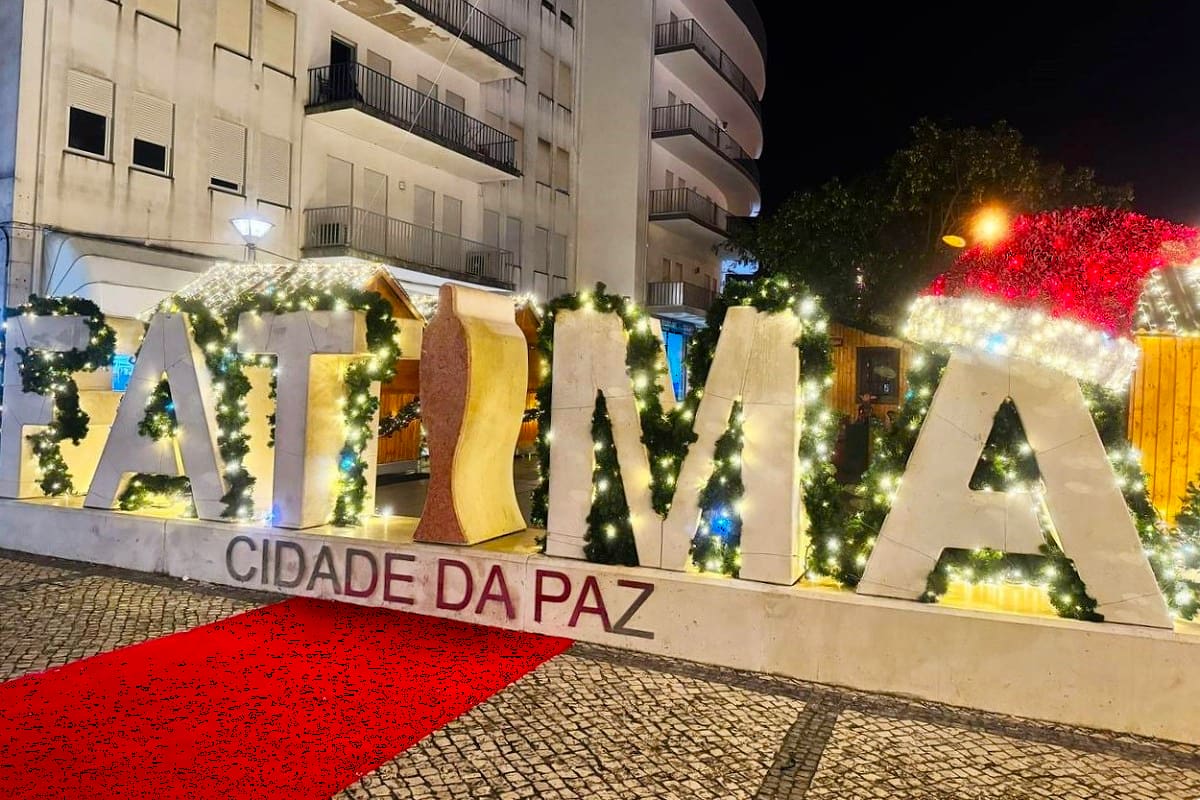
Christmas Day. On December 25th, multiple Masses are held throughout the day at both the Basilica and the Most Holy Trinity Church at 07:30, 09:00, 11:00, 12:30, 15:00, 16:30, and 18:30. Each service includes the traditional “osculation of the Child Jesus.” The day concludes with Sung Vespers at 17:30 in the Basilica.
Portuguese Christmas traditions:
- Building presépios (nativity scenes)
- Using fresh moss and wooden huts
- Including figures of Mary, José, baby Jesus, and the three Maji
- Adding ceramic animals to symbolize Christ’s humble beginnings
Summer Festivals and Events
May pilgrimage. The most significant summer event in Fatima occurs on May 13th, commemorating the first apparition of Our Lady to the three shepherd children in 1917. This International Anniversary Pilgrimage draws thousands of pilgrims from around the world to the Sanctuary of Our Lady of Fatima.
May 13th events:
- International Mass
- Processions
- Rosary recitations
- Blessing of the sick
October celebrations. The final major pilgrimage of the year takes place on October 12-13th, marking the last apparition and the Miracle of the Sun.
October 12-13th program:
- Rosary recitations in different languages
- Special candlelight procession (12th)
- International Mass (13th)
- Blessing of the sick (13th)
- Farewell procession (13th)
Spring Blooms in Natural Parks
Natural awakening. Spring (April to June) brings mild temperatures and blooming landscapes to the region around Fatima. This is an ideal time to explore the nearby Serras de Aire e Candeeiros Natural Park, where the chalk massif terrain comes alive with wildflowers and renewed vegetation.
Spring highlights in Serras de Aire e Candeeiros Natural Park:
- Blooming wildflowers
- Renewed vegetation
- Mild temperatures
- Increased wildlife activity
Autumn Foliage Walks
Scenic trails. Autumn, particularly September and October, provides comfortable temperatures for exploring the walking paths around Fatima. The summer crowds diminish, creating a more peaceful atmosphere for enjoying the changing colors of the landscape.
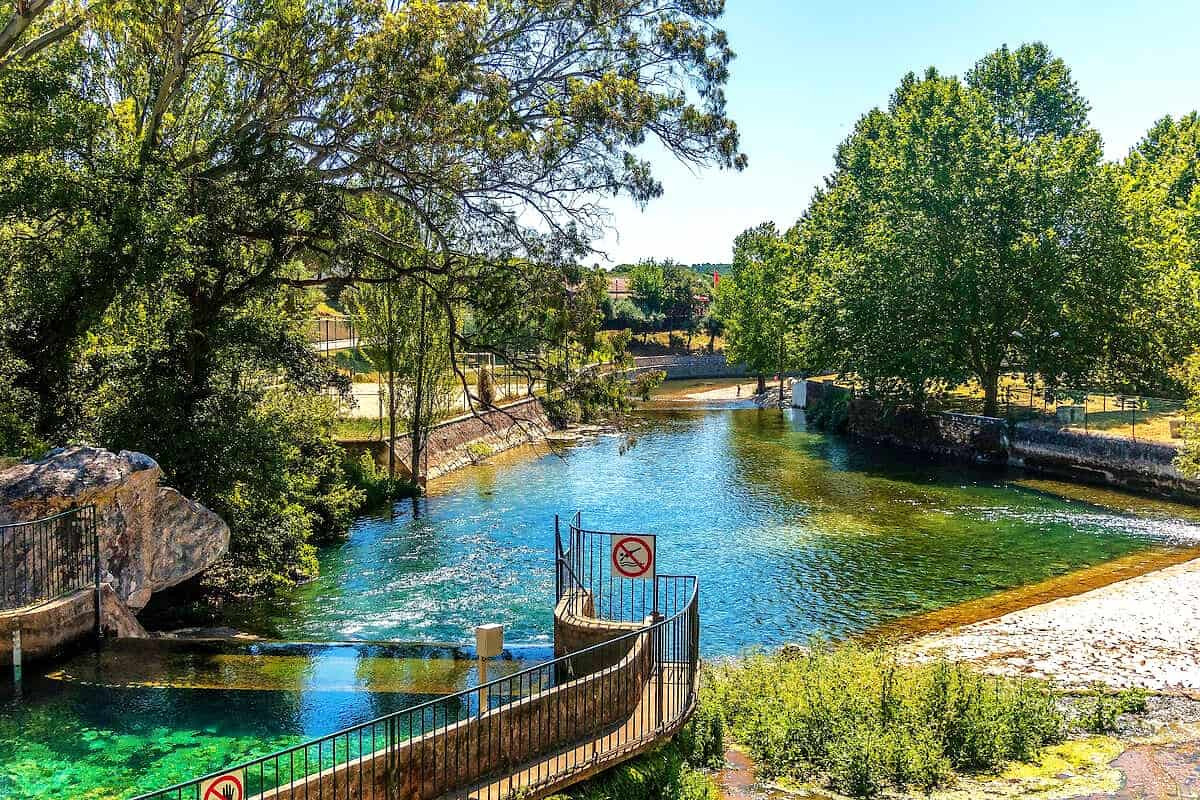
Autumn walking highlights:
- Comfortable temperatures
- Fewer crowds
- Colorful foliage
- Peaceful atmosphere
Pathways. The area around Valinhos Sanctuary, about 2 km from the main sanctuary, offers beautiful autumn foliage walks. The Hungarian Calvary path features 14 chapels representing the Stations of the Cross, making for a reflective journey through the colorful autumn landscape.
Day Trips from Fatima
1. Coimbra
University city. Just 54 minutes north of Fatima, Coimbra is home to one of Europe’s oldest universities and the magnificent Joanine Library. The city combines historical landmarks with a vibrant student atmosphere.
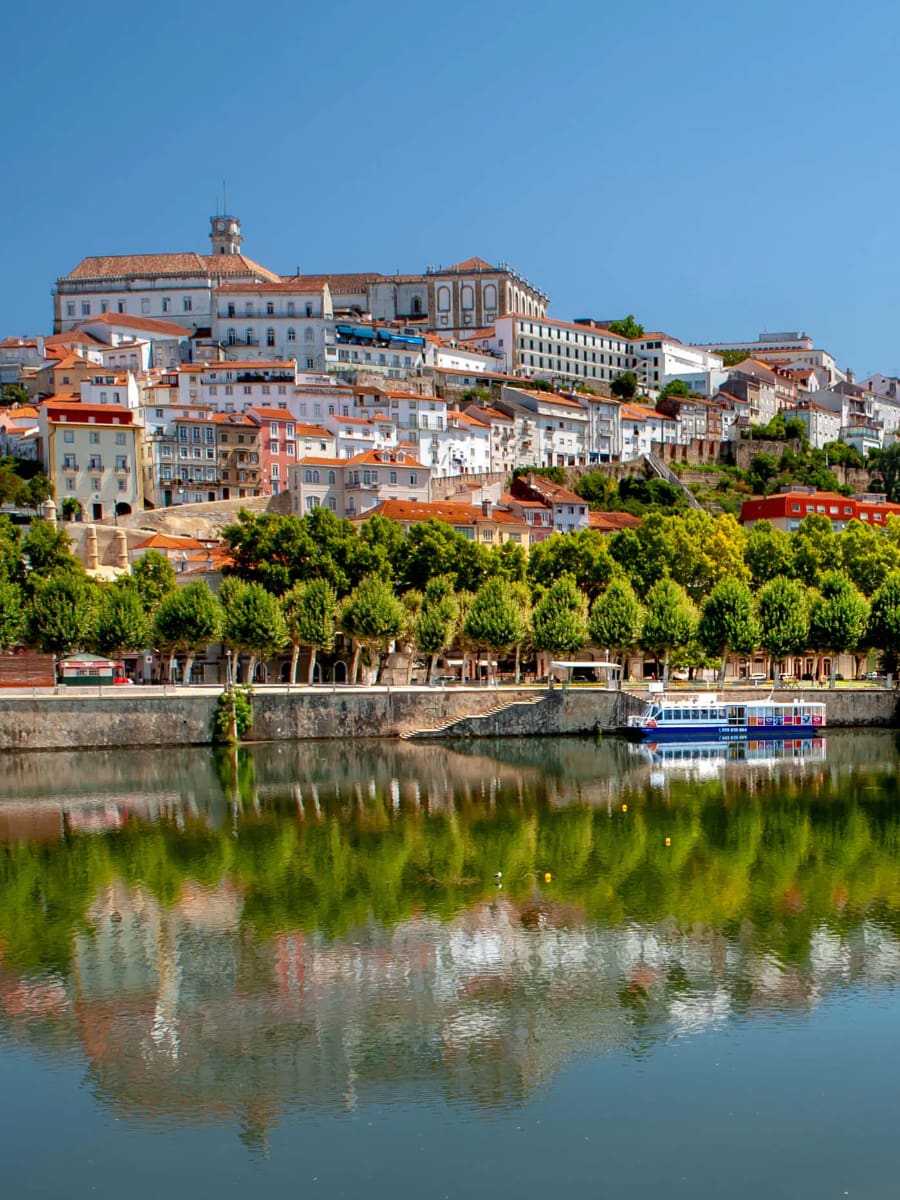
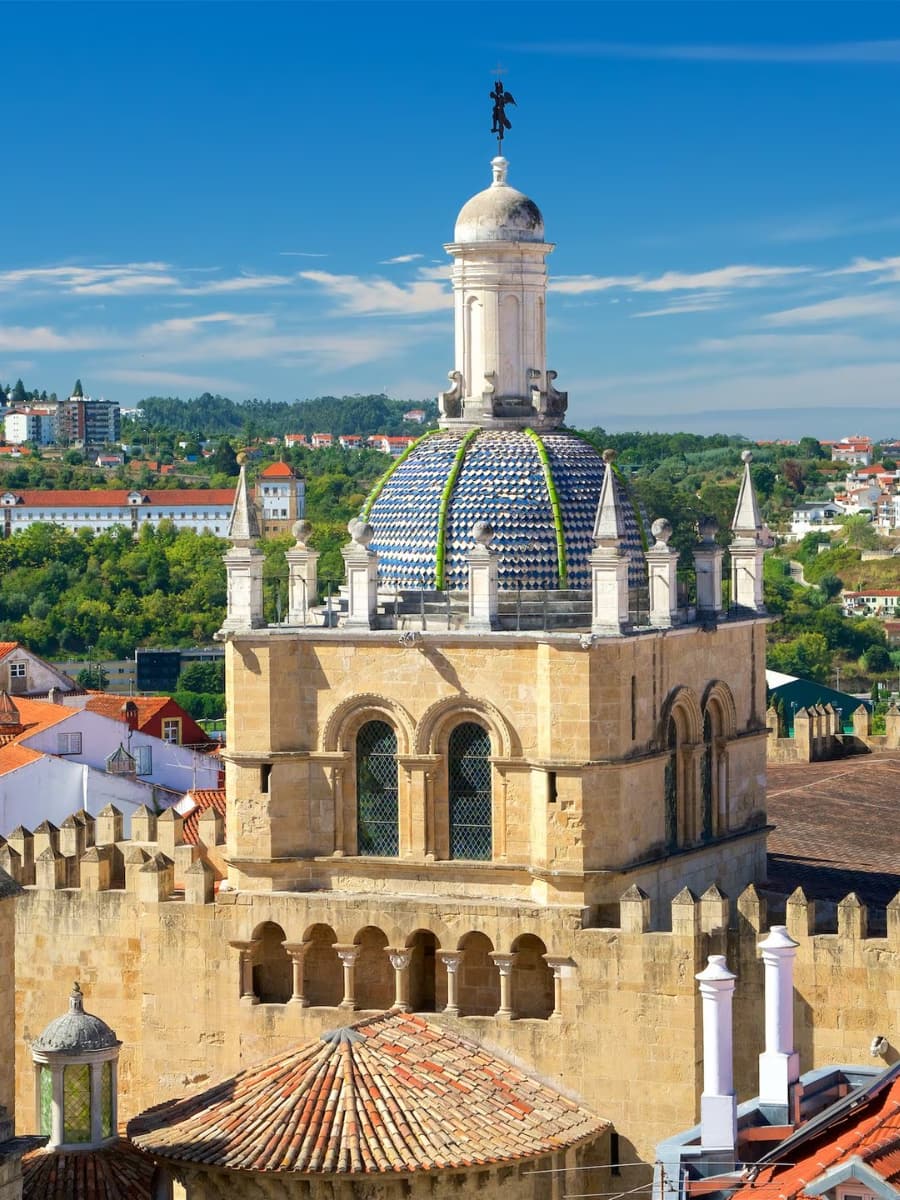
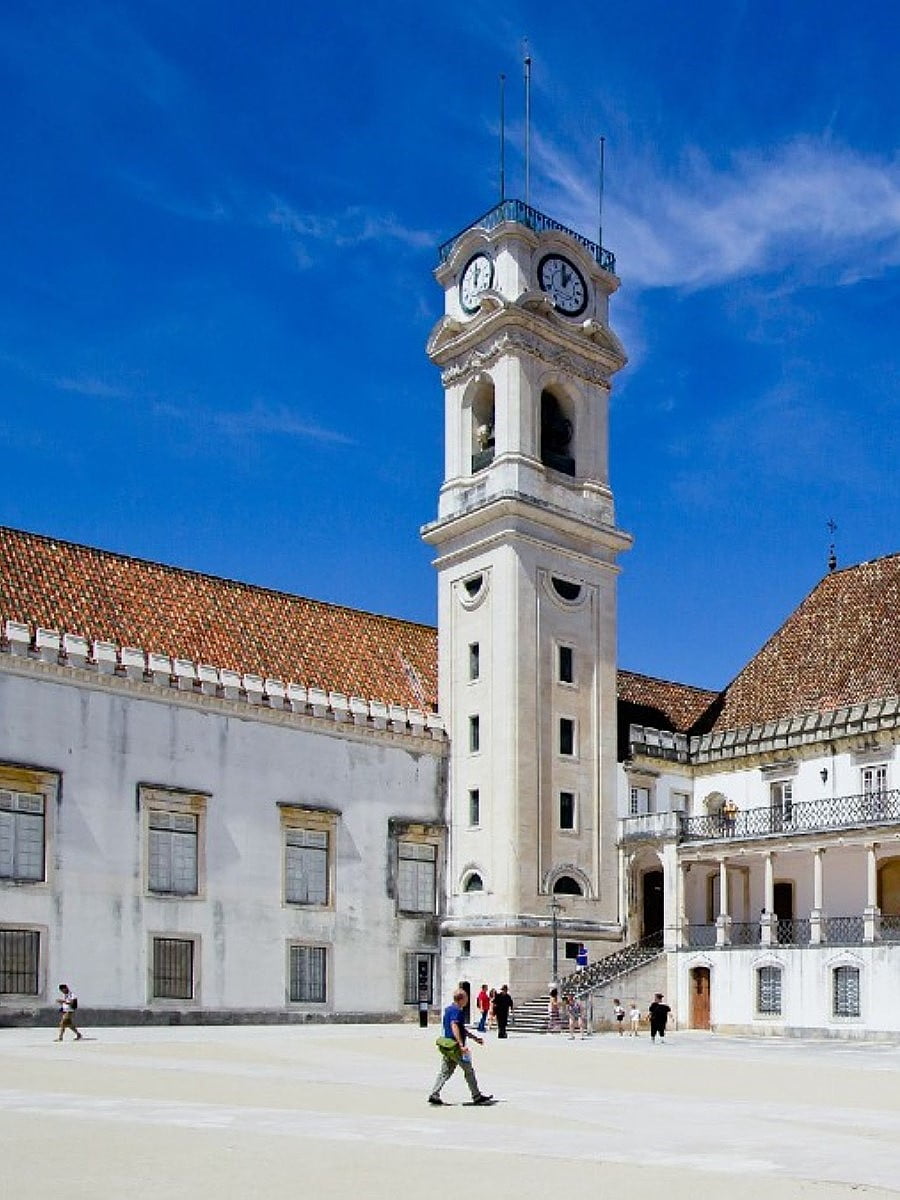
Must-see attractions in Coimbra:
- University of Coimbra (founded in 1290)
- Joanine Library
- Medieval old town
- Old Cathedral (Sé Velha)
- Santa Cruz Monastery
Cultural highlights. Visitors can explore the University of Coimbra and experience the Queima das Fitas (Burning of the Ribbons) graduation festivities if visiting in May (19th-26th). This colorful celebration features parades, concerts, and traditional academic rituals.
⭐ Best Activities
- University of Coimbra Guided Tours Without Queue – Skip the lines at one of Europe’s oldest universities on this guided tour of Coimbra University, a perfect addition to your Fatima visit when exploring central Portugal.
2. Obidos
Medieval charm. Located about 50 minutes west of Fatima, Obidos is a perfectly preserved medieval walled town. With approximately 3,100 residents, this charming settlement features narrow cobblestone streets and traditional painted houses encircled by ancient walls.
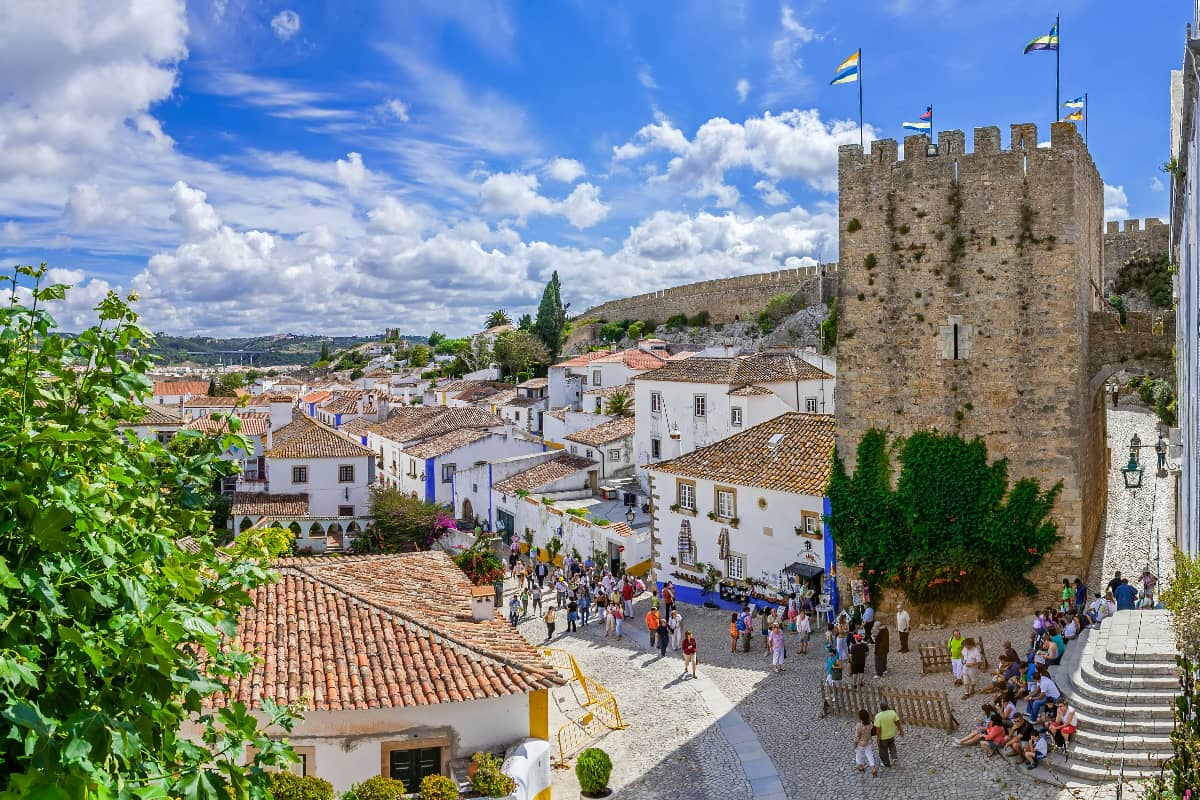
Obidos highlights:
- Castelo do Obidos (now a Pousada)
- Fortress walls with panoramic views
- 14 bookstores throughout the town
- Igreja de Santa Maria church
- Acueducto de Obidos (built in 1575)
- Main church (site of King Afonso V’s marriage)
Literary destination. Despite its small size, Obidos boasts 14 bookstores throughout the township, earning it recognition as a town of literature. The Igreja de Santa Maria church is also worth visiting for its beautifully painted ceiling and blue-and-white azulejos (tile work).
⭐ Best Activities
- Medieval Obidos History and Tasting – Complement your Fatima experience with a visit to the charming medieval walled town of Obidos, where you can explore historic streets and sample local specialties on this engaging tour.
FAQ❔
How to get to Fatima from Lisbon?
You can reach this sacred destination by car in about 90 minutes via the A1 highway from Lisbon. Alternatively, regular bus services run from Lisbon’s Sete Rios terminal to the central bus station in Cova da Iria.
What is the Miracle of Fatima about?
The Miracle refers to extraordinary solar phenomena witnessed by thousands of people in October 1913. Witnesses reported seeing a spinning disc in the sky that changed colors and appeared to plummet toward earth before returning to normal position.
When is best time to visit Portugal’s shrine?
May 13th and October 13th mark significant commemorative dates with special ceremonies at the holy site. For those seeking a quieter experience, weekdays during April, June, or September offer pleasant weather and fewer crowds.
Are there dinosaur footprints near Cova da Iria?
The Estremadura limestone massif houses remarkable prehistoric tracks dating back 175 million years. Located about 10 kilometers from the religious center, these well-preserved footprints form the longest sauropod trackway in the world.
What can children see at Fatima’s attractions?
Children can explore the village of Aljustrel where the young visionaries lived and view their modest homes. They’ll also enjoy the interactive exhibits showing rural life in central Portugal during the early 20th century.
How long should my visit to Fátima last?
A meaningful experience requires at least one full day to see the main religious sites in Cova da Iria. Adding a second day allows exploration of surrounding attractions like the Monument to the Sacred Heart of Jesus and nearby natural wonders.
Can I combine Fátima and Coimbra in one trip?
These two important destinations in central Portugal are just 54 minutes apart by car. Many visitors spend morning hours at religious sites before heading to Coimbra to explore one of Europe’s oldest universities and the magnificent Joanine Library.
What souvenirs to buy in central Portugal?
Religious items like rosaries and statues of Nossa Senhora do Rosário make meaningful mementos of your spiritual journey. Local handicrafts including ceramics, embroidery, and olive wood carvings also represent the region’s cultural heritage.
Where did the three children report seeing visions?
The young visionaries encountered their first divine experience while tending sheep in the Cova da Iria area. This spot, where the Basilica of the Holy Trinity now stands, transformed from humble pastureland to one of Christianity’s most significant sites.
How to plan a day trip from Lisbon?
Book an organized tour that includes transportation and a knowledgeable guide to maximize your experience in limited time. Self-driving visitors should depart Lisbon by 8:00 AM to arrive before the crowds and have sufficient time to explore the religious complex and surrounding points of interest.
